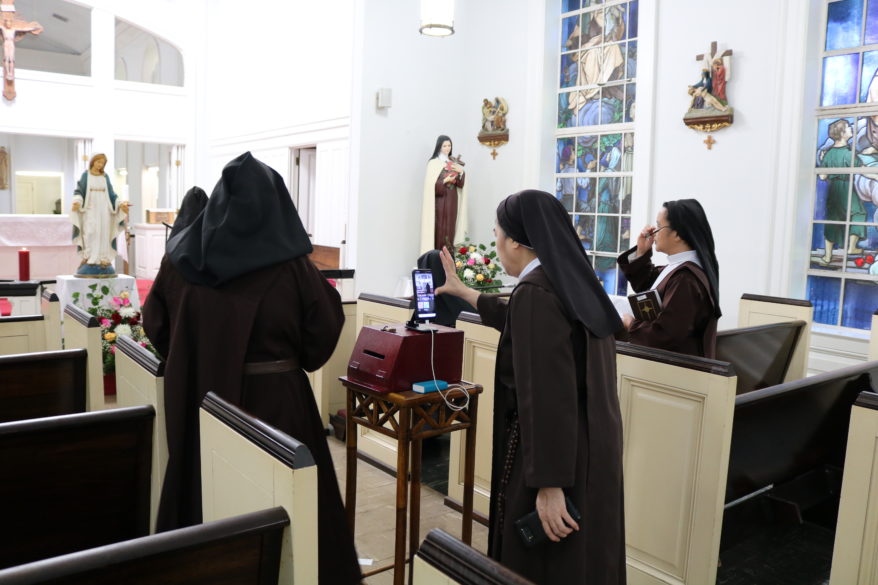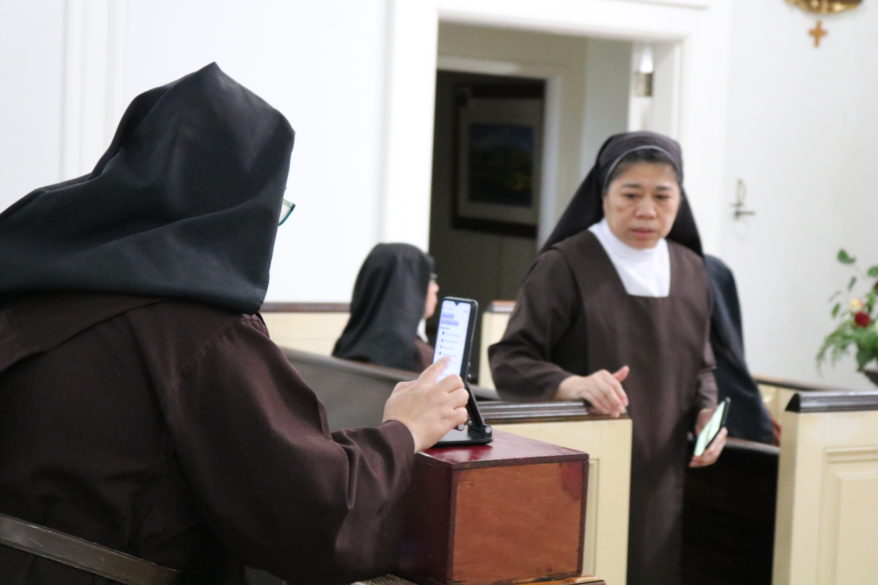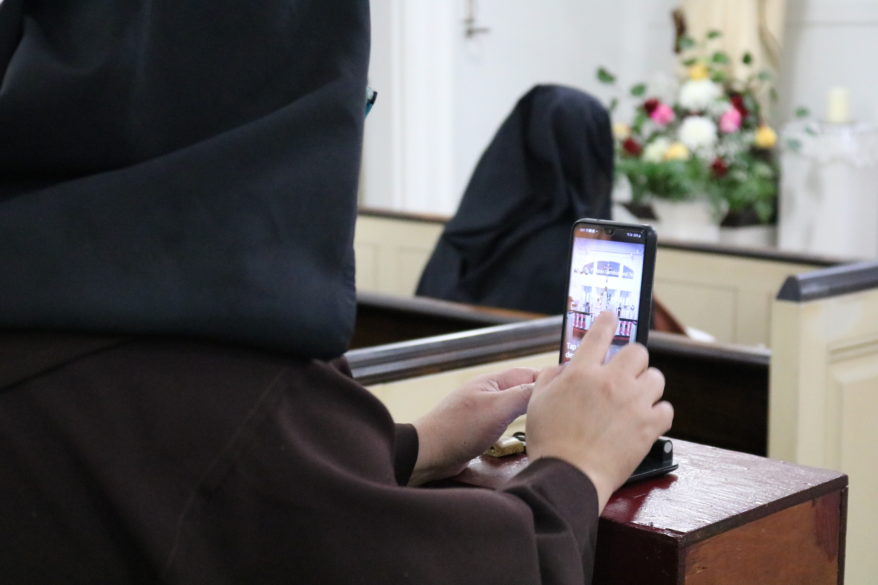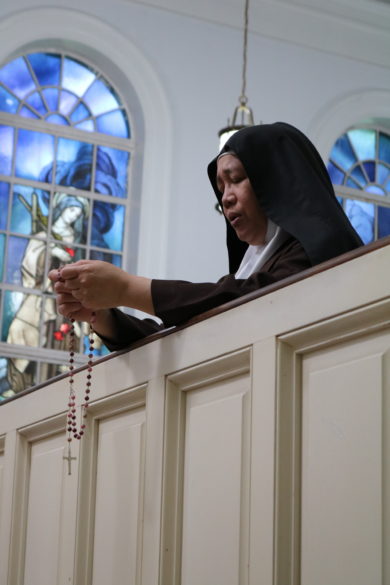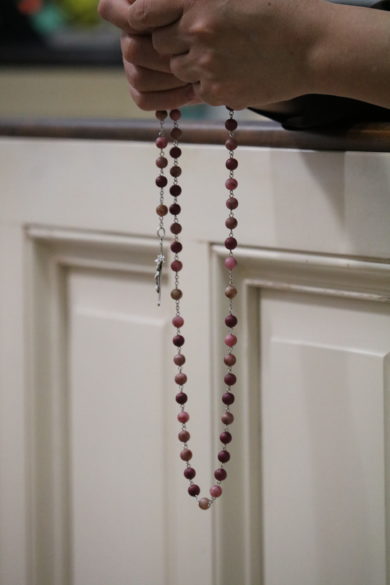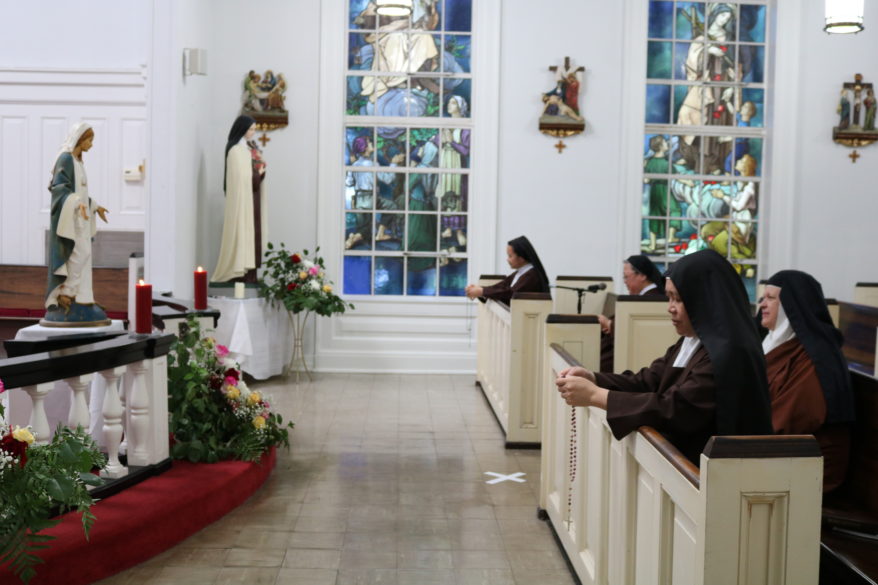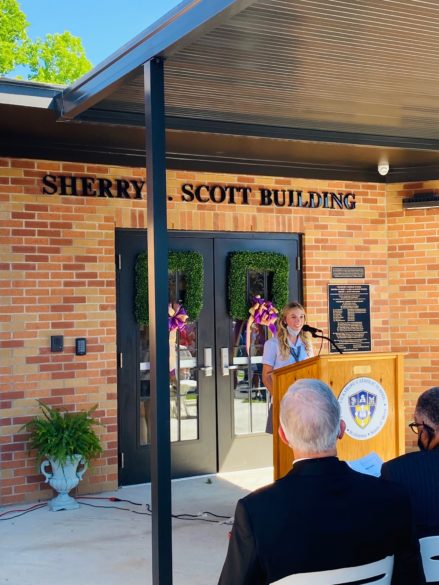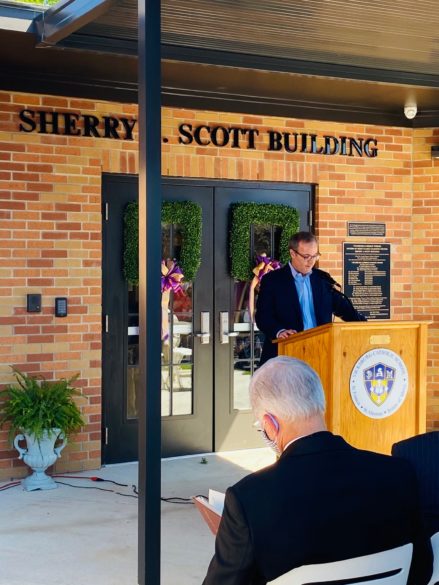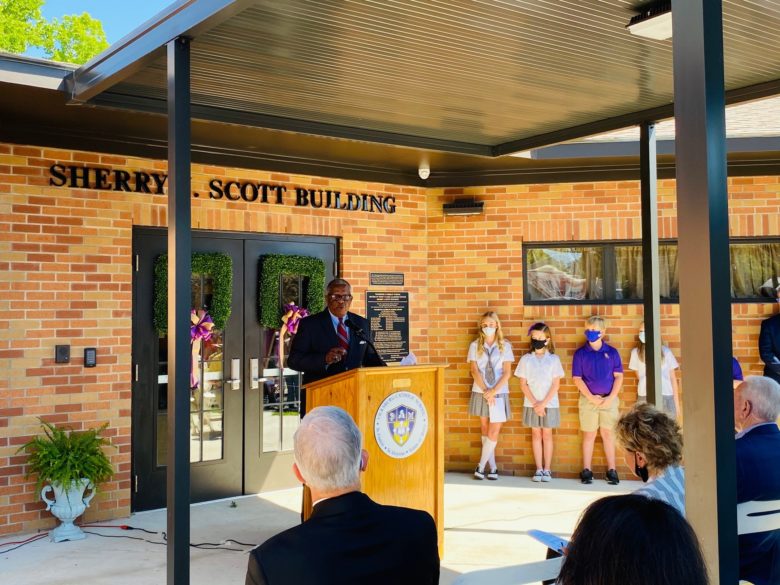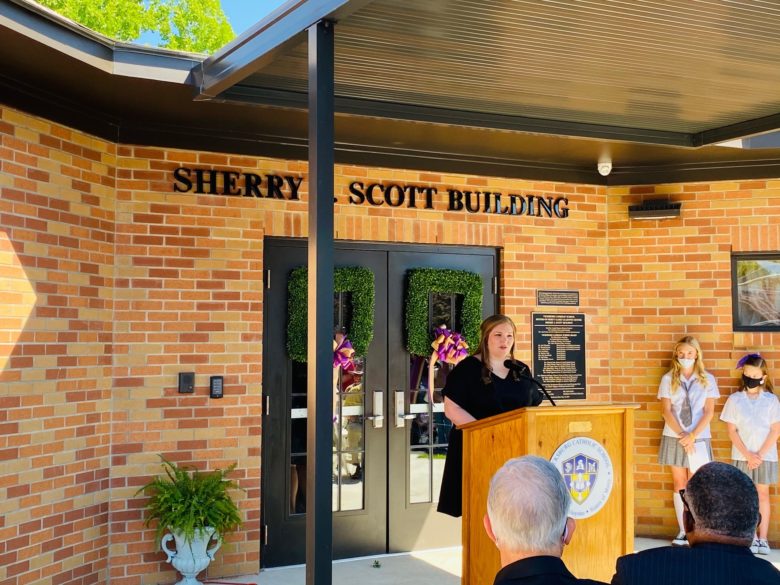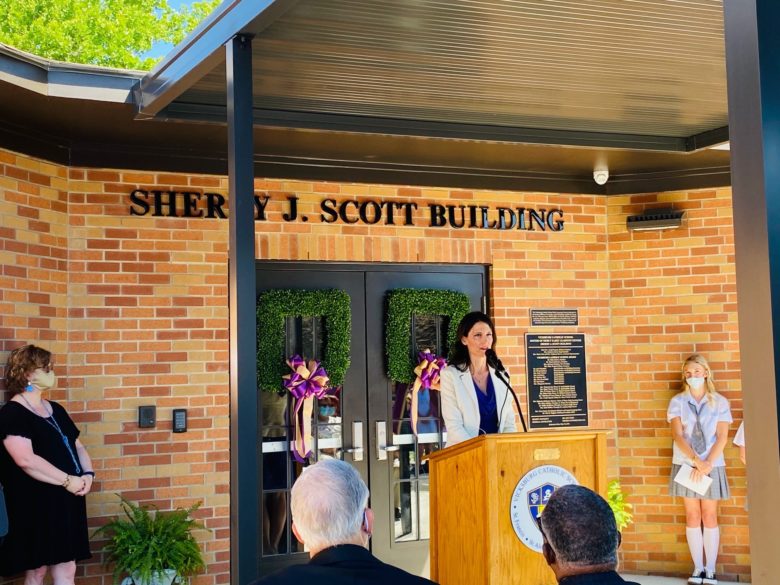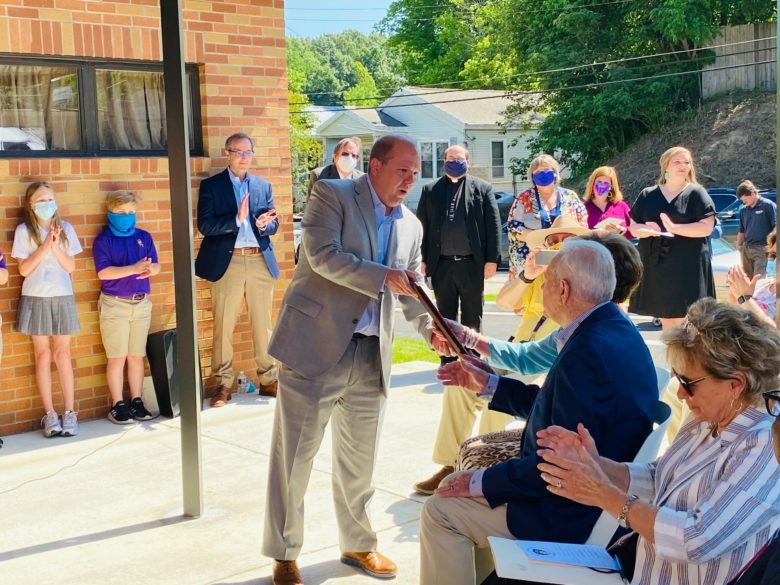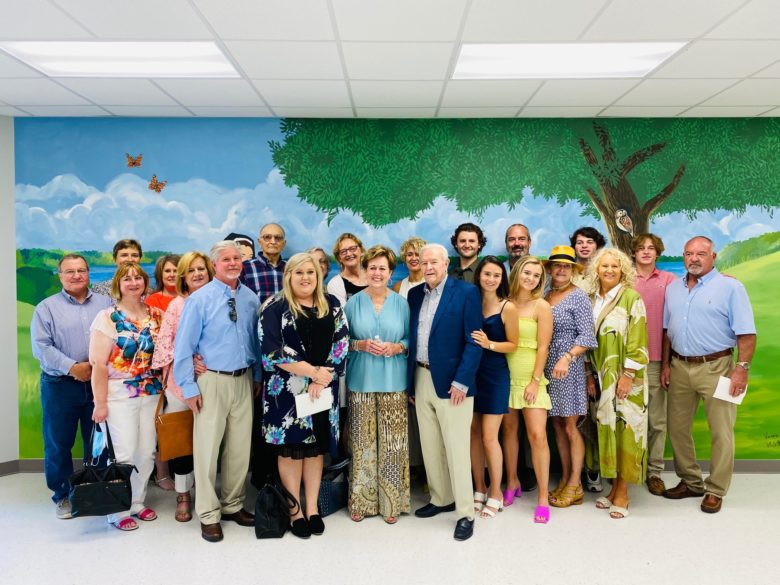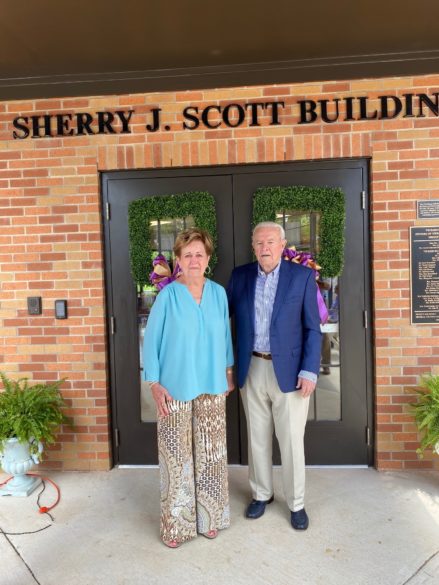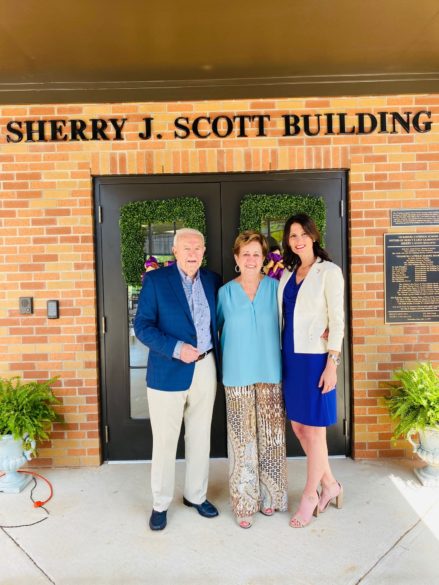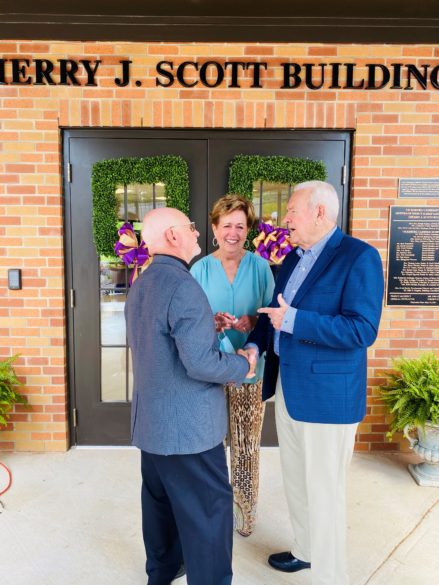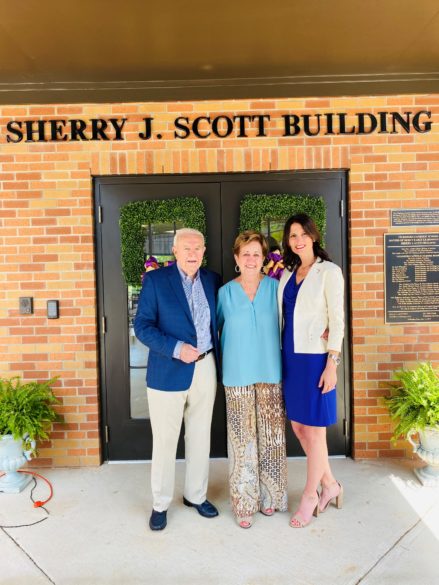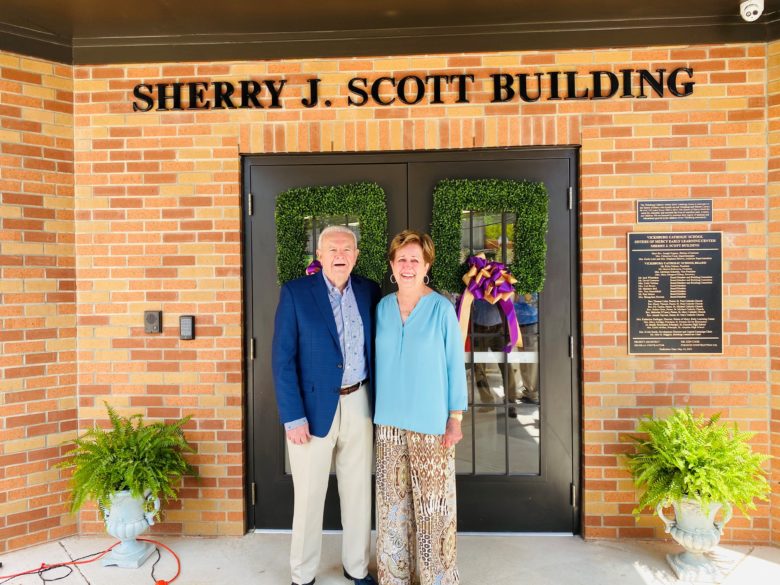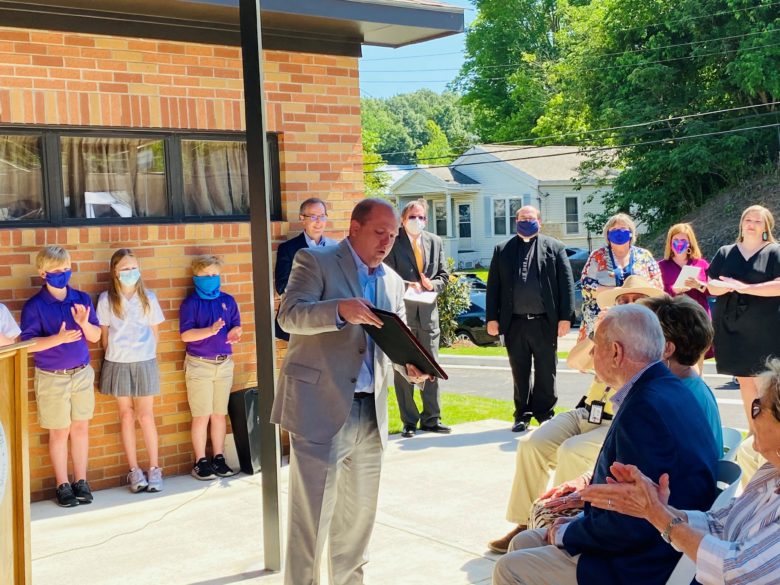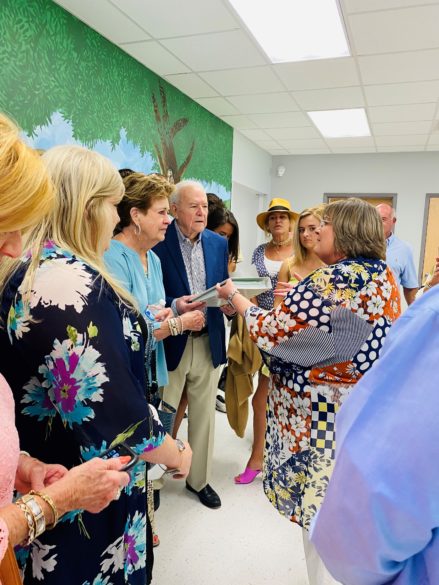JACKSON – The Carmelite sisters set up livestreaming at their Monastery for the Worldpriest Annual Global Rosary Relay for the sanctification of priests on Friday, June 11. The sisters prayed the sorrowful mysteries to unite with others around the country and help encircle the world in prayer. This year over 2,600 locations participated around the world. The date for next year’s rosary relay will be Friday, June 24, 2022 on the feast of the Sacred Heart of Jesus. For more information visit www.worldpriest.com. (Photos by Tereza Ma)
Category Archives: Diocesan News
Bishop Joseph Latino – farewell humble shepherd
By Joanna Puddister King
JACKSON – The late Bishop Emeritus Joseph N. Latino, retired bishop of Jackson, who died May 28 at the age of 83 is remembered as a gentle and humble shepherd.
A native of New Orleans, Bishop Latino was ordained a priest for the Archdiocese of New Orleans at St. Louis Cathedral on May 25, 1963. During his priesthood, Bishop Latino served in parishes in New Orleans, Metairie, Houma and Thibodaux. When the Diocese of Houma-Thibodaux was formed in 1977, he remained in the new diocese and served in many capacities including chancellor and vicar general. In 1983, Pope John Paul II named him a Prelate of Honor with the title of Monsignor.
He was appointed the 10th Bishop of Jackson on Jan. 3, 2003 and was installed on March 7, 2003 in the Cathedral of St. Peter the Apostle in Jackson, the place of his final resting place.
Msgr. Elvin Sunds, who served as vicar general for nine years under Bishop Latino and enjoyed his friendship for many years afterward, described him as a “humble, gentle and kind bishop.”
In his homily at a prayer vigil for Bishop Latino on June 8 at the Cathedral, Msgr. Sunds spoke about Bishop Latino’s episcopal motto – Ut Unum Sint – “that all may be one.”
The motto came from the Gospel passage of John that was read at the vigil, explained Msgr. Sunds. “In that Gospel Jesus is praying for his disciples, and he also prays, ‘For those who will believe in me through their word, that they may all be one, as you, Father, are in me and I in you, that they also may be in us.’”
“Jesus’ prayer is that through the proclaiming of the Gospel, may we all share together in the life of God as one. That was the motto and the focus of Bishop Latino’s episcopal ministry. He wanted all of us to be one in Christ Jesus. He promoted that unity in Christ,” said Msgr. Sunds.
During his years as bishop, Bishop Latino fostered Gospel-based social justice initiatives, lay leadership and vocations. During his tenure the office for the Protection of Children was established to help insure a safe environment for children in our churches, schools and communities.
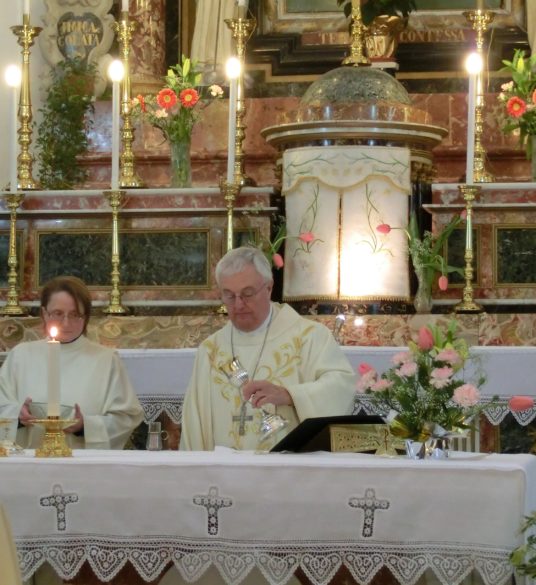
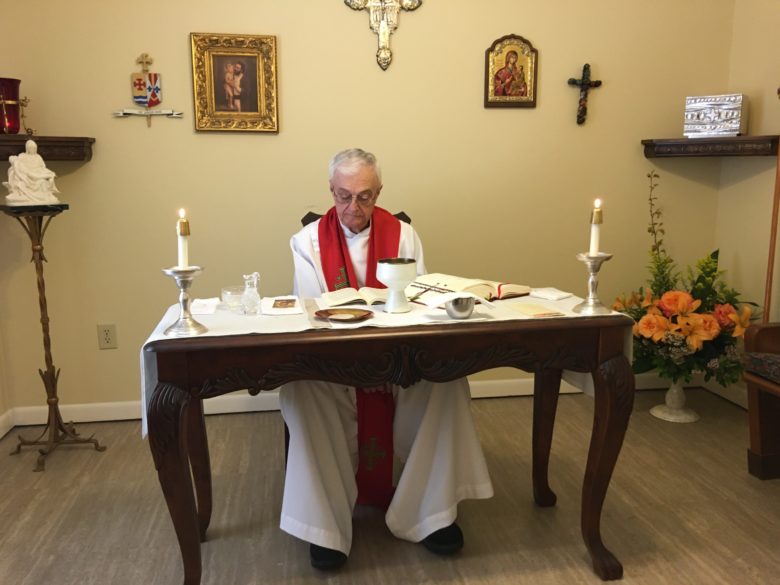
Msgr. Sunds described Bishop Latino’s social justice work mentioning that he publicly addressed such issues as racism, the rights of immigrants, care for the poor, the death penalty, and the right to life of the unborn during his tenure.
Bishop Latino’s nephew and godson, Martin Joseph Latino delivered remarks about ‘Uncle Joe’ at the vigil service sharing stories of humor, of mystery and a little bit about his favorite movie “A Man for All Seasons.”
It is still as mystery to Martin Latino how his Uncle Joe was able to call him in the aftermath of Hurricane Katrina. At the time, Latino was the chief director of safety and was with the Mandeville Fire Department. With all of the cell towers down in the area, no one was able to receive any calls, but Uncle Joe got through.
“His message to me that day was don’t lose heart. Work hard. Restore your community. Be a leader and keep everyone safe. … I still to this day do not know how he was able to get through,” said Latino.
In attendance at the Mass of Christian Burial on June 9, were bishops from around the region with Archbishop Thomas J. Rodi of the Archdiocese of Mobile as celebrant, along with the priests of the Diocese of Jackson, seminarians, deacons and the people of the diocese. In his opening remarks, Archbishop Rodi extended his sympathy to Bishop Latino’s family, Bishop Joseph R. Kopacz and the people of the Diocese of Jackson.
“We gather here in sorrow over the loss of a powerful presence of a good man, a good priest, a good bishop, who in so many ways in his ministry blessed the people first in Louisiana, then in Mississippi,” said Archbishop Rodi.
During his homily at the funeral Mass, Bishop Kopacz recollected his first encounter with Bishop Latino seven and a half years ago at the Jackson airport. He recalled Bishop Latino smiling “to know he had a successor that was real,” laughed Bishop Kopacz. From that point the two grew in their friendship over the years and he shared stories of Bishop Latino’s background and interactions they had over the years through his last one hours before Bishop Latino’s death.
“My final encounter with Bishop Latino was sitting at his bedside within hours of his death, softly saying the rosary and praying … as he slowly passed from this world to the next. I spoke the words that he no longer could,” shared Bishop Kopacz.
He also gave thanks for Bishop Latino’s trustworthy service for nearly six decades, through times of strength and his experiences of accepting the changes in his health.
“In his retirement at times he grieved the physical limitations that prevented him from serving more actively in the diocese. But at the foot of the Cross, his ministry of prayer and presence was a treasure for us. And his early monastic formation served him well in his later years. He could be in that state for prayer and through it all he trusted in the Lord, who called him forth from his youth and in holy fear he grew old in God,” said Bishop Kopacz.
Diocesan chancellor, Mary Woodward also spoke at the vigil service on her special friendship with Bishop Latino, as he lifted up her talents, supported her and mentored her. The two of them, along with Bishop Houck, who passed in 2016, traveled to Rome many times. Woodward described the last trip they had to Rome for an ‘ad limina,’ where they also added a trip to Sicily to the Latino family’s ancestral hometown of Contessa Entellina.
Woodward described Bishop Latino as “energized” by the trip and said that he was excited that he would be able to celebrate a private Mass in the home church of his grandparents. “But when the doors opened the church was packed with the townspeople coming to see this bishop from America,” Woodward mused.
Bishop Latino was always there for her and she for him, making sure he was “ok” until the end of his earthly life, just as the women in the Gospel wanted to do for Jesus.
Most did not know that Bishop Latino was in constant pain for the last 40 years. “He had nerve pain in his legs and it never subsided,” said Woodward. “He bore that Cross with such grace and elegance.”
Through many surgeries over the years to help relieve the pain, Woodward often felt like a “cheerleader” who was there to “help him carry the Cross.”
“And that last day, … I felt like I went from helping him carry the Cross to being at the foot of the Cross. … It was a beautiful witness to ‘I’m in God’s hands. God’s going to take care of me. It’s ok,’” said Woodward who was with Bishop Latino up until his passing.
“I don’t ever think that I could say in a few minutes the profound impact he has had on me and on all of us.”
Woodward also took great care in organizing Bishop Latino’s vigil and Mass of Christian Burial, making sure all elements he wanted were included. As an “opera aficionado,” Woodward made sure to include some opera. During the vigil, Woodward included a piece from Cavalleria Rusticana by Pietro Mascagni. The significance being that Bishop Latino would come in most mornings into their shared office humming that tune. She even had to step away during the vigil upon hearing it.
“The witness of his life, the witness of him carrying that pain was something that strengthens me and I feel very privileged to have been able to walk that journey with him. I will be forever changed,” said Woodward.
“Well done, good and faithful servant.”
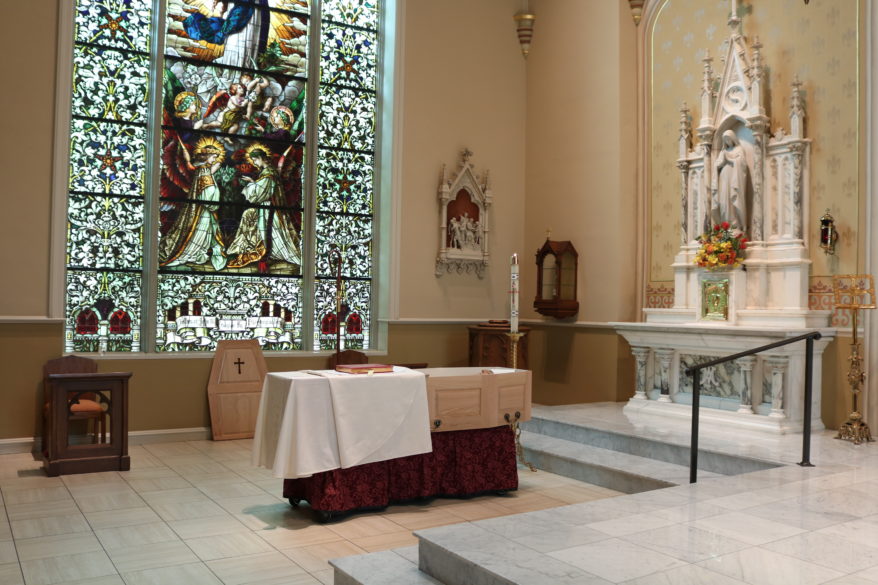
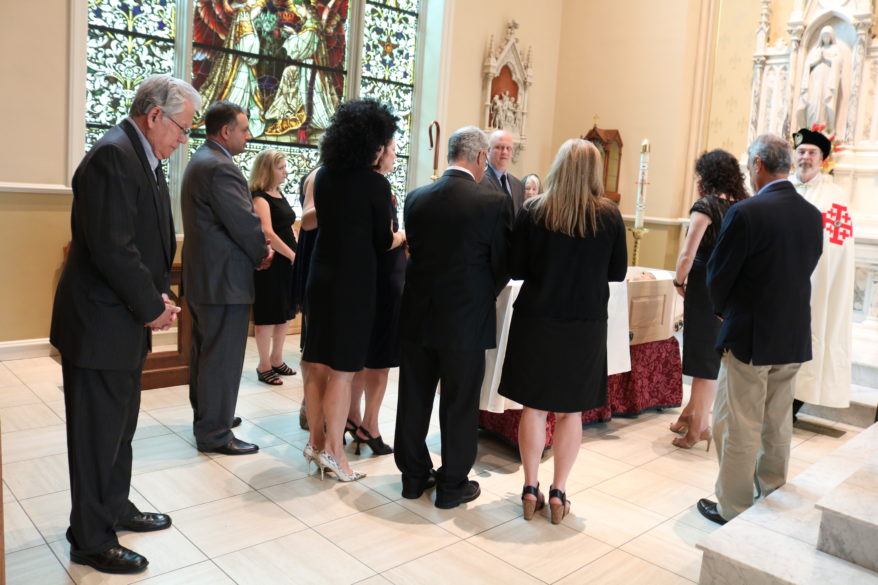
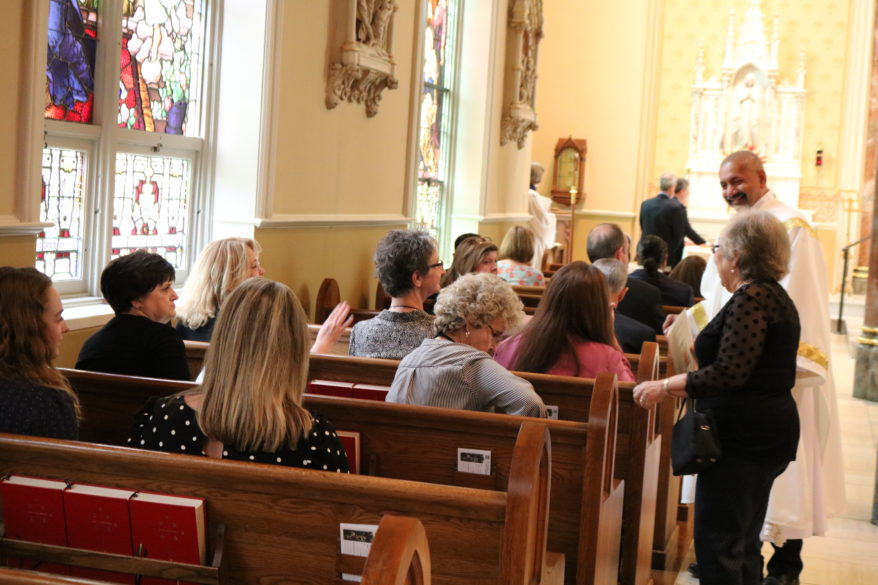
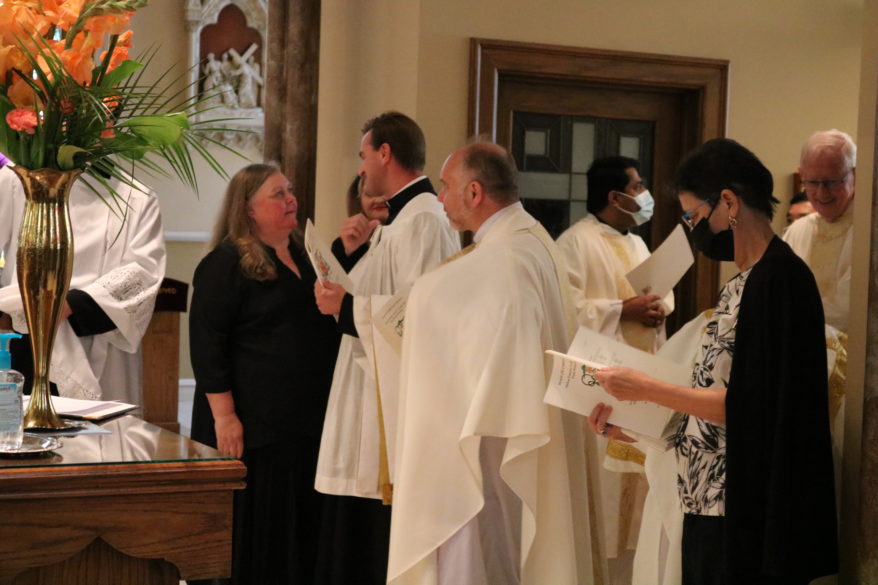
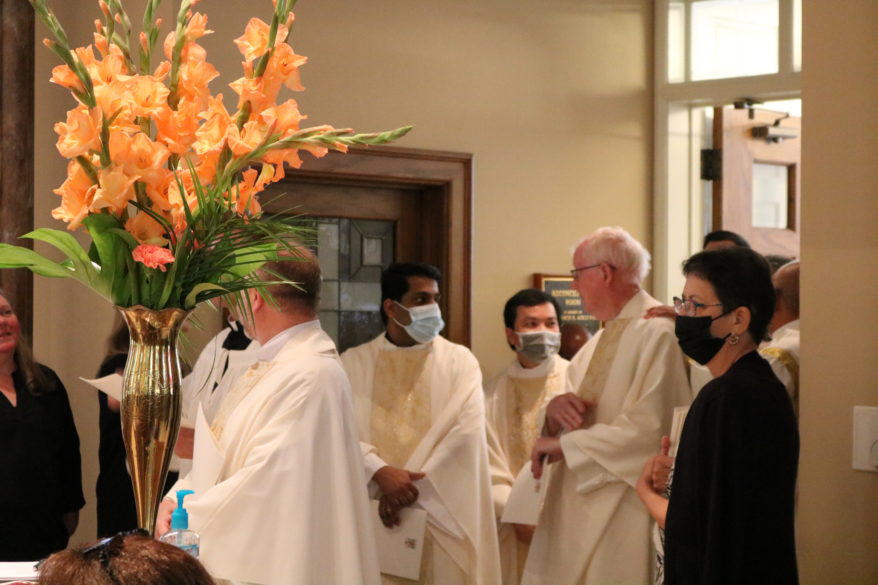

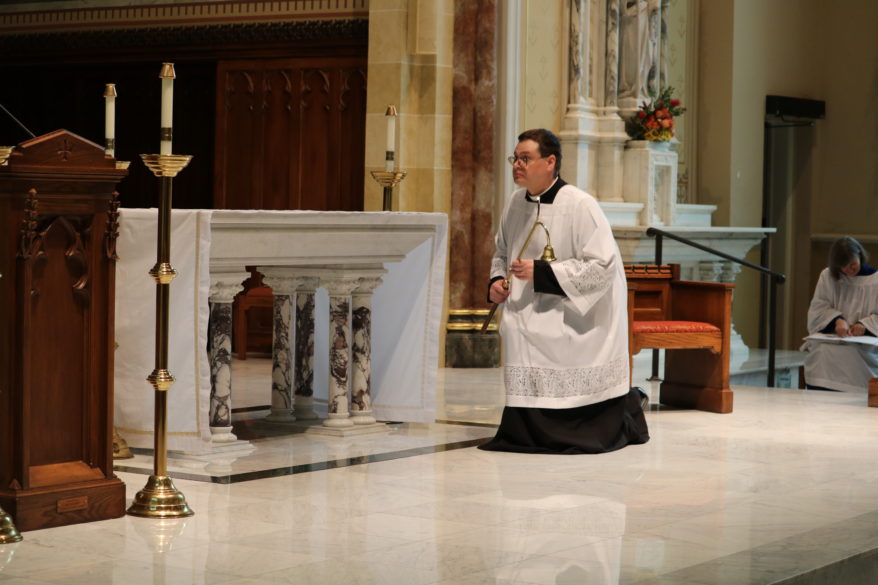
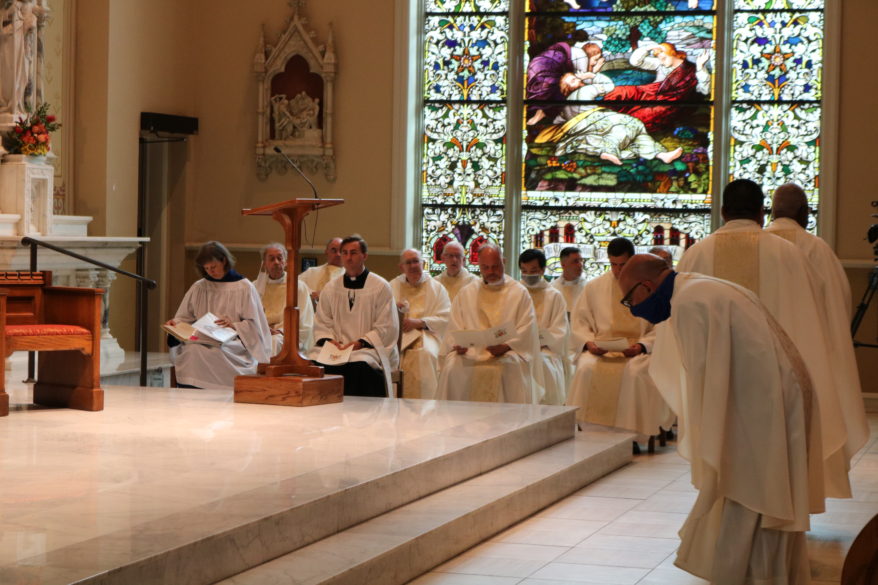
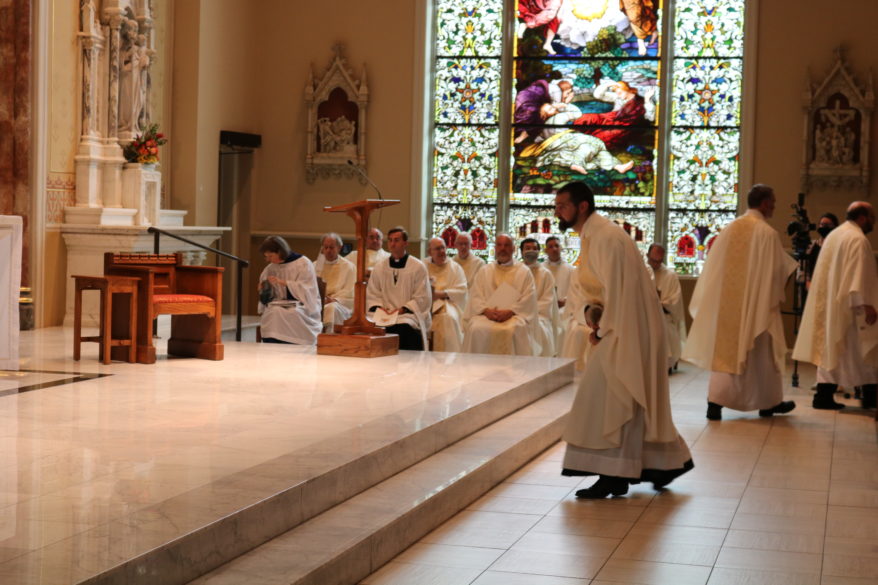
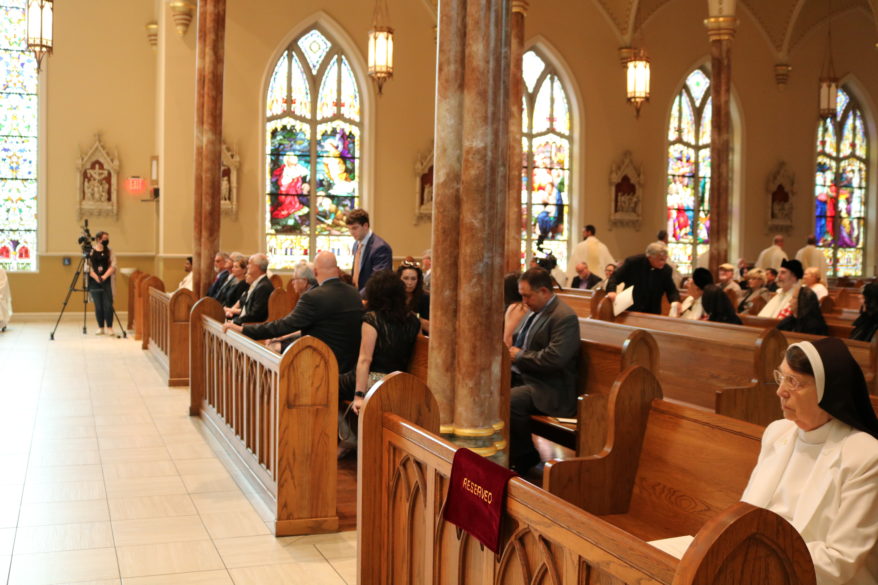
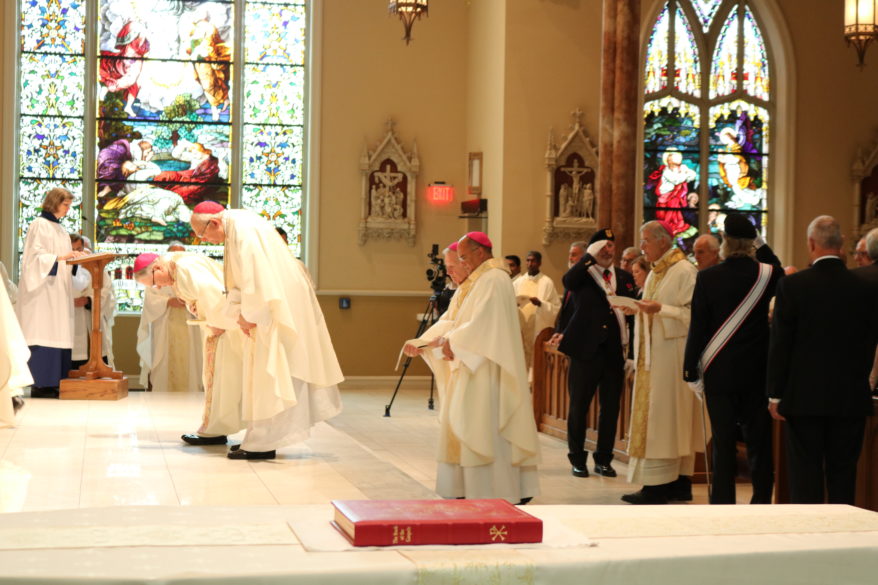
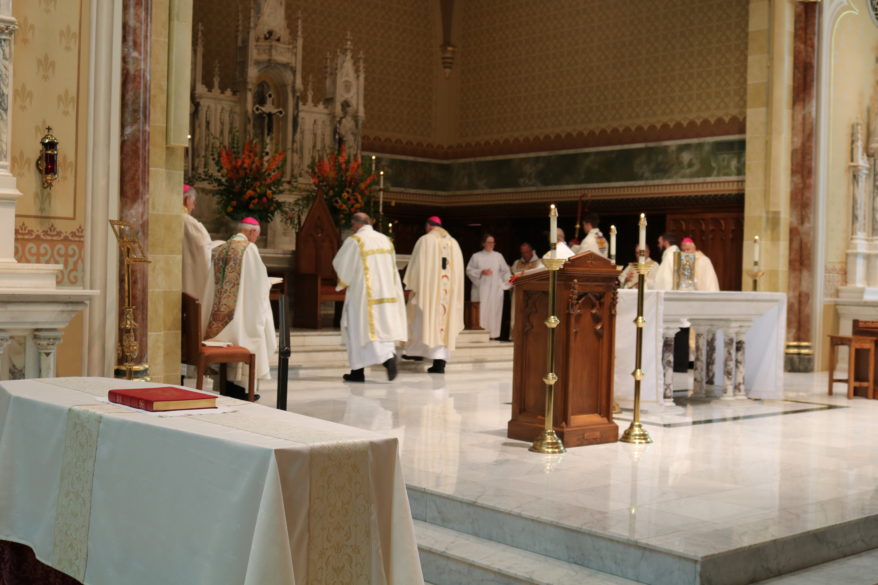
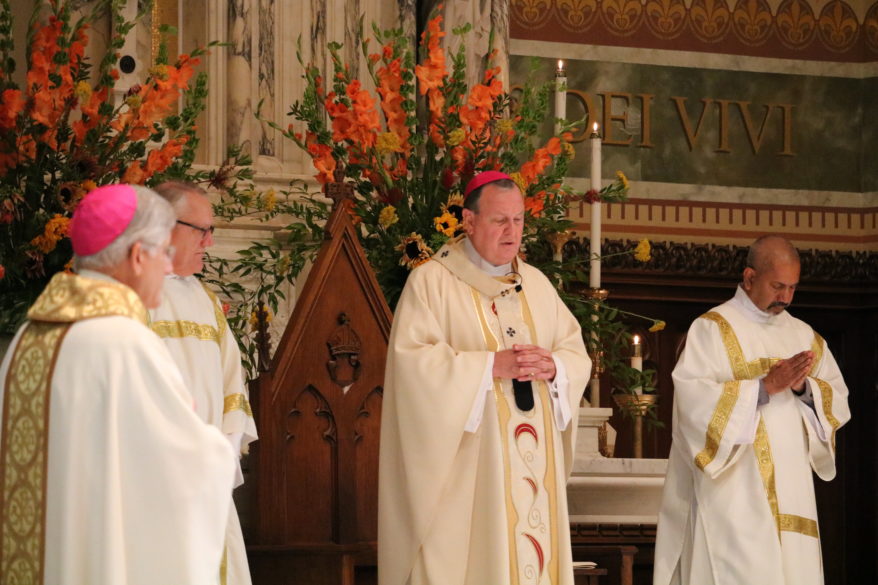
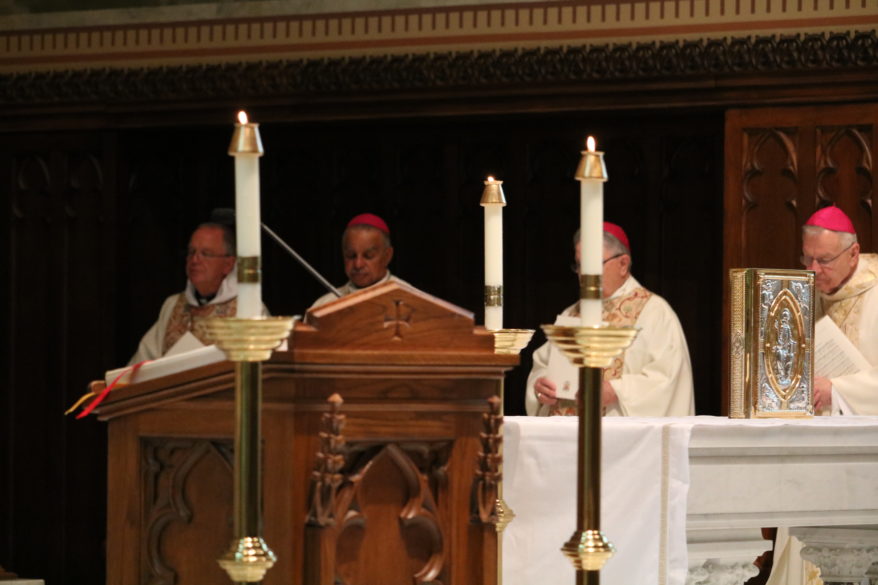
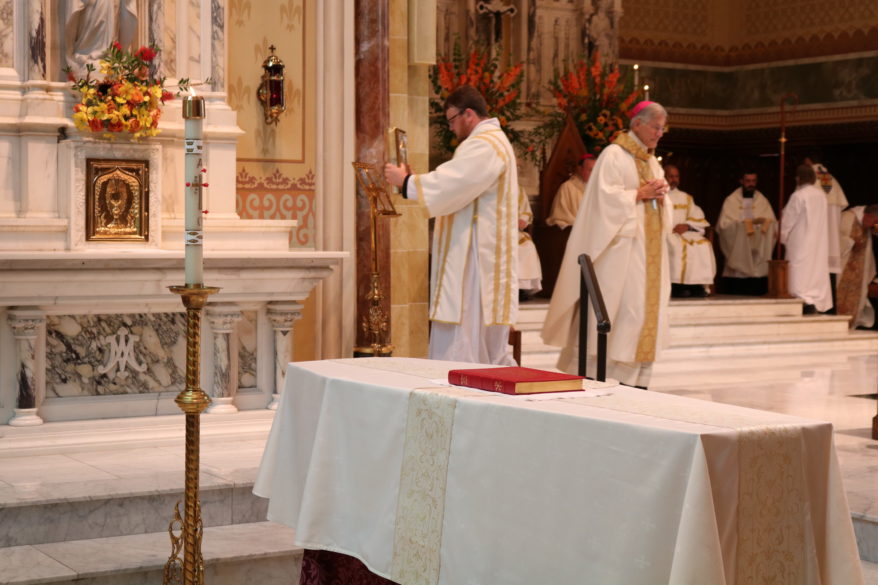
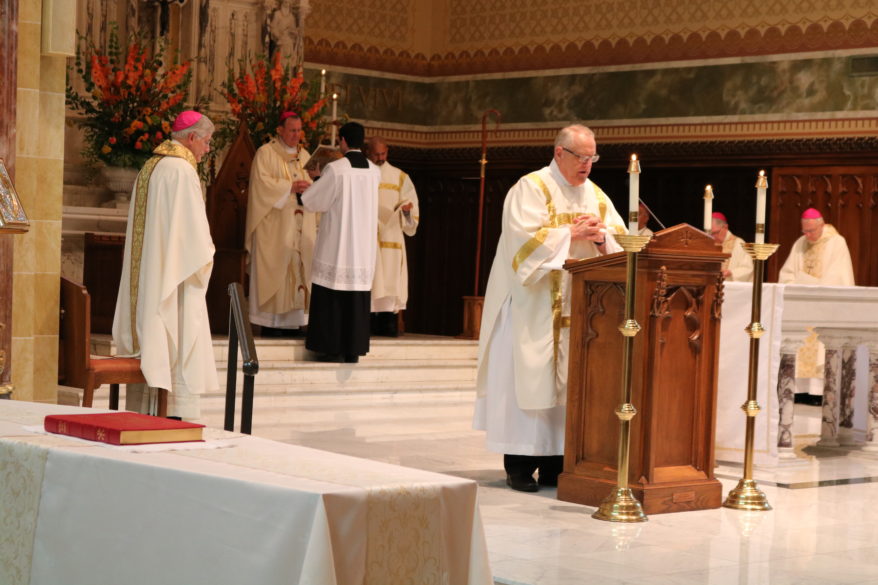
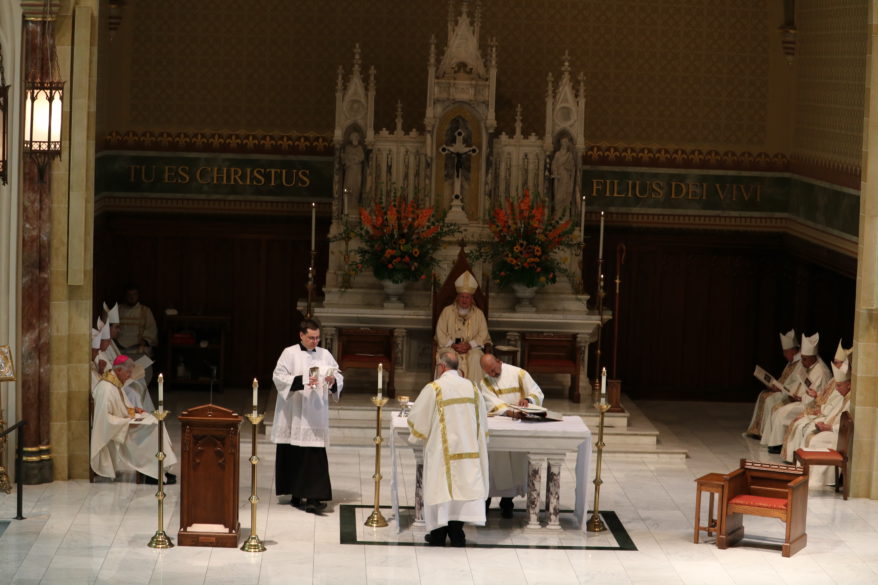
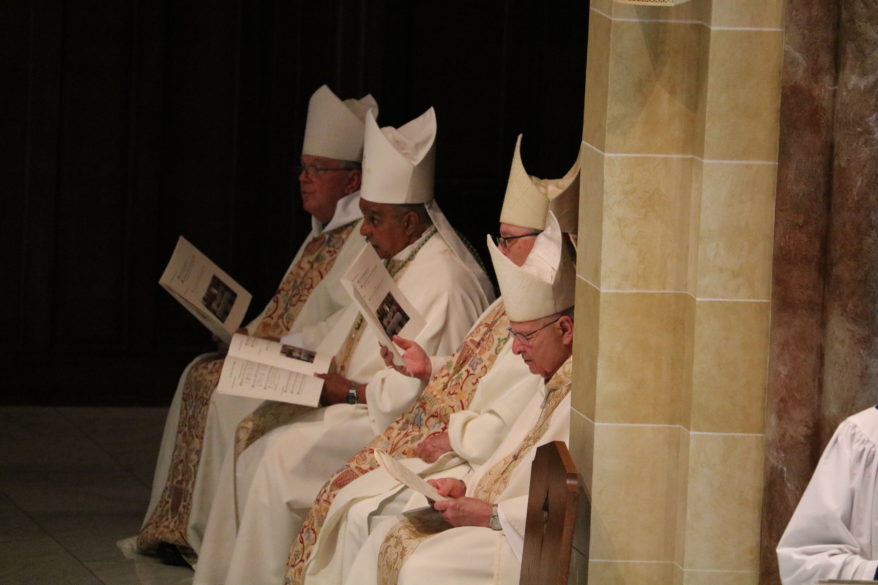

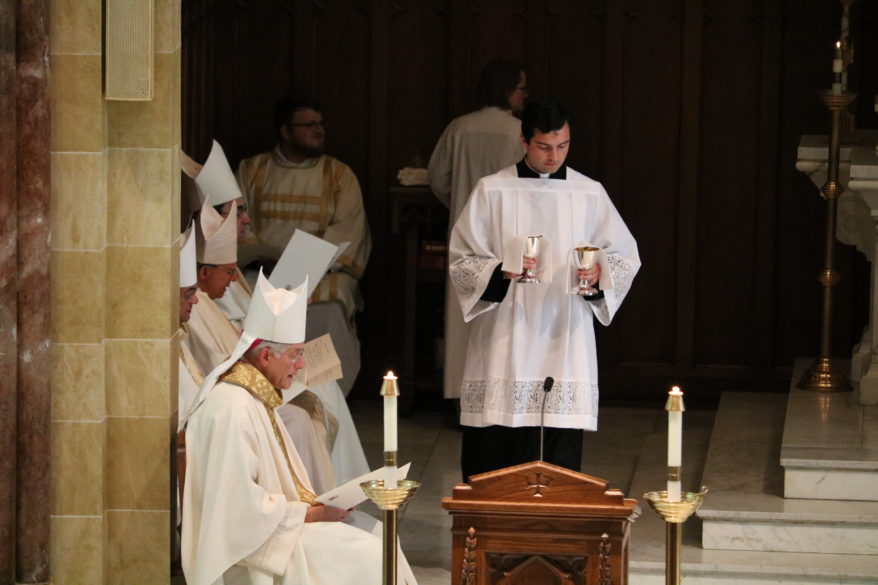

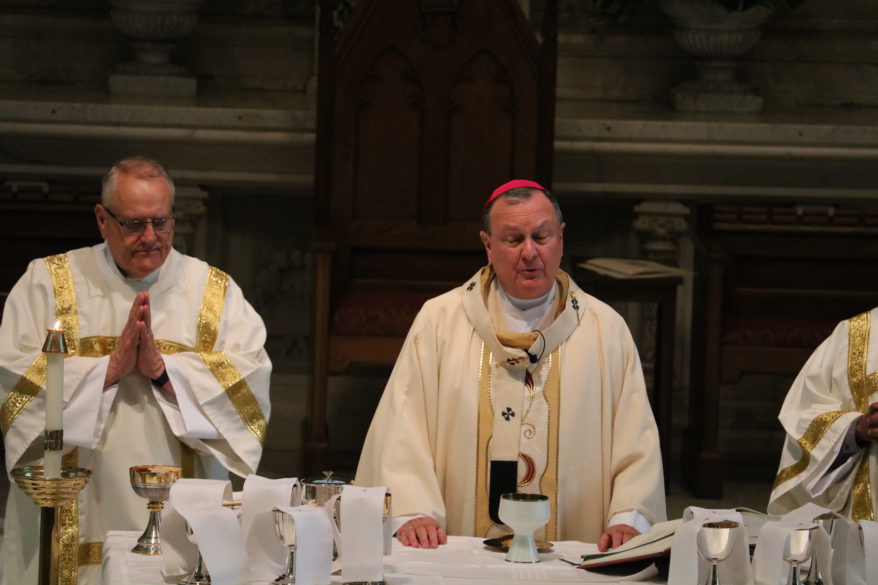
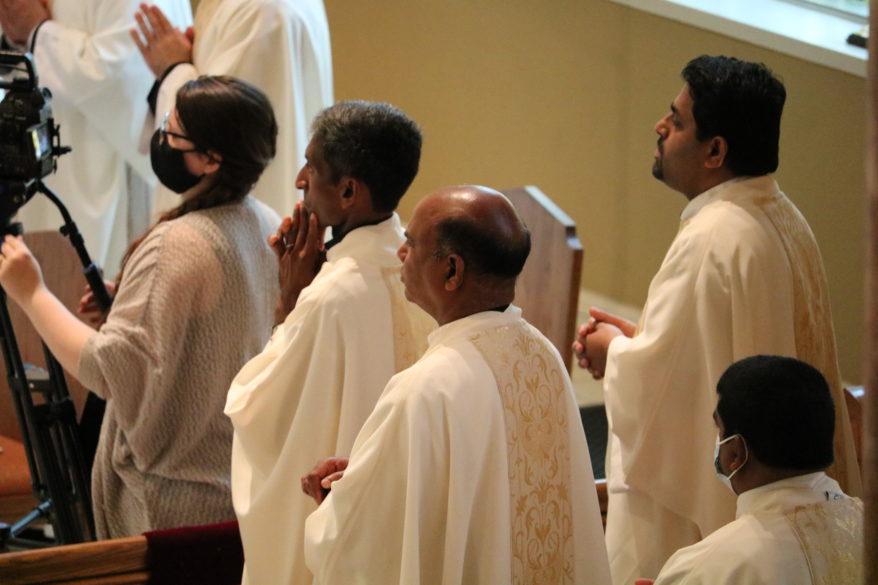
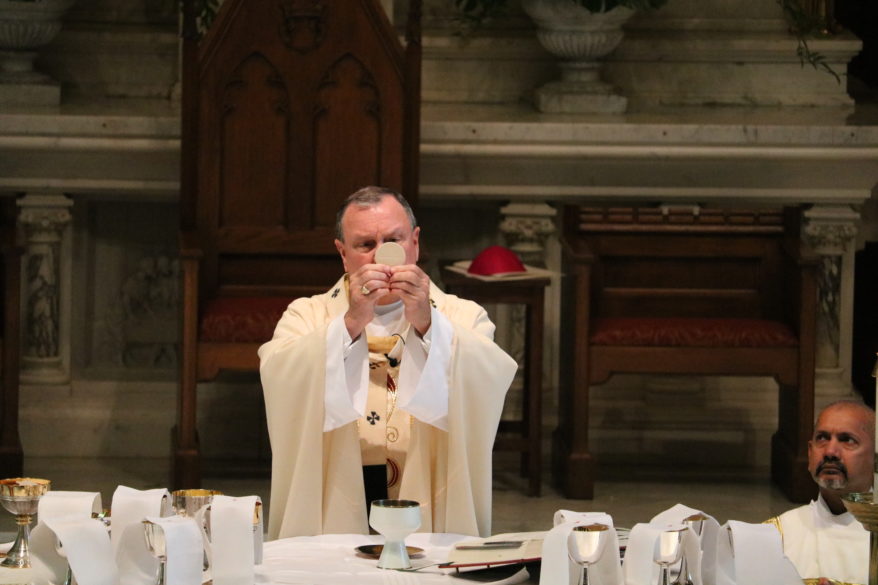
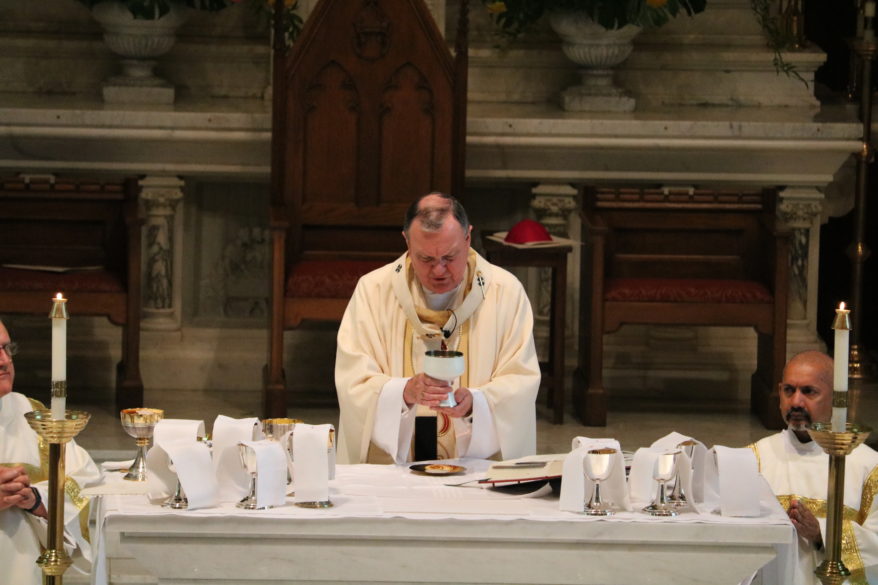
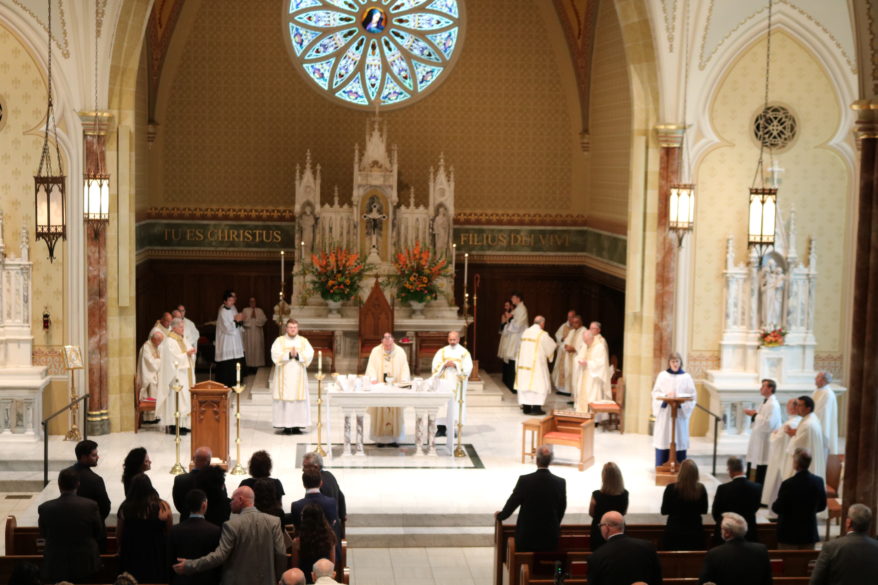
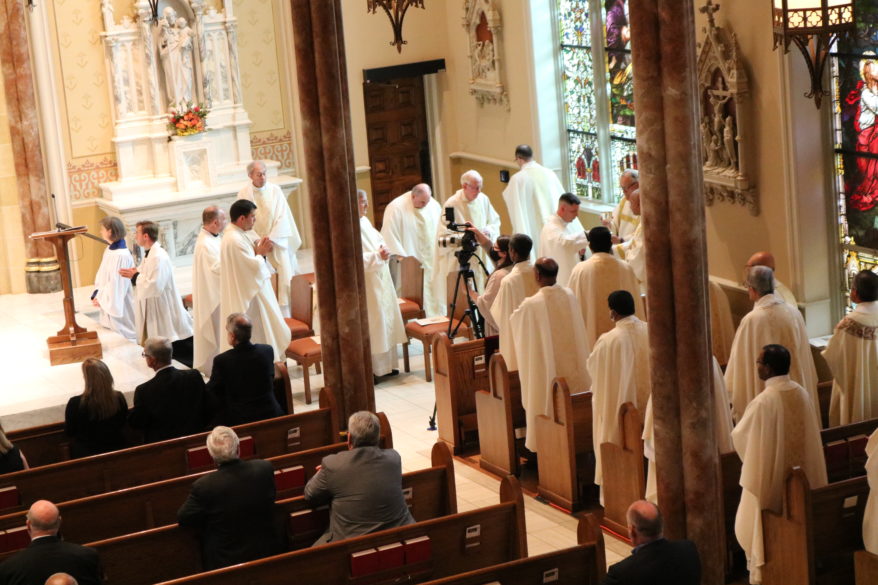
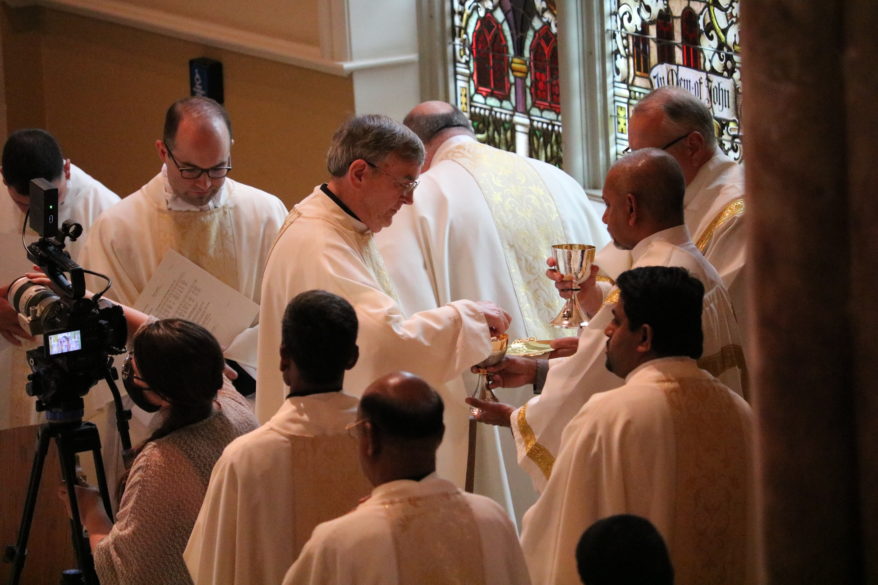
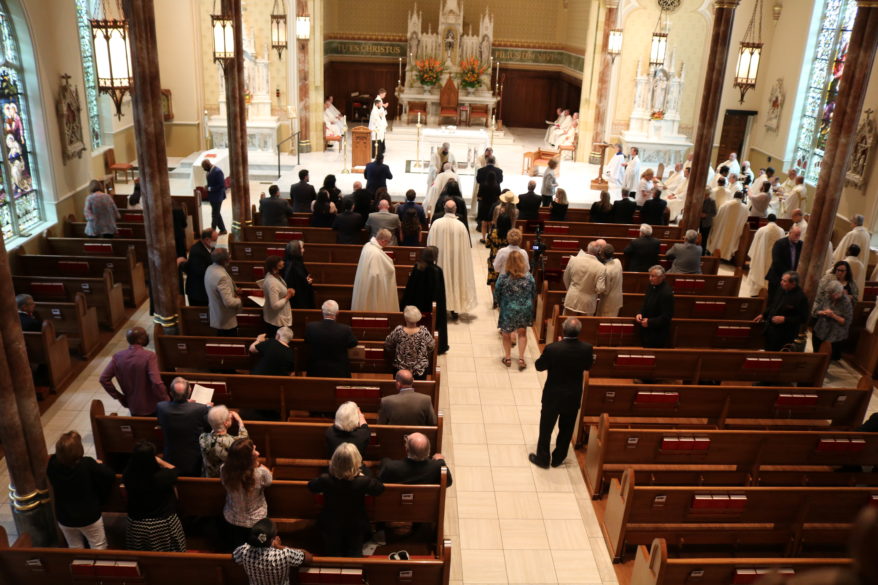
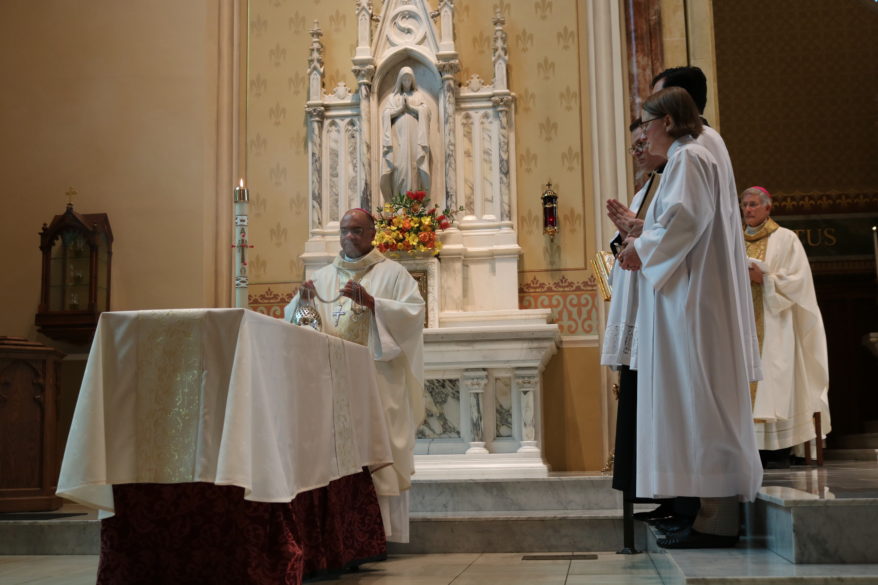
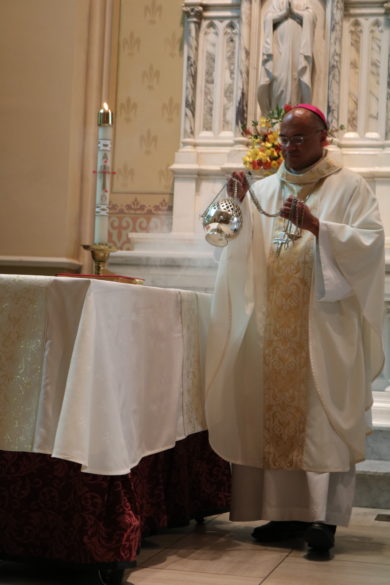
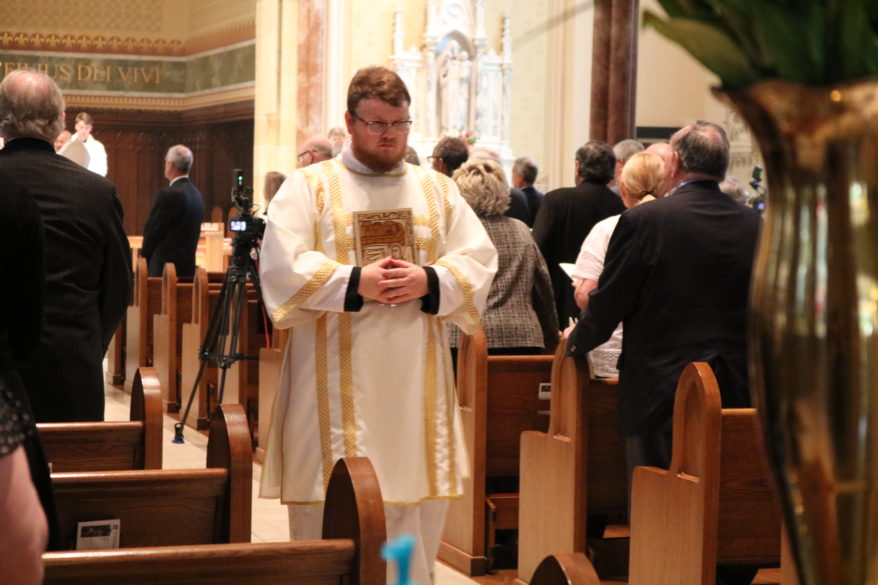

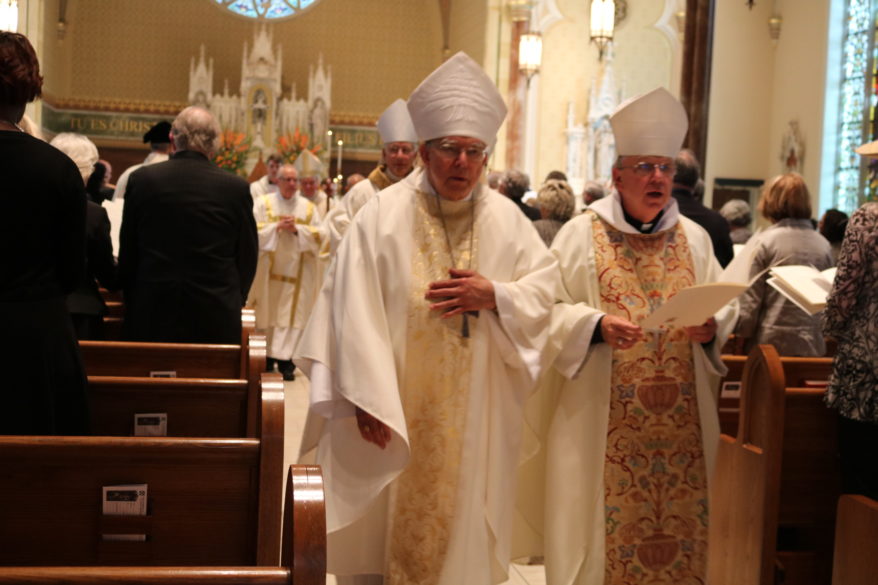
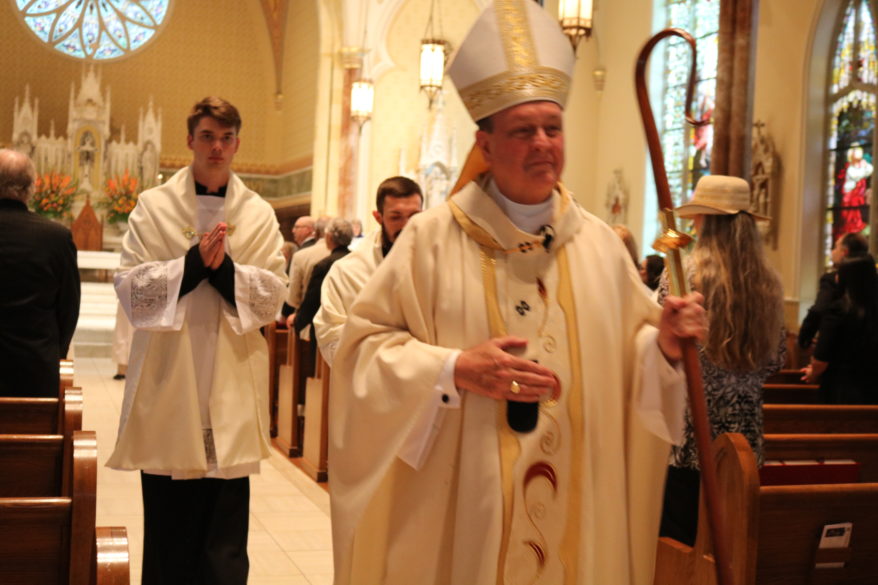
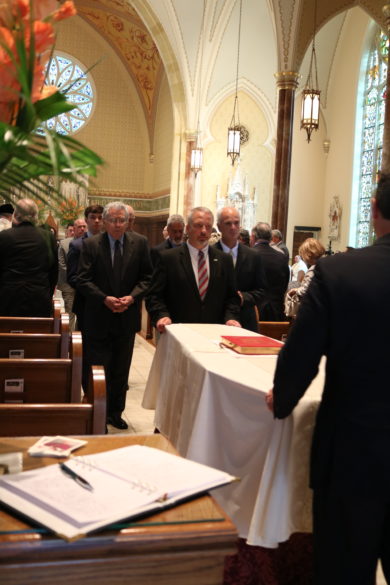
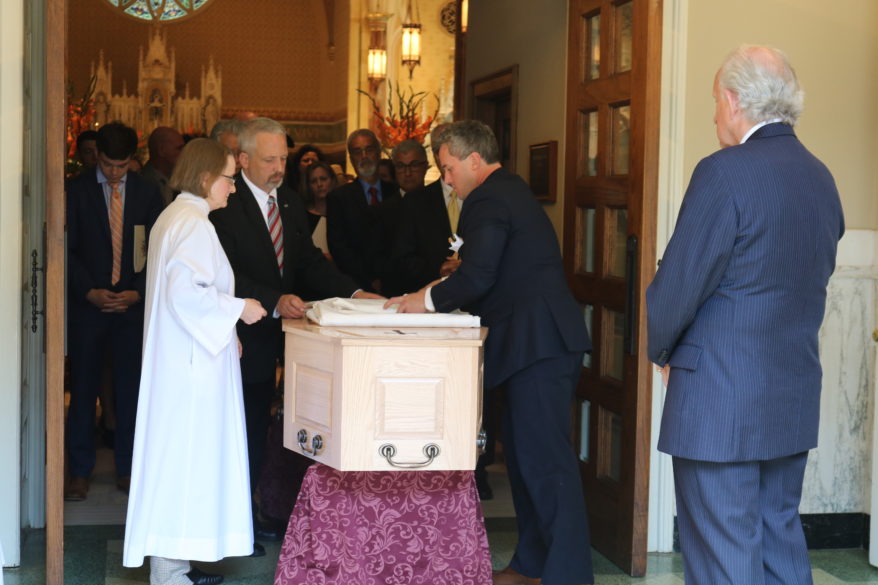
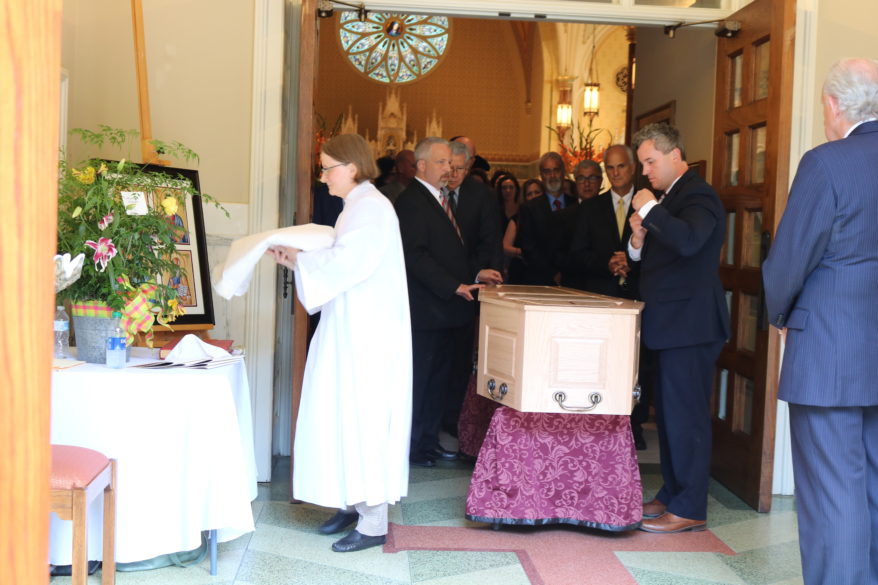
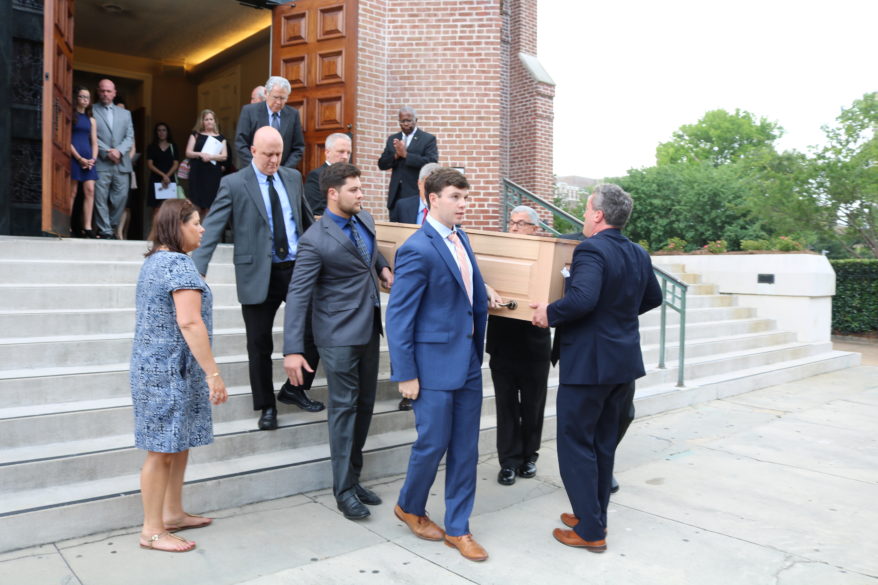
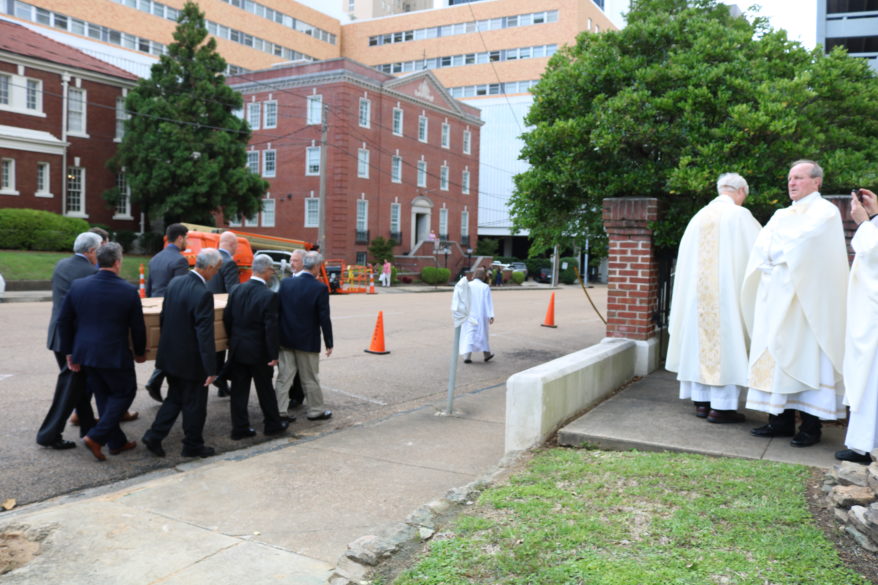
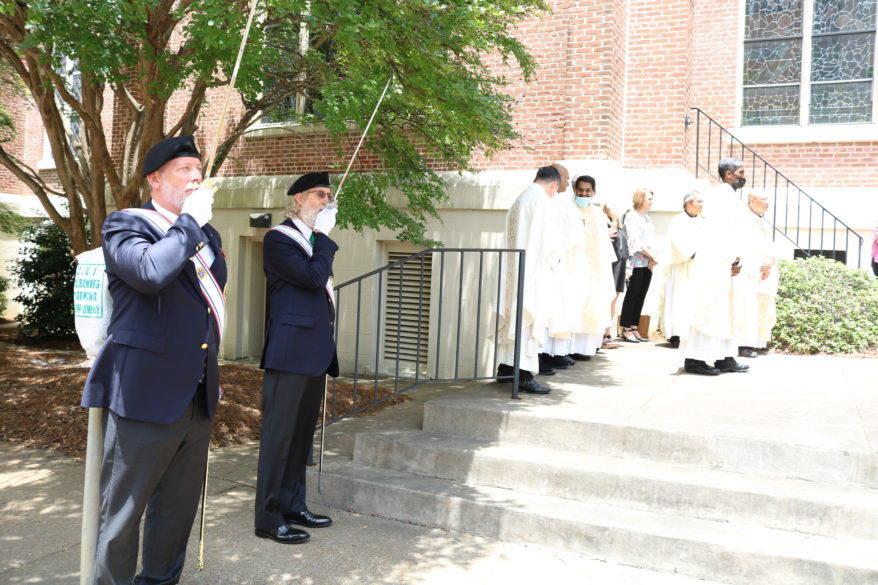
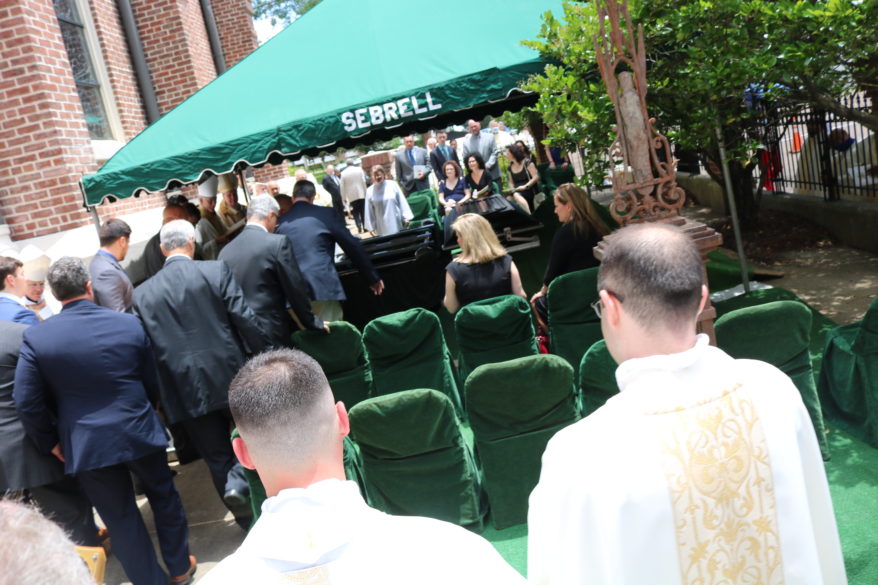
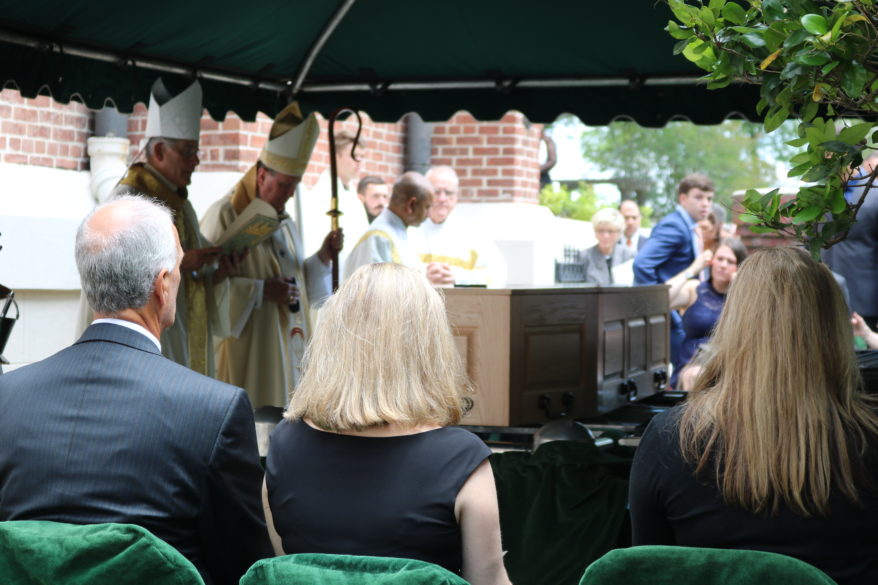
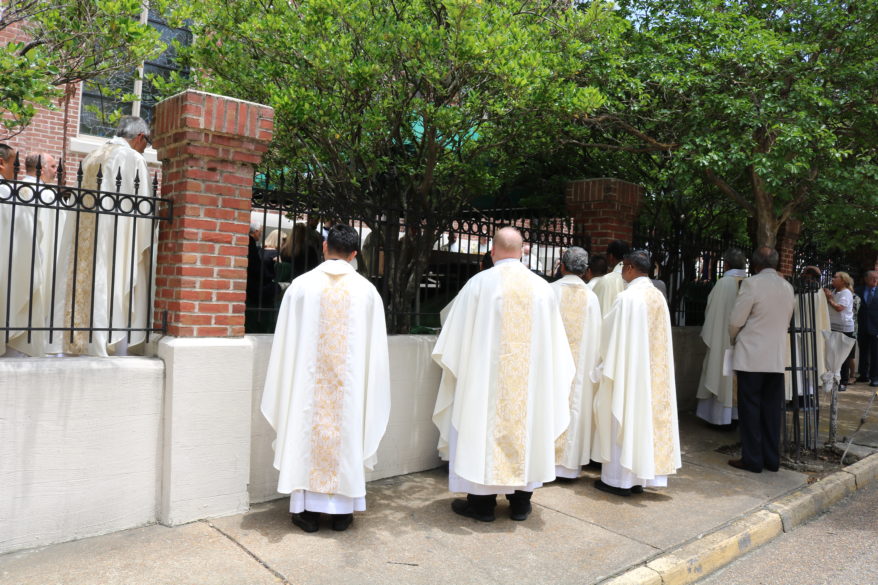
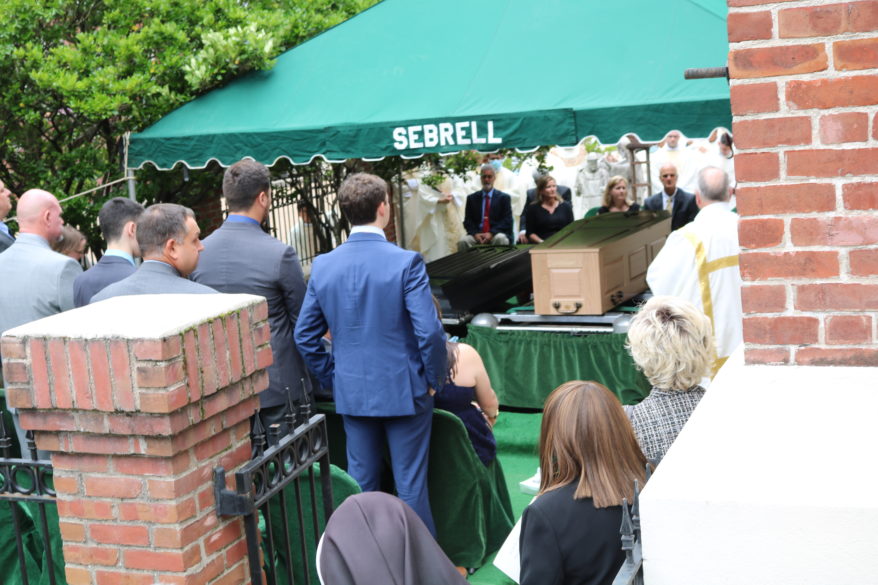
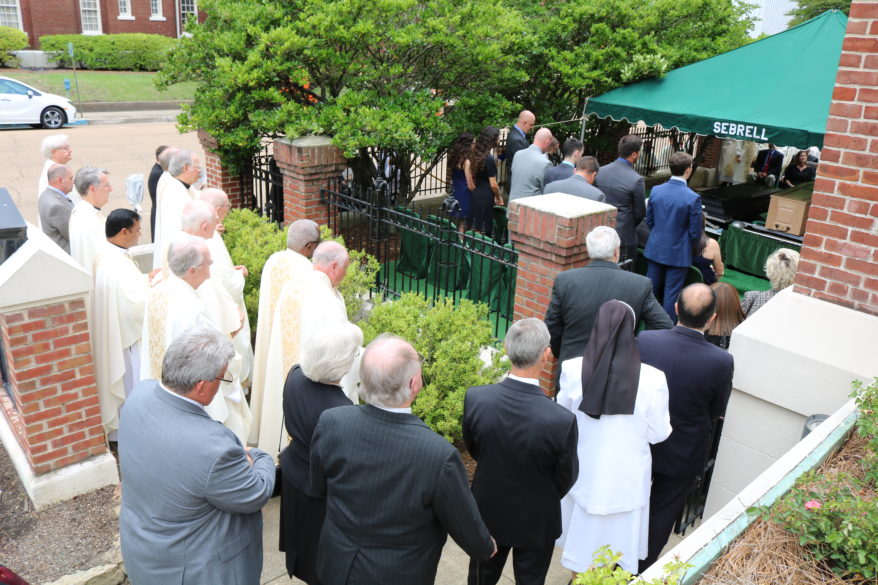
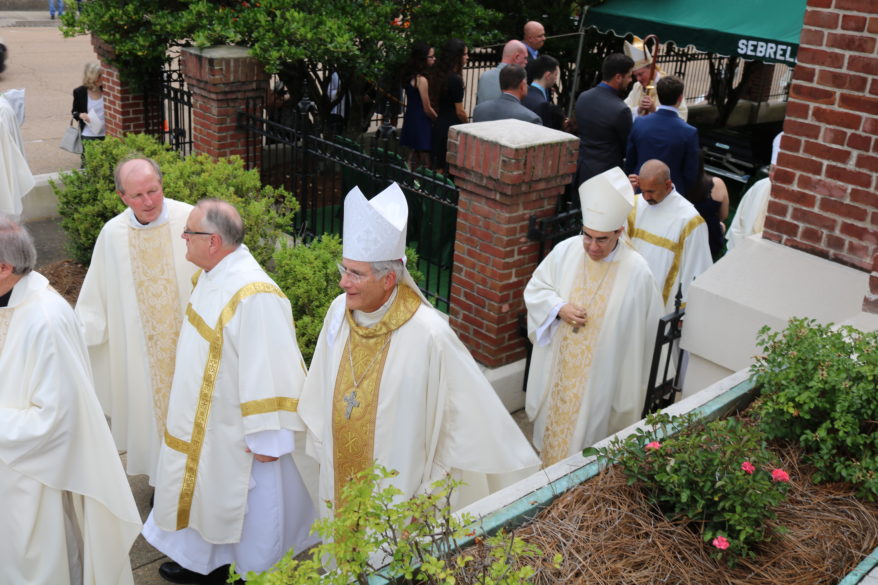
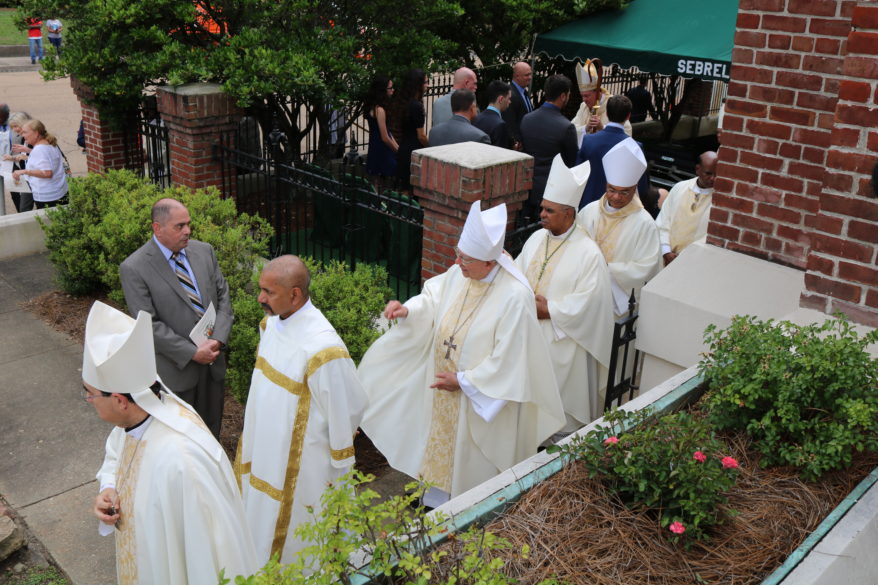
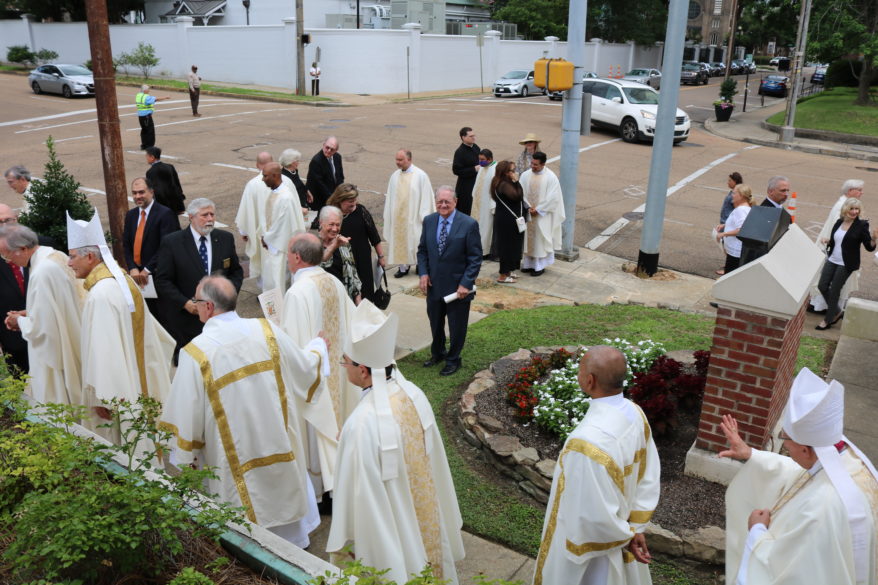
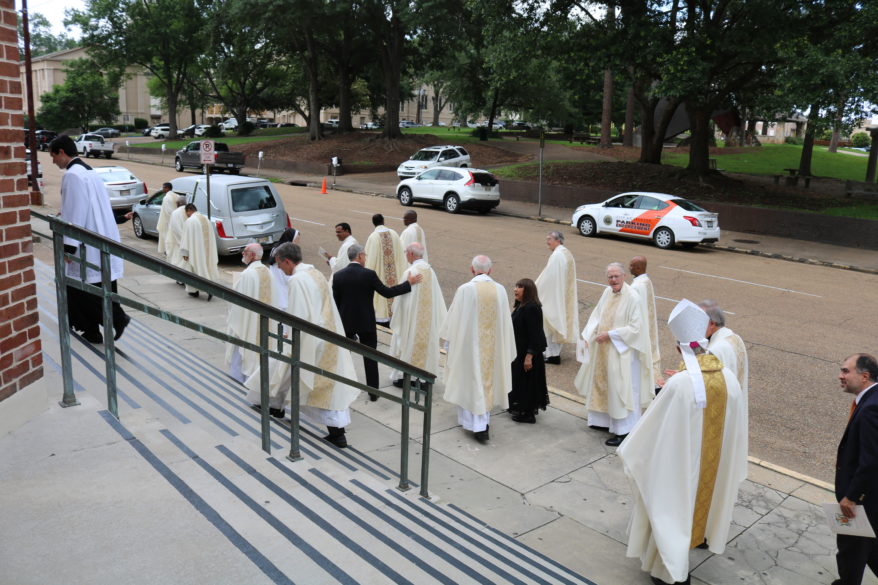
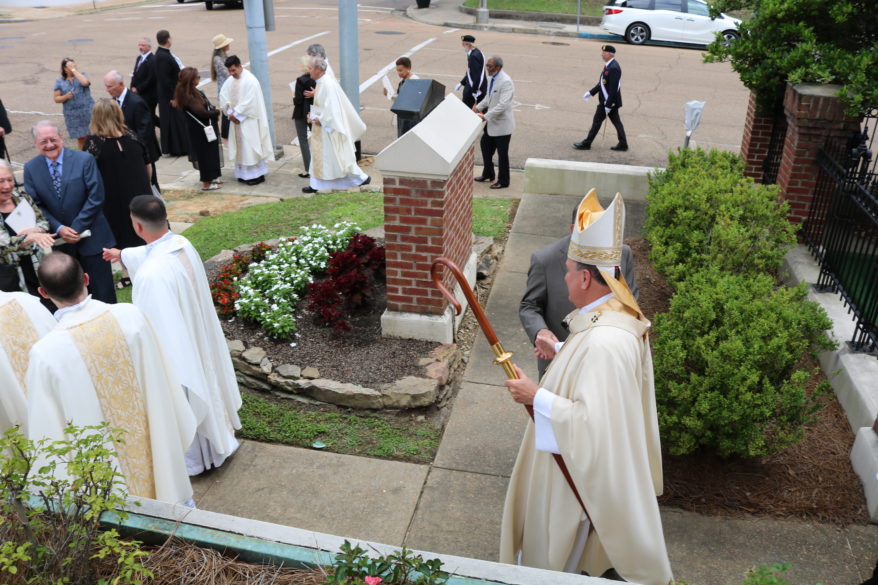
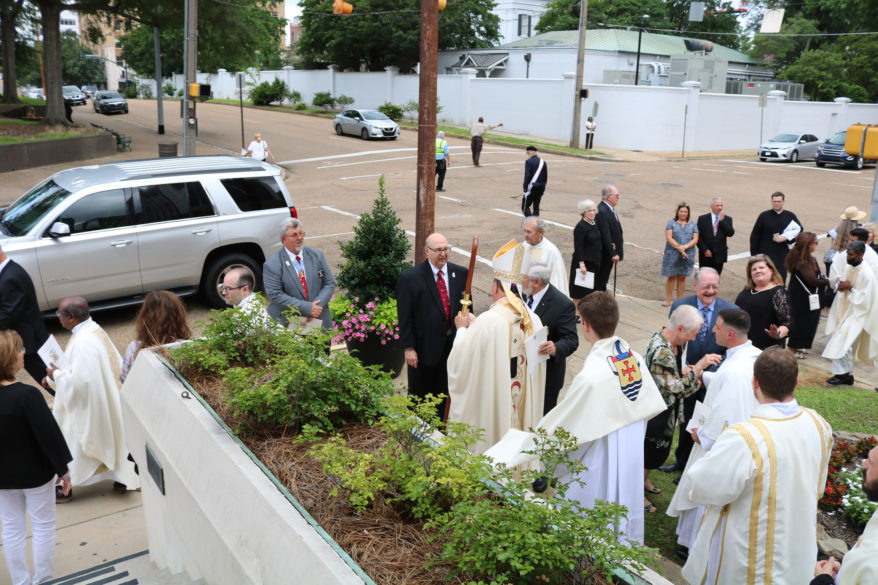
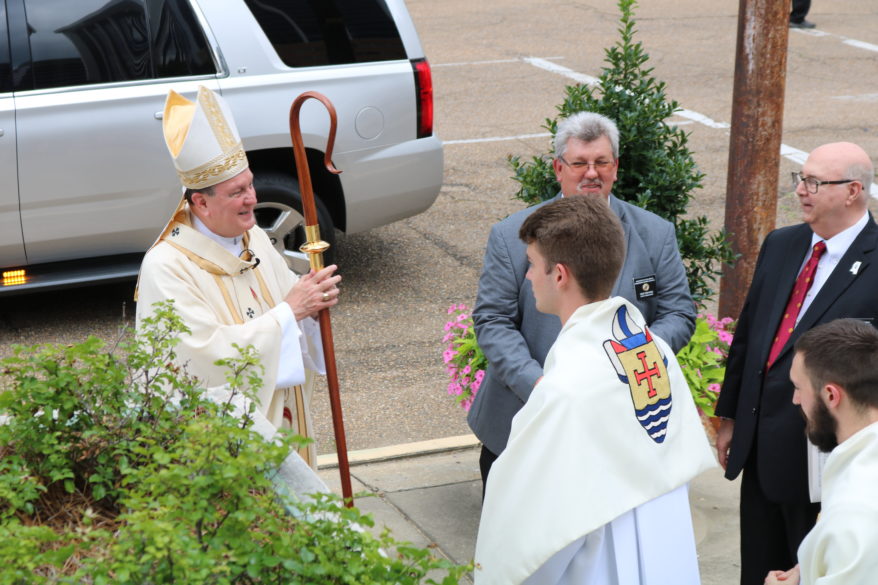
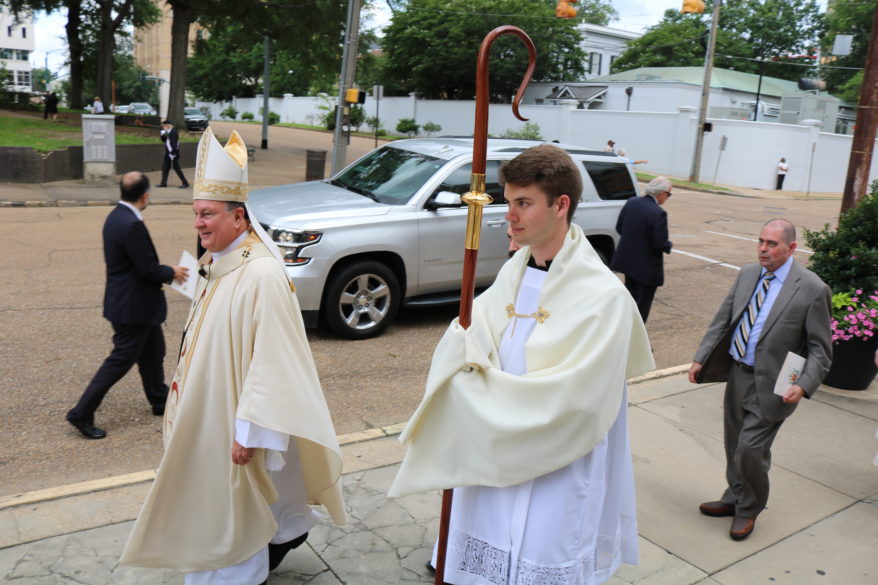
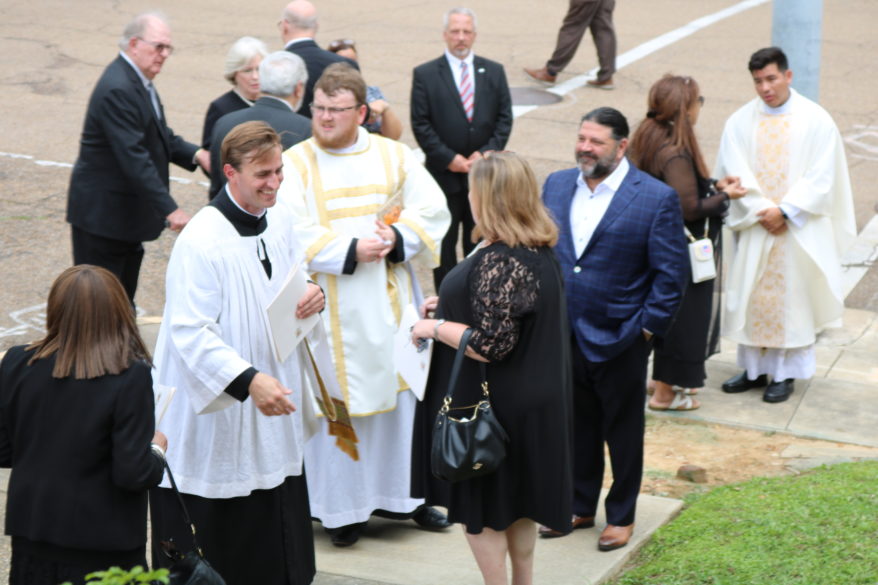
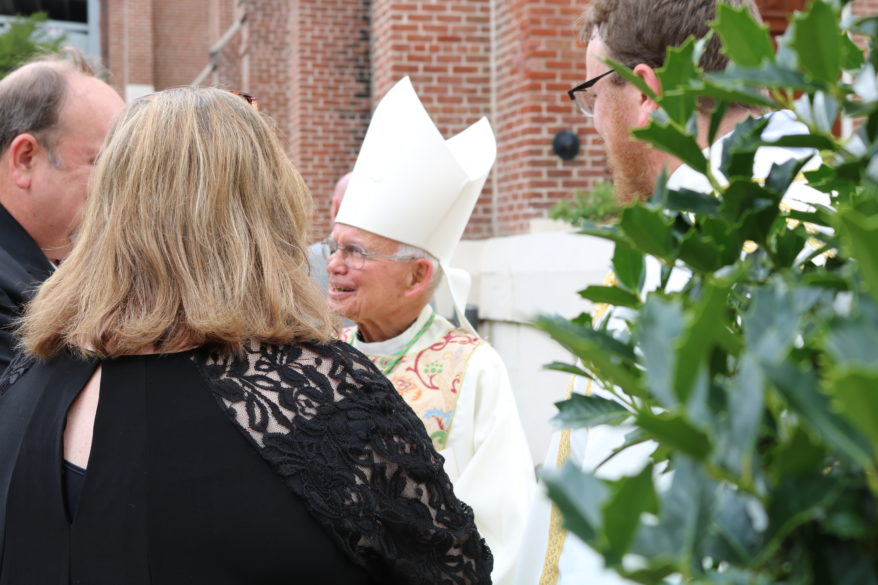
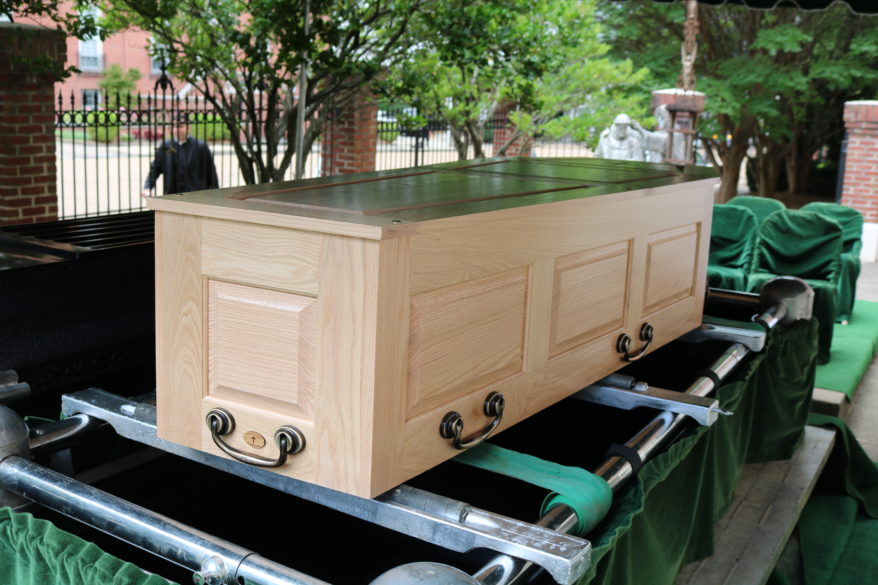
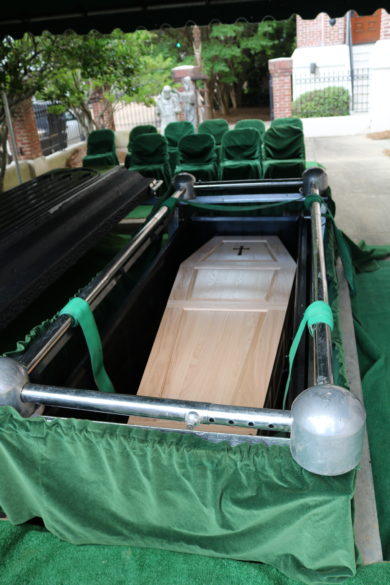
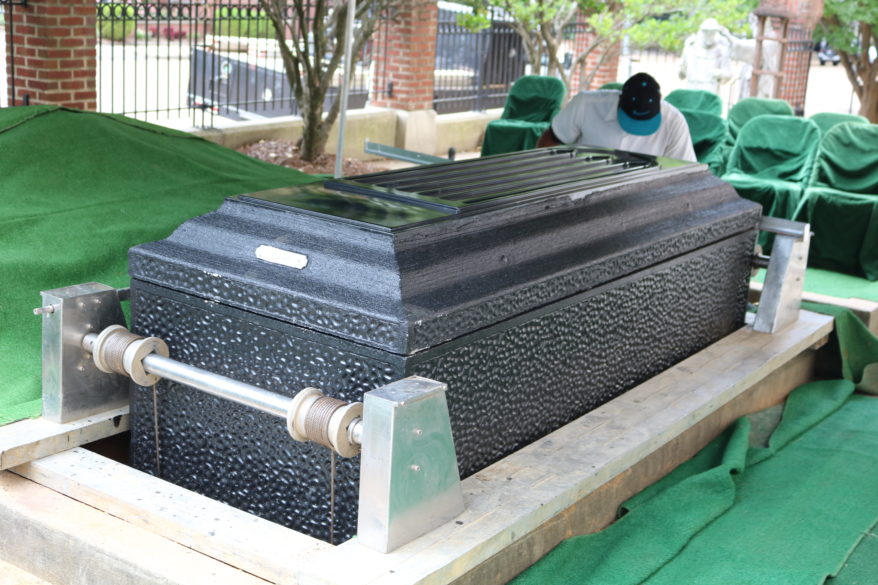
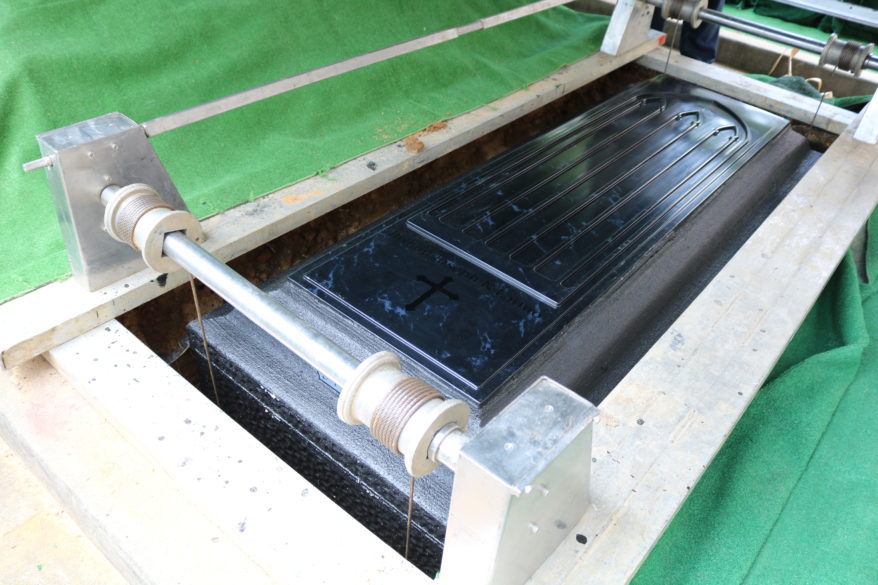
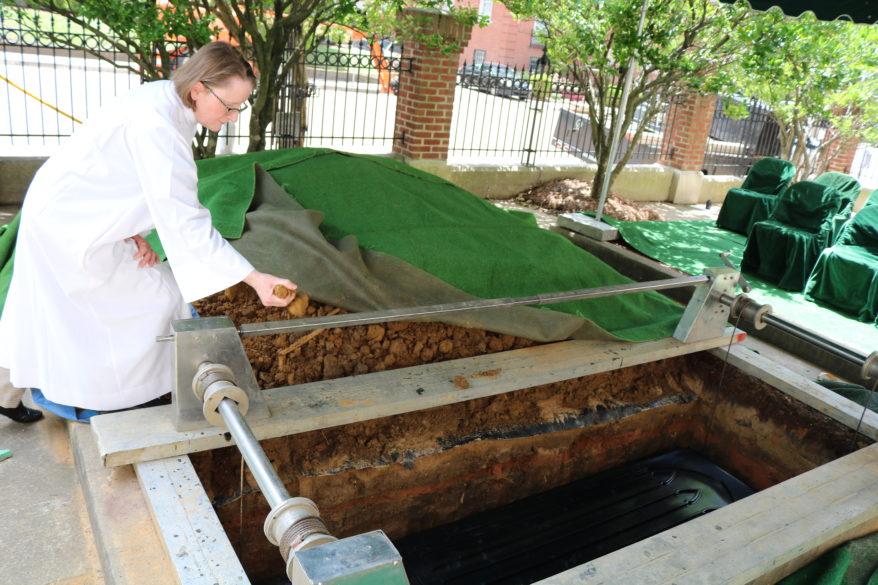

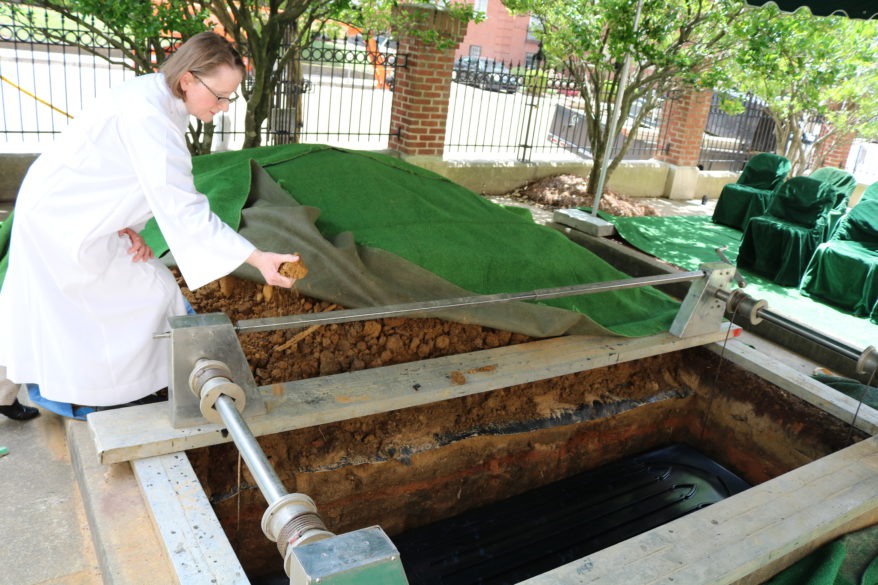
Calendar of events
SPIRITUAL ENRICHMENT
NEW ORLEANS Our Lady of the Cenacle Retreat Center, Women’s Retreat, Come to the Quiet Directed Retreat, July 15-20, a five-day silent directed retreat based on the spiritual exercises of St. Ignatius of Loyola. When on a directed retreat, there are no formal presentations as you will meet daily with an assigned spiritual director from the Archdiocese of New Orleans Spirituality Center. In addition, there will be ample time for rest, personal prayer and walks outdoors. There will also be daily Mass and opportunity for the Sacrament of Reconciliation. Through scripture and reflection under the daily guidance of an experienced spiritual director, you will become more aware of God’s presence and action in your life in an atmosphere of silence and solitude. Cost: $485 per person and includes room, meals, use of the facility and a stipend for the spiritual director. A non-refundable deposit is required. Details: to register or for more information, contact Susan Halligan at the retreat office at (504) 267-9604 or www.neworleansretreats.org/retreats.
PARISH, FAMILY AND SCHOOL EVENTS
HERNANDO Holy Spirit, Save the Date, Annual Bazaar, Saturday, Sept. 11 from 9 a.m. to 3 p.m. They will need volunteers to help before and the day of the bazaar. Details: Julie Stefanik (901) 371-6253 or e-mail julieastefanik@gmail.com.
JACKSON St. Richard, Fourth of July Family Picnic is back! Sunday, July 4 after 5 p.m. Mass. Details: church office (601) 366-2335.
NATCHEZ Assumption B.V.M., the next grief share program will be on Thursdays from July 1 – Sept. 23 from 1-3 p.m. Details: To sign up, call the parish office at (601) 442-7250 or (318) 421-4559. You may also sign up online at www.griefshare.org.
St. Mary Basilica, Unlocking the Mystery of the Bible. Seven of the eight sessions remaining on Thursdays at 6 p.m. in the Family Life Center. Ready for some summer reading? Instead of the usual bestseller or latest novel, how about the best selling book of all time? Many Catholics want to read the Bible because they know it is God’s Word, but they give up because it seems so complicated. If you can’t attend in person, they will have them available online. Details: Ruth Powers at the church office (601) 445-5616.
VICKSBURG St. Paul, Celebration of our patron saint, Sunday, June 27 at 10:30 Mass, with a blessing of our new St. Paul statue gifted to our parish by the Altar Society. Reception to follow in Farrell Hall. Details: church office (601) 636-0140.
YOUTH BRIEFS
CLARKSDALE St. Elizabeth, Vacation Bible School, “Treasured: Discovering You’re Priceless to God” June 28 – July 2 from 8 a.m. to 12 p.m. for those entering PreK-4 through sixth grade. All VBS t-shirt orders must be paid in advance. Details: To sign up, call the church office at (662) 624-4301 or register online.
FLOWOOD St. Paul, Big Deal Youth Group (7th–12th grades) going to Geyser Falls. They need chaperones and drivers on Saturday, June 26, 2021. Leave from St. Paul at 9:15 a.m.; return at 4:15 p.m.. Cost: $40 for admission and $30 for lunch and snacks. Details: Contact Cory Head at youth@spaulcc.org.
Big Deal Youth Group, Save the Dates – Kayak Trip – Saturday, July 24 and Braves’ Game – Saturday, Aug. 14.
GLUCKSTADT St. Joseph, Fourth of July Chickenpendance Day Plates, Pick up will be Saturday, July 3, 1-4 p.m. at the parish hall. St. Joseph Knights of Columbus will sell applewood smoked chicken plates for the fourth of July. Plates include one smoked leg quarter, deviled egg potato salad and baked beans for $7. Items may be ordered a la carte as well. Items can be preordered Sunday, June 20 and Sunday, June 27. Details: contact Chip Williams (601) 594-4946 or Patrick Beasley (769) 218-6957.
JACKSON St. Richard, “The Breakfast Club” will meet on the following Fridays for 7 a.m. daily Mass: June 25, July 2, 9, 23 and 30. Afterwards, they will head to a restaurant for breakfast. Bring enough money for your breakfast. All youth who will be in grades 9-12 this fall are welcome. Details: church office (601) 366-2335.
Faith Life Discipleship Groups – Discipleship Groups will meet on Sundays, June 27 and July 18 from 6-7 p.m. in the Youth Center. Afterwards, they will head to a restaurant for food and fellowship. Bring money for dinner. All youth who will be in grades 10-12 in the fall are welcome. Details: church office (601) 366-2335.
MADISON St. Joseph School, Annual Bruin Burn Color Run 5K Run/Walk and Fun Run, Saturday, July 24. All proceeds support the St. Joe Athletic Program for the benefit of all St. Joe Athletes. Details: Beth Vanderloo at (601) 906-9501 or bethbailey68@yahoo.com.
MADISON St. Francis of Assisi, St. Francis Boy Scout Troop 716 is currently recruiting youth to join their troop and searching for adult volunteers. To be an adult volunteer you do not have to have a child in the troop. Details: contact the Scout Master David Ellis at ellisd3.de@gmail.com or call 601 856-5556 at the parish office.
Smoked Pork Butt Blowout, the Knights of Columbus are selling smoked pork butts for $40 each. Pickup will be Friday, July 2 starting at 12 p.m. The deadline to order is June 28. Details: email kc9543@stfrancismadison.org or call the parish office (601) 856-5556.
MERIDIAN Catholic Community of Meridian, Vacation Bible School, scheduled dates are July 19-23 from 8-11:30 a.m. at St. Patrick’s. Volunteers are needed. Details: If you would like to volunteer or have any questions, please contact Adrian Viger at (601) 917-4566.
VICKSBURG (All parishes) Vacation Bible School “Camping in God’s Creation,” July 19-23 from 9-11:30 a.m. for kindergarten through sixth grades in the Vicksburg Catholic School gym and cafeteria. Details: Contact Lindsey Bradley at lindsey.bradley@vicksburgcatholic.org for more information.
EVENT
Biking for Babies, Renewing the culture of life in America, one pedal stroke and one pregnancy resource center at a time. They are riding through the state Sunday, July 11 and Monday, July 12, starting at St. Mary Basilica, Natchez and their first stop will be Monday, July 12 at 7 p.m. at Dayspring Community Church (1100 Clinton Business Park Drive, Clinton). Pro-Life Mississippi will have a potluck dinner for them. They ask people to attend and support them as they raise funds for Pregnancy Resource Centers across the country. Details: Tammy Tillman at (601) 956-8636, ext. 1. or www.bikingforbabies.com.
Graduation 2021
Bishop to lift dispensation from obligation to attend Mass, diocese issues modified directives
By Joanna Puddister King
JACKSON – After careful study and consultation with the clergy, Bishop Joseph Kopacz will lift the general dispensation from the Sunday obligation to attend Mass, effective on the Solemnity of the Feast of Corpus Christi beginning with the vigil Mass on Saturday, June 5, 2021.
In a letter released on May 20 by the diocese, Bishop Kopacz states, “The Sunday obligation will be restored on this great feast when we can satisfy our hunger for the Bread of Life, in Word and Sacrament with the reception of Holy Communion.”
Bishop Kopacz also reminds the faithful in his letter to keep in mind that the church always dispenses those confronting serious health concerns. “Therefore, someone can validly make the decision to attend Mass during the week, if able, and to participate in the Mass on the Lord’s Day through live streaming,”
In addition to lifting the general dispensation from the Sunday Mass obligation, the diocese modified their protocols during the pandemic. The directives, which represents a combination of previously released protocols, detail how parishes can move forward towards more normal operations, taking a gradual phased approach, with a watchful eye on the developments and guidance of the Centers for Disease Control (CDC) and the Mississippi State Department of Health.
For Masses, social distancing will be at 3 feet and parishes may use every pew, deciding how to stagger seating to maintain social distancing.
Also, masks are no longer required at Mass but encouraged for those who are not vaccinated and for children and youth under the age of 16. However, priests and eucharistic ministers are required to wear masks when distributing Holy Communion.
With the changes, some things remain the same. Holy Communion is still encouraged to be received in the hand and hand sanitizer should still be used by parishioners upon entrance to the church.
The updated protocols also include directives on meetings, gatherings, as well as youth activities and Vacation Bible School.
Pastors and their pastoral staff are responsible for the safe and prudent execution of the directives, recognizing that every parish has unique circumstances. The goal is to continue to provide a safe place for worship while maintaining a level of confidence for all the people of God.
On May 13, the CDC eased the mask-wearing guidance for fully vaccinated people allowing them to stop wearing masks outdoors in crowds and most indoor settings. The guidance still calls for wearing masks in crowded indoor settings like buses, planes, hospitals, prisons and homeless shelters.
Father Lincoln Dall, vicar general for the diocese, stated at the end of the directives, “We want to thank all of you for your efforts in keeping our parishioners safe during the pandemic. We acknowledge that all of us are very weary of dealing with the pandemic. … However, we acknowledge that this is still is not the time to let our guard down completely. We will continue to monitor the situation and will issue modified guidelines when the reality of the pandemic changes.”
To view the letter from Bishop Kopacz lifting the dispensation and a full list of updated protocols, visit https://jacksondiocese.org/public-health-concerns/.
Obispo, en directivas modificadas, levantará dispensa de obligación de asistir a Misa
Por Joanna Puddister King
JACKSON – Después de un estudio cuidadoso y una consulta con el clero, el obispo Joseph Kopacz levantará la dispensa general de la obligación dominical de asistir a la misa, a partir de la fiesta de Corpus Christi, de la Misa de vigilia el sábado 5 de junio de 2021.
En una carta publicada por la diócesis, el 20 de mayo, el obispo Kopacz declara: “La obligación dominical será restaurada en esta gran fiesta cuando podamos satisfacer nuestra hambre por el Pan de Vida, en la Palabra y Sacramento con la recepción de la Sagrada Comunión.”
El obispo Kopacz recuerda a los fieles en su carta que tengan también en cuenta que la iglesia siempre dispensa a aquellos que enfrentan problemas de salud graves. “Por lo tanto, alguien puede tomar válidamente la decisión de asistir a Misa, si puede, durante la semana y participar en la Misa el día del Señor a través de la transmisión en vivo.”
Además de levantar la dispensa general de la obligación de la Misa dominical, la diócesis modificó sus protocolos durante la pandemia. Las directivas, que representan una combinación de protocolos publicados anteriormente, detallan cómo las parroquias pueden avanzar hacia operaciones más normales, adoptando un enfoque gradual, con una mirada atenta a los desarrollos y la orientación del Centro para el Control de Enfermedades (CDC) y el Departamento de Salud del Estado de Mississippi.
El distanciamiento social será de 3 pies para las Misas y las parroquias pueden usar cada banco para decidir cómo escalonar los asientos para mantener el distanciamiento social.
Además, las máscaras ya no se requieren en la Misa, pero se recomiendan para aquellos que no están vacunados y para niños y jóvenes menores de 16 años. Sin embargo, los sacerdotes y ministros eucarísticos deben usar máscaras al distribuir la Sagrada Comunión.
Con los cambios, algunas cosas seguirán igual. Todavía se anima a recibir la Sagrada Comunión en la mano y los feligreses deben usar desinfectante de manos al entrar a la iglesia.
Los protocolos actualizados también incluyen directivas sobre reuniones, encuentros, así como actividades para jóvenes y la Escuela Bíblica de Vacaciones.
Los párrocos y su personal pastoral son responsables de la ejecución segura y prudente de las directivas, reconociendo que cada parroquia tiene circunstancias únicas. El objetivo es continuar proporcionando un lugar seguro, para la adoración mientras se mantiene un nivel de confianza en todo el pueblo de Dios.
El 13 de mayo, el CDC modificó la guía para el uso de máscaras para las personas completamente vacunadas, lo que les permitió dejar de usar máscaras al aire libre en multitudes y en la mayoría de los entornos interiores. La guía todavía exige el uso de máscaras en entornos interiores abarrotados como autobuses, aviones, hospitales, prisiones y refugios para personas sin hogar.
El padre Lincoln Dall, vicario general de la diócesis, declaró al final de las directrices: “Queremos agradecerles a todos por sus esfuerzos para mantener seguros a nuestros feligreses durante la pandemia. Reconocemos que todos estamos muy cansados de lidiar con la pandemia. … Sin embargo, reconocemos que todavía no es el momento de bajar la guardia por completo. Continuaremos monitoreando la situación y emitiremos lineamientos modificados cuando la realidad de la pandemia cambie.”
Para ver la carta del obispo Kopacz levantando la dispensa y para una lista completa de los protocolos actualizados, visite https://jacksondiocese.org/public-health-concerns/
New Orleans Archbishop committed to ending segregation, remembered by Bishop Emeritus
From the Archives
By Mary Woodward
JACKSON – This week I am highlighting a neighbor to the south of us – Archbishop Joseph F. Rummel, who was Archbishop of New Orleans from 1935 to his death in November 1964. His tenure runs almost parallel to our own Bishop R.O. Gerow (1924-66).
In talking with our Bishop Emeritus, Joseph Latino, who grew up and went to seminary during the Rummel years, Bishop Latino shared some insight into the life of the archbishop saying he was very much committed to ending segregation even in the face of strong push back from Catholic community and business leaders. An interesting timeline develops beginning in 1949.
It seems in 1949, Archbishop Rummel canceled an outdoor liturgy when city officials would not allow African American Catholics to participate. In 1950 he had “White” and “Colored” signs removed from churches. Rummel mandated an end to the practice of making African American Catholics receive Communion last in 1953. These measures met with resistance from laity and clergy.
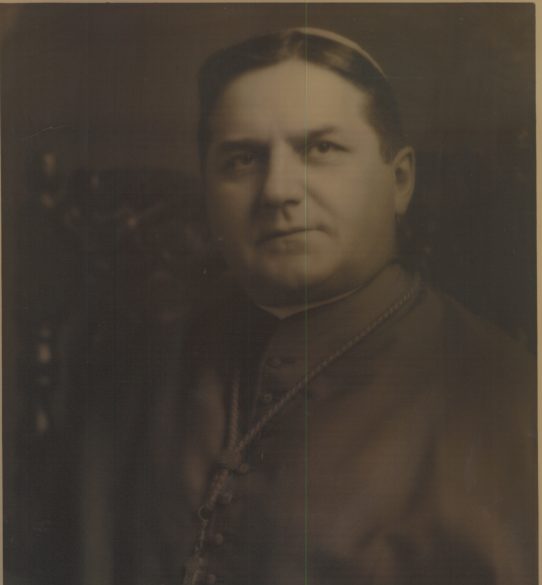
To ground his efforts solidly in Catholic theology, Rummel issued a letter to be read in all parishes Feb. 11, 1956. Now Rummel was famous for his long letters to be read to parishioners at Sunday Masses, but this one rocked the entire archdiocese. The letter was laying groundwork to integrate the archdiocesan school system. In the letter Rummel gives three main points quoted below courtesy of the Archdiocese of New Orleans Archives.
“Racial segregation is morally wrong and sinful ‘because it is a denial of the unity and solidarity of the human race as conceived by God in the creation of man in Adam and Eve. Male and female He created them and breathed into them the spirit of life and commanded them to increase and multiply and fill the earth. Throughout the pages of the Old Testament and the New there is constant recurrence of this truth, that all mankind has in Adam and Eve one common father and mother and one common destiny, namely, to serve God in this world and find eternal happiness with Him in the world to come.
“Racial segregation is morally wrong and sinful because it is a denial of the unity and universality of the Redemption. The Eternal Son of God, Christ Jesus our Lord, came into the world to redeem and save all men, to die for all men on the cross, to make the life of grace available through the Church and the Sacraments for all men, to embrace all men in His Mystical Body on earth and in the life of glory in heaven. Racial segregation would draw the color line across the inspiring plan of the Redemption and thus sin against the divine providence. the love and the mercy that conceived and carried out the wonderful Mystery.
“Racial segregation is morally wrong and sinful because it is basically a violation of the dictates of justice and the mandate of love, which in obedience to God’s will must regulate the relations between all men. To deny to members of a certain race, just because they are members of that race, certain rights and opportunities, civic or economic, educational or religious, recreational or social, imposes upon them definite hardships and humiliations, frustrations and impediments to progress which condemn them to perpetual degradation which is only a step removed from slavery. Such indignities are grievous violations of Christian justice and charity, which cannot be justified in this modem age of enlightenment and loudly proclaimed democracy.”
Rummel concludes the letter aware of opposition by calling for calm and prayer: “May we likewise unite in prayer that the decision, when made, will be accepted in the spirit of Christian charity and justice and in that unity of mind, heart and will, which must always characterize the family of God. This is a problem which should be worked out not in an atmosphere of wrangling or contention or discord or hatred but in a spirit of conciliation and with a desire to achieve peace through justice and charity. Prayer and calmness of spirit are much needed in all our hearts, and for these we plead in the name of the Divine Prince of Peace…”
Despite warnings of possible excommunication, local Catholic political, business and community leaders formed opposition groups to combat Rummel’s move to push for integrated Catholic schools in 1957. They even appealed to the Vatican but were rebuffed by the Holy See. Rummel was even the recipient of a burning cross on the front lawn of the archbishop’s residence.
Ultimately, three leaders were excommunicated, but the opposition continued and delayed the integration plans of Rummel. One reason for delaying was the recognition that white Catholics would leave Catholic schools if integrated and go to the public schools which were not yet integrated. So, archdiocesan leaders advised Rummel to wait to integrate Catholic schools until the public schools integrated in 1960.
In listening to Bishop Latino talk about his memories of all the events, he lamented the fact Archbishop Rummel suffered greatly from the intolerance and disrespect, but admired Rummel’s steadfastness in his mission in the face of that suffering. Latino even remarked that the church missed an opportunity to make a bold statement to the world by bestowing Rummel with the red hat of a Cardinal – honoring a man with principles like rails of steel from which he did not waiver.
In future articles, we will explore the integration of Catholic schools in our diocese which has a similar path though I am not aware of any excommunications. We also will throw in some more insights from our Emeritus.
(Mary Woodward is Chancellor and Archivist for the Diocese of Jackson)
Deacon Bowden set his sights on the priesthood at a young age
By Joanna Puddister King
JACKSON – From an early age, Andrew Bowden had a heart for service. On May 15, he continued that call as he was ordained a transitional deacon at his home parish of St. Jude in Pearl. He will serve as a deacon until ordination to the priesthood next year.
“The first time that I remember him saying anything about wanting to be a priest, he was about kindergarten age,” said his mother, Rhonda Bowden, who coordinates liturgy and pastoral care at St. Jude.
Deacon Bowden recalled attending a Mass around that age, celebrated by Bishop William Houck, that sparked his interest in religious life.
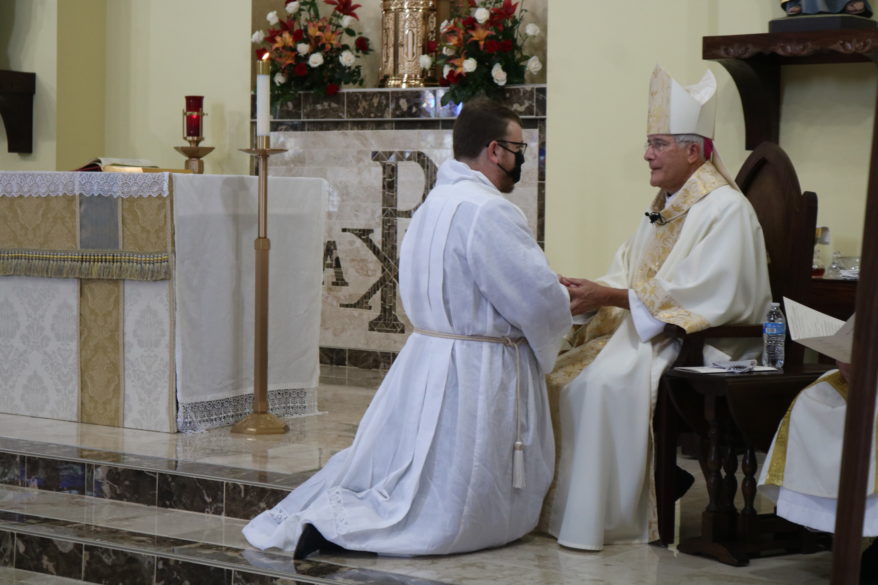
“He had an incredibly powerful voice, and I was impressed by him. So impressed that the next time I saw my pastor, Father [Martin] Ruane, I announced to him that I wanted to be a bishop,” laughed Deacon Bowden.
Father Ruane, who passed in 2015, was a great influence on young Bowden. His sense of humor, humble nature and his joy were attributes that Bowden wanted to emulate. “I don’t remember exactly how he responded to the four-year-old declaring that he wanted to be bishop, but he was able to replace that idea … with the desire to become a priest,” said Deacon Bowden.
Around the same time, Bowden also started talking about wanting to be an altar server. Although Father Ruane’s policy was that alter servers must be in the fourth grade, he graciously did an abbreviated training session just for Bowden in the third grade, shortly before he left St. Jude for a new assignment.
“Altar serving then became a major part of my pre-discernment,” explained Deacon Bowden. “Through altar serving at St. Jude as I grew up, I began to love God, the church and the priesthood in a much deeper way.”
Bowden was also actively engaged in St. Jude’s youth group and enjoyed sharing his faith and teaching the younger altar servers.
His mother, Rhonda couldn’t recall any other possible vocation or career path her son ever mentioned, other than around four years old saying that he wanted to be an architect priest who would build churches and work in the church, imagining as only a child can, to also build underground tunnels to his house so that he could eat lunch with her every day.
By the end of high school, Deacon Bowden strongly felt he was being called to the priesthood. Father Jeffrey Waldrep, who was pastor at St. Jude in Bowden’s high school years inspired his interest in liturgy and was helpful to him as he entered the formal discernment process for priestly formation.
His parents were extremely supportive of his desire and after graduating from Brandon High School in the spring of 2014 he completed his application for the seminary just as Bishop Joseph Kopacz arrived in the diocese.
“We strongly encouraged Andrew to have a ‘backup-plan’ in case the new bishop was not eager to send an 18-year-old to seminary college. [But], he was adamant that God’s will would prevail, and that God would make a way for him. And God did,” said Bowden’s mother.
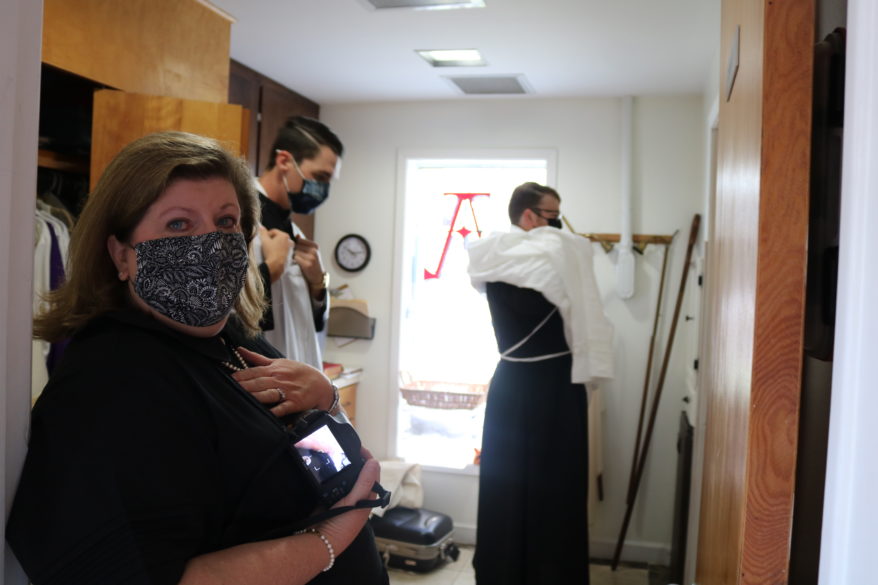
Bowden spent four years at St. Joseph Seminary College in Covington, Louisiana and moved on to Notre Dame Seminary, where he just completed his third year before being ordained a transitional deacon on May 15.
“During the diaconate internship we try to place our men in parishes that will give them a wide range of experiences,” said Father Nick Adam, director of vocations, who first met Bowden in high school, while he was in seminary school.
“This will be the first time a seminarian baptizes a baby, witnesses a wedding or presides at a funeral, and we want to make sure they have plenty of opportunities to dive into parish life and walk with families in this way.”
Those in the transitional diaconate are also tried to be place at a parish with a school so they can be a part of the day-to-day life of the kids and faculty. A great place for that is at St. Mary Basilica and Cathedral School in Natchez, and Bowden is looking forward to his service to the community.
“During seminary, I have greatly missed the local expression of the church that is the Diocese of Jackson. I am greatly looking forward to spending the next few months in Natchez with Father [Scott] Thomas and Father [Mark] Shoffner. … It will be so good to get to know people there and learn how I can serve them best,” said Deacon Bowden.
During his diaconate ordination, Bowden’s mother cried ‘happy tears.’ “Seeing my son so happy and knowing that he was responding to God’s call made my heart sing with joy.”
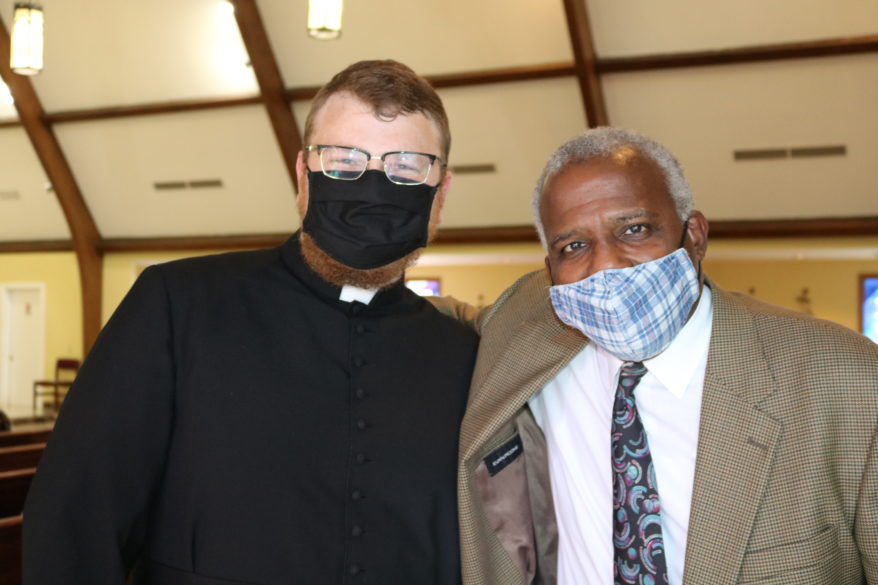
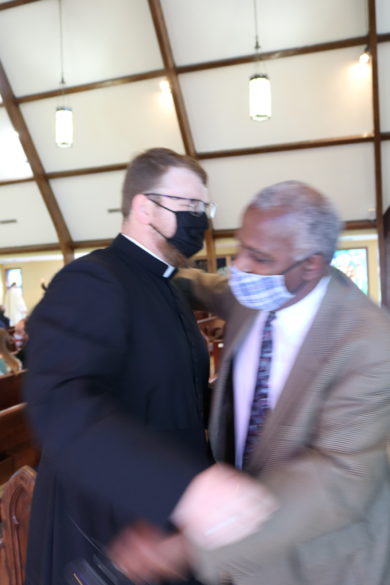
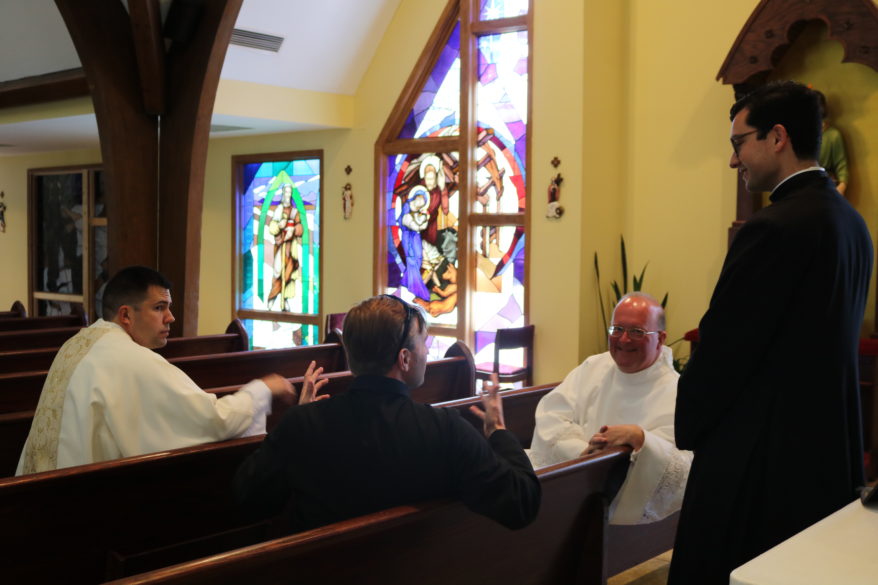
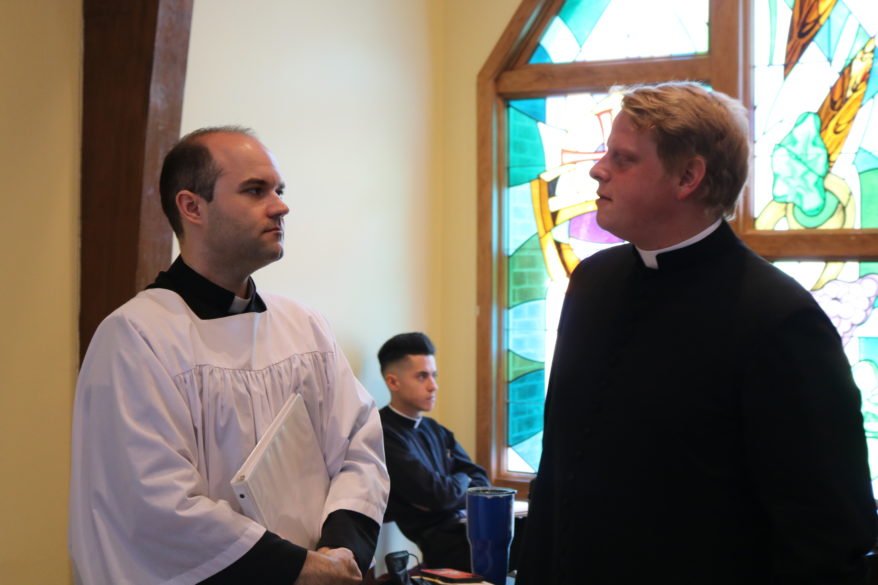
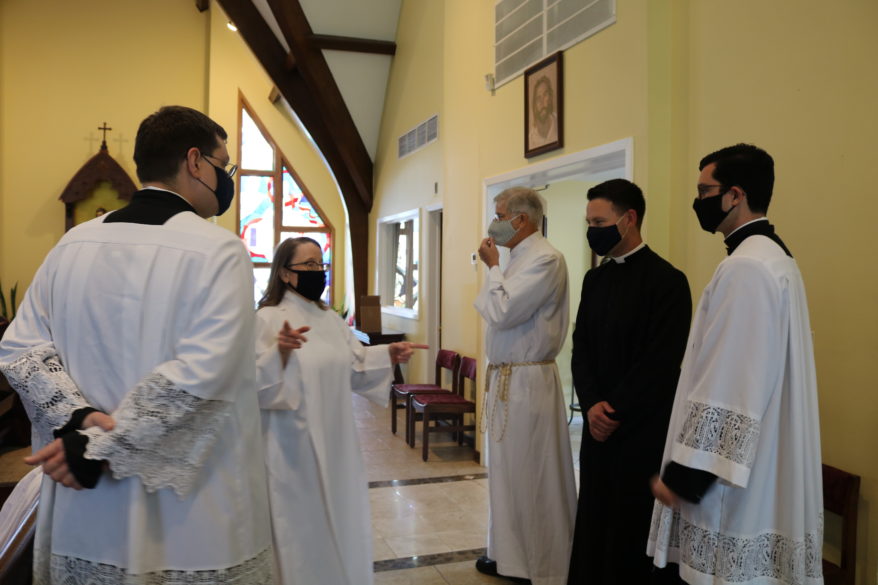
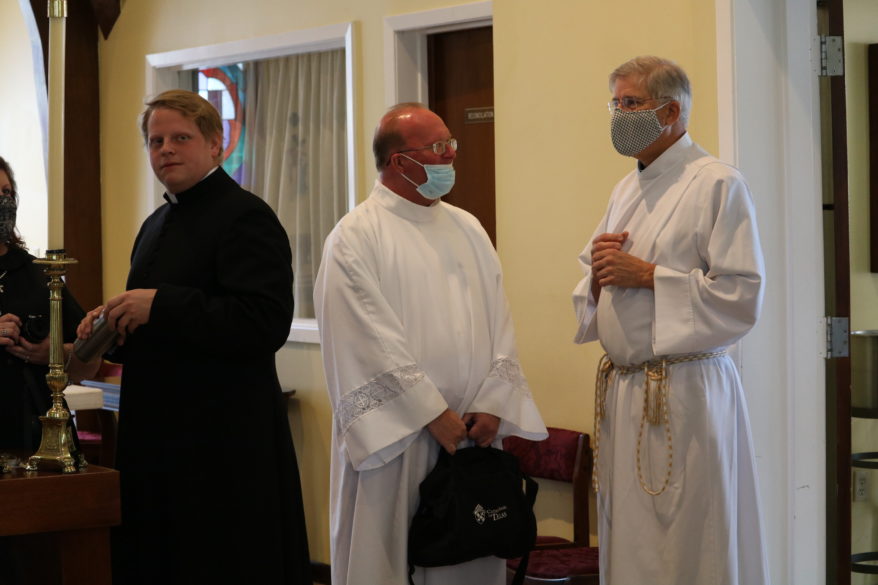
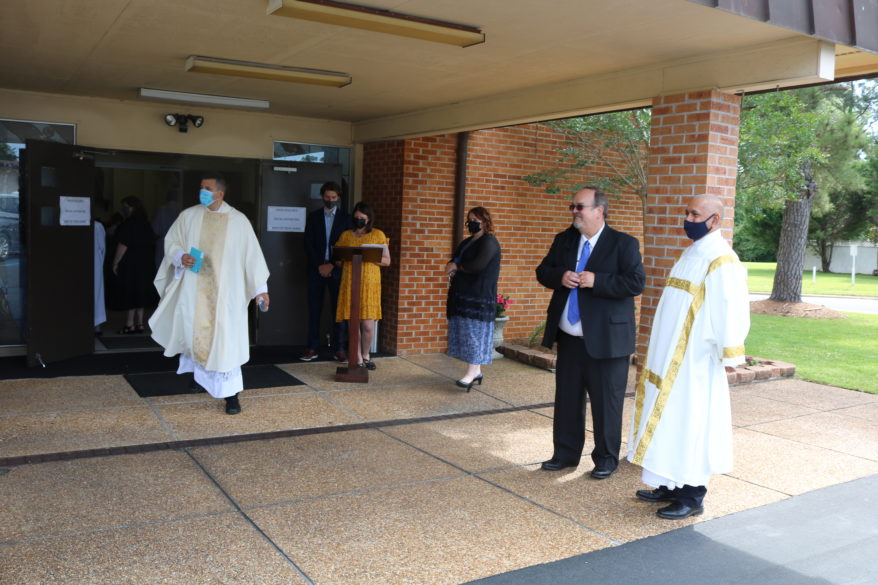
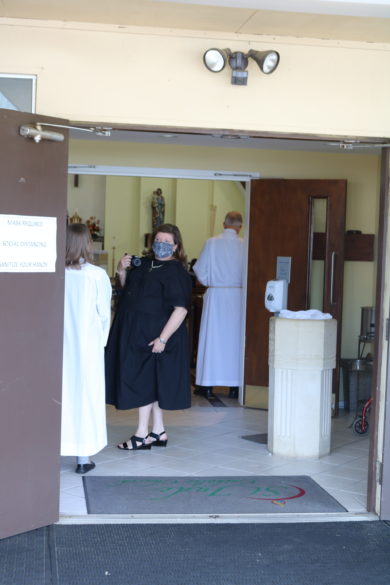

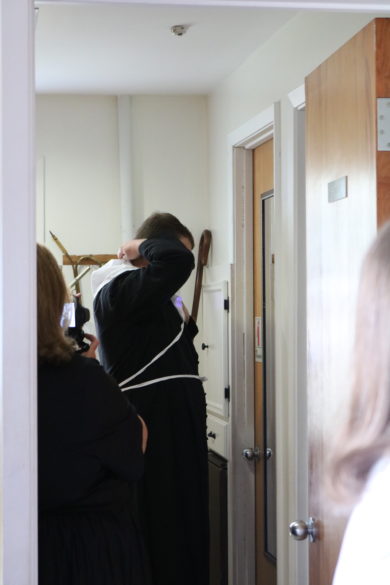
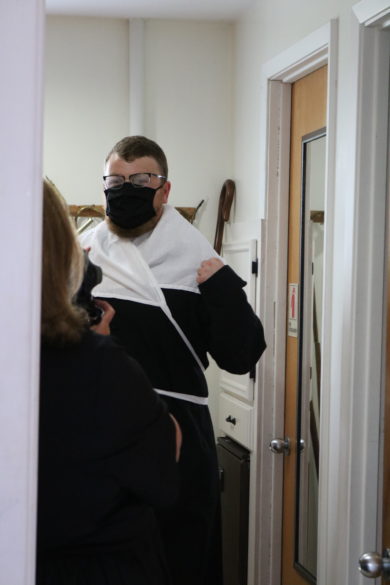
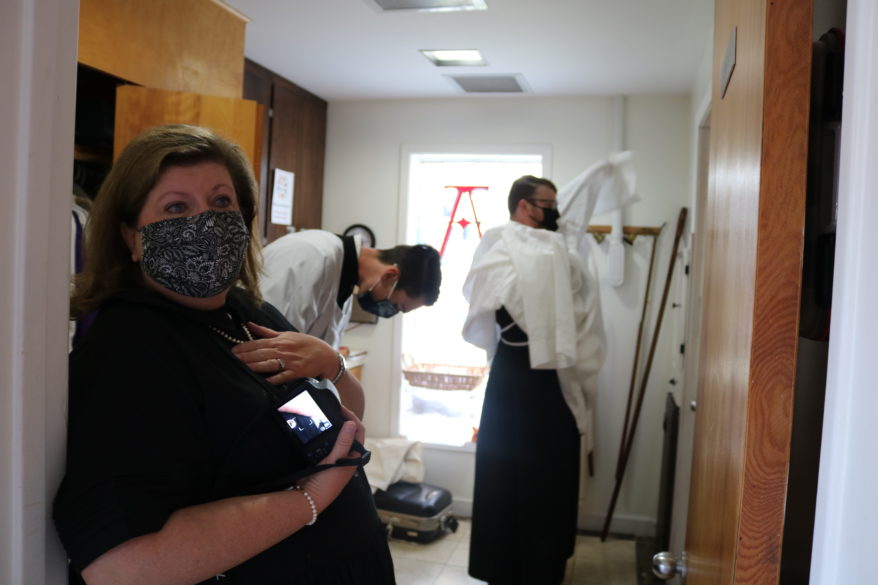
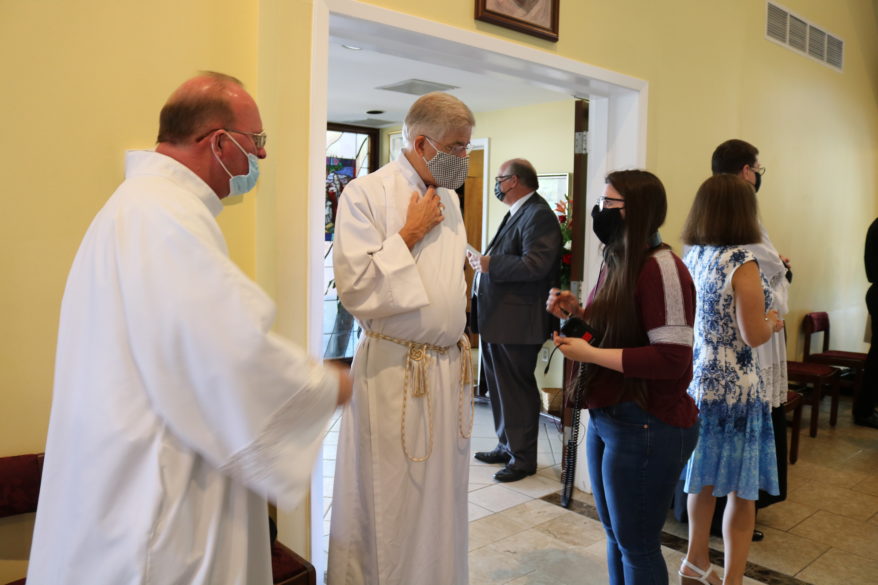
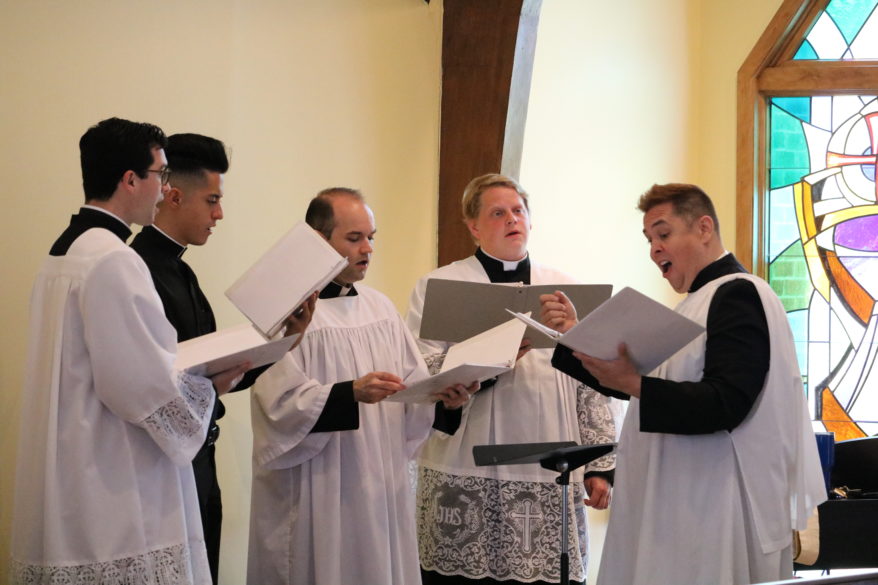
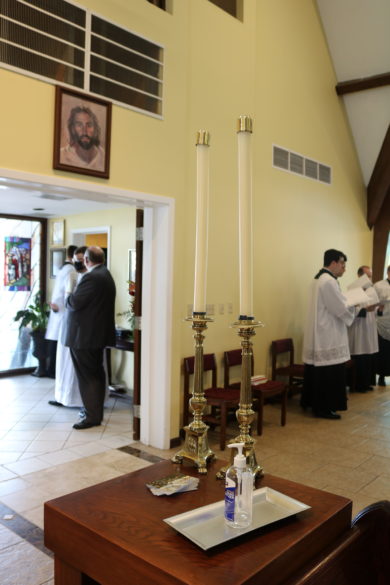
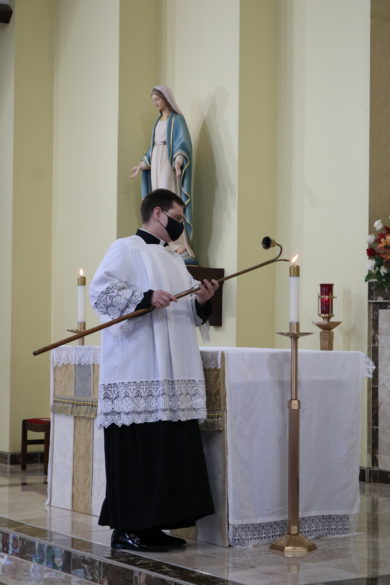

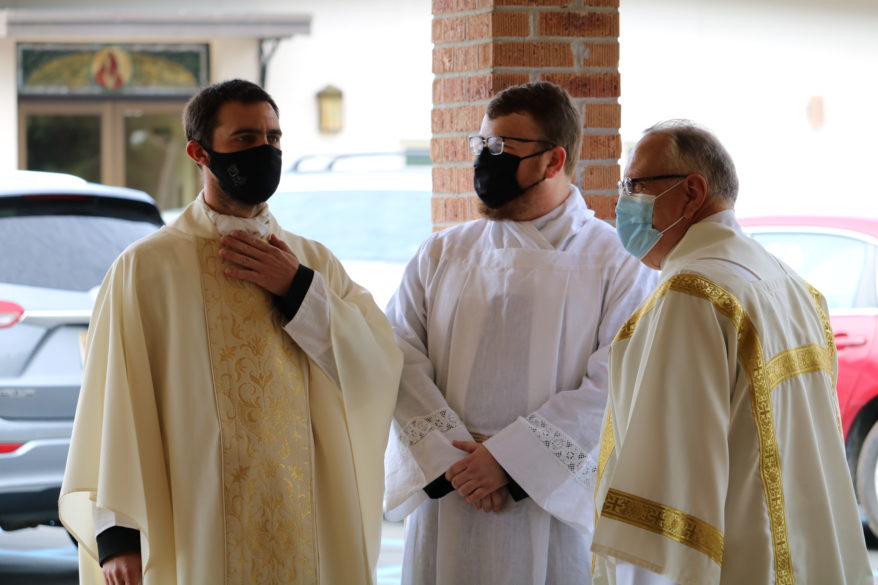
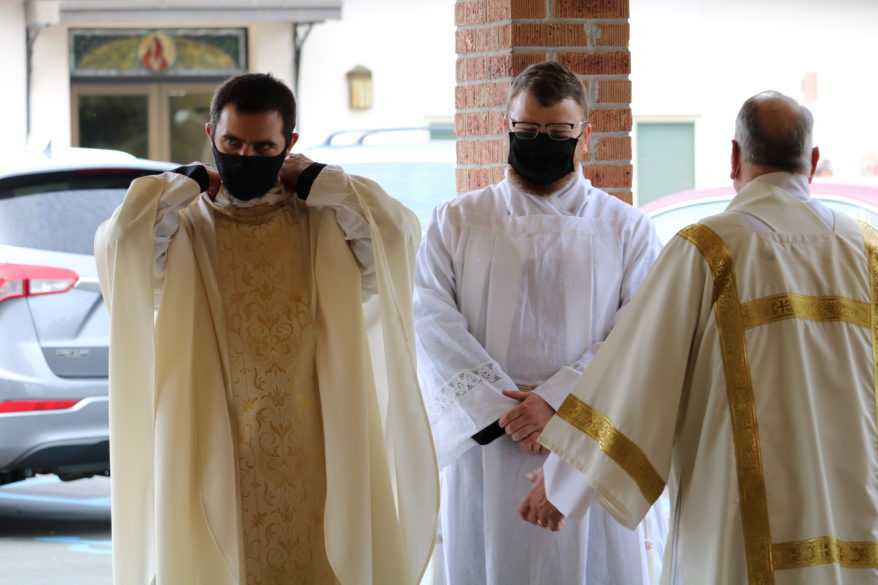
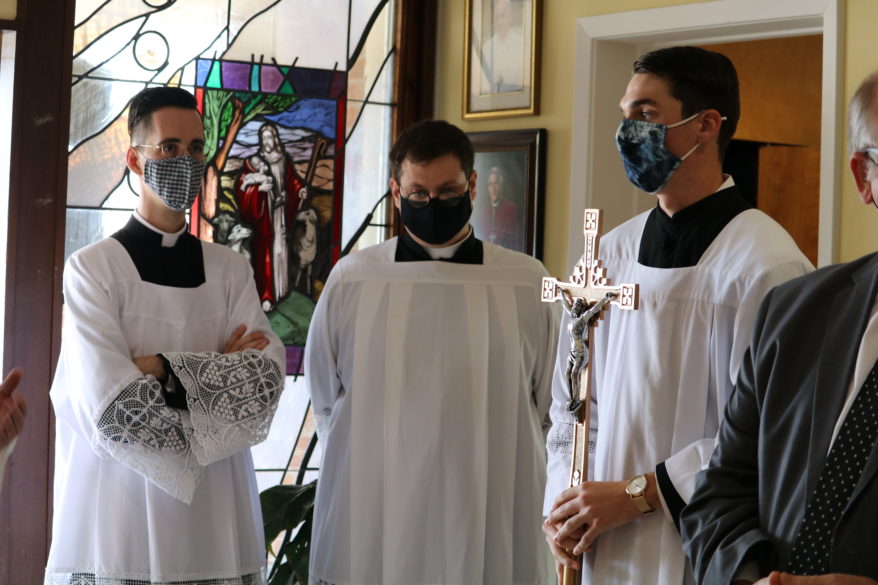
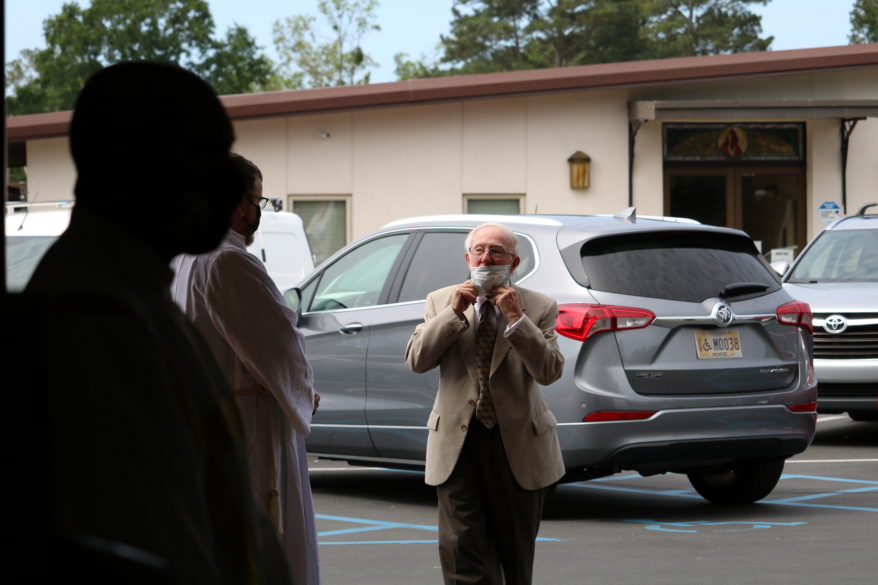
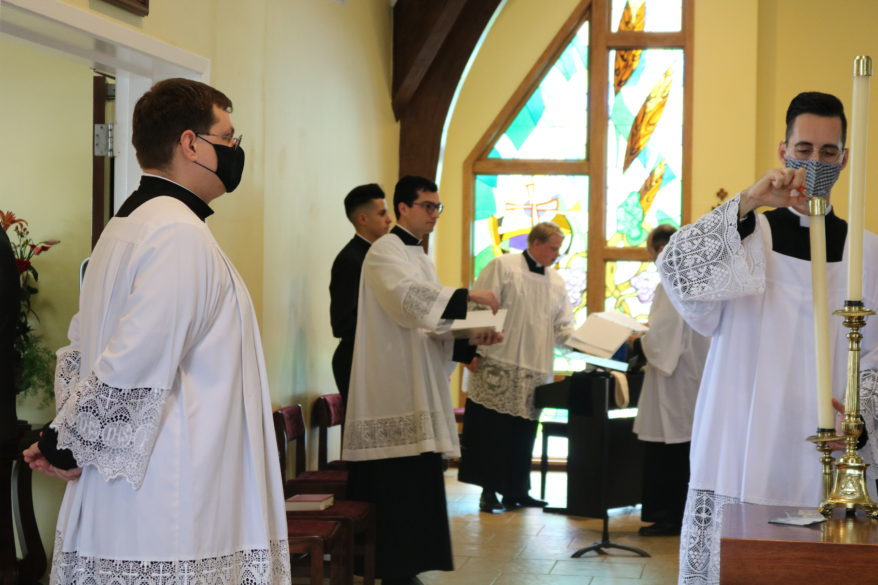
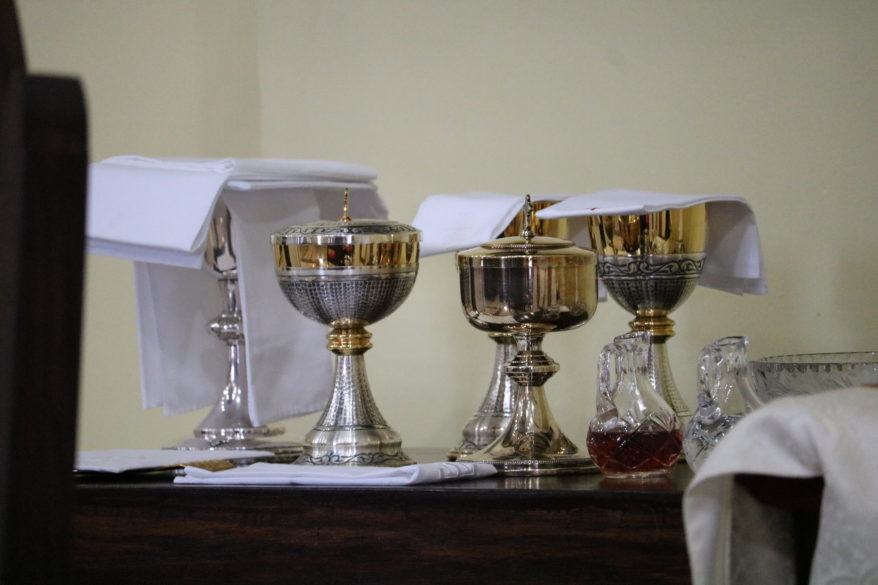
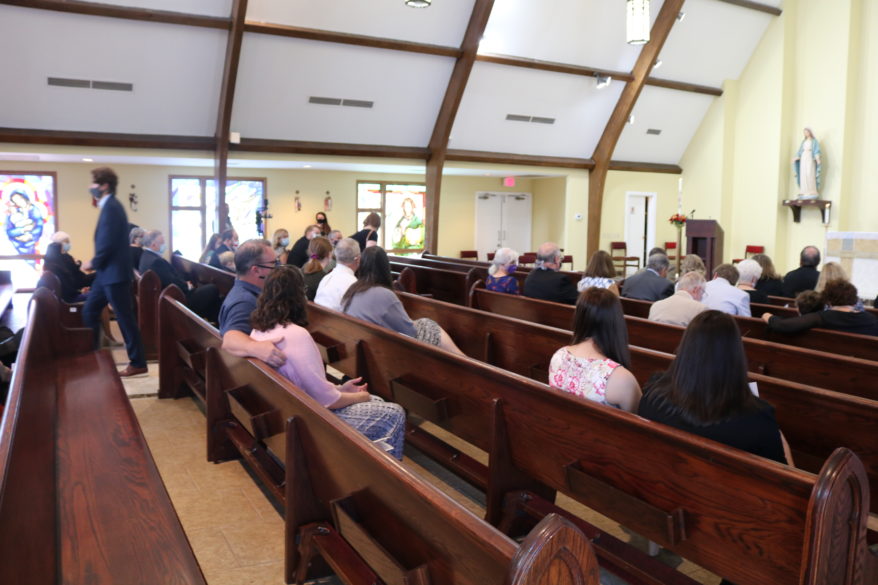
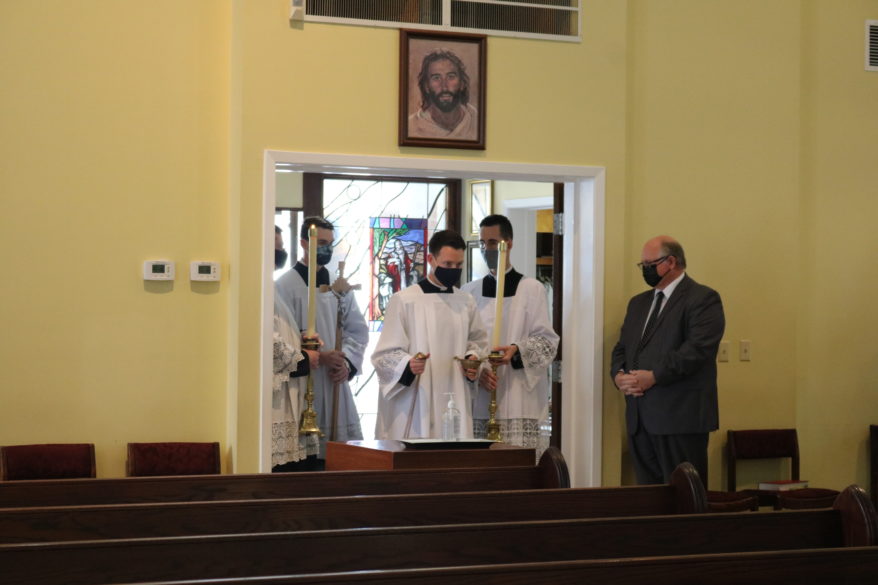
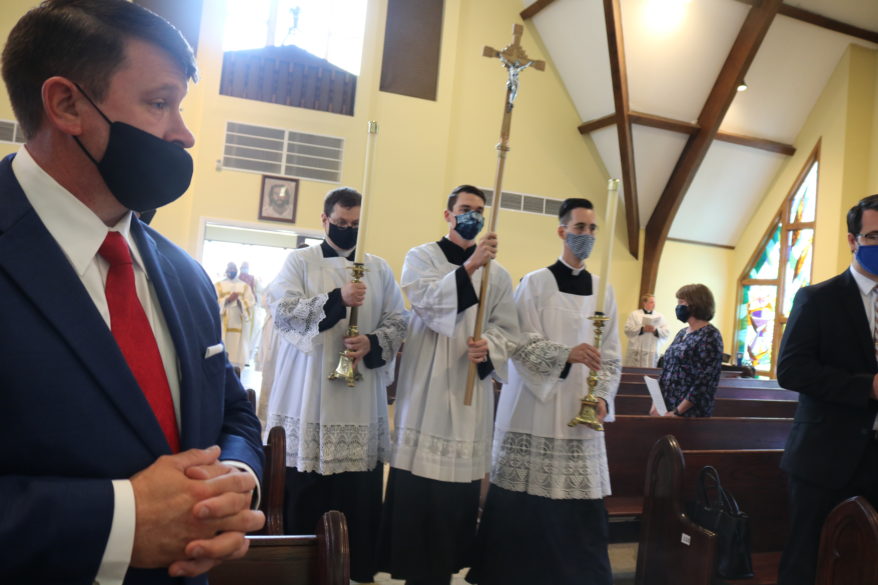
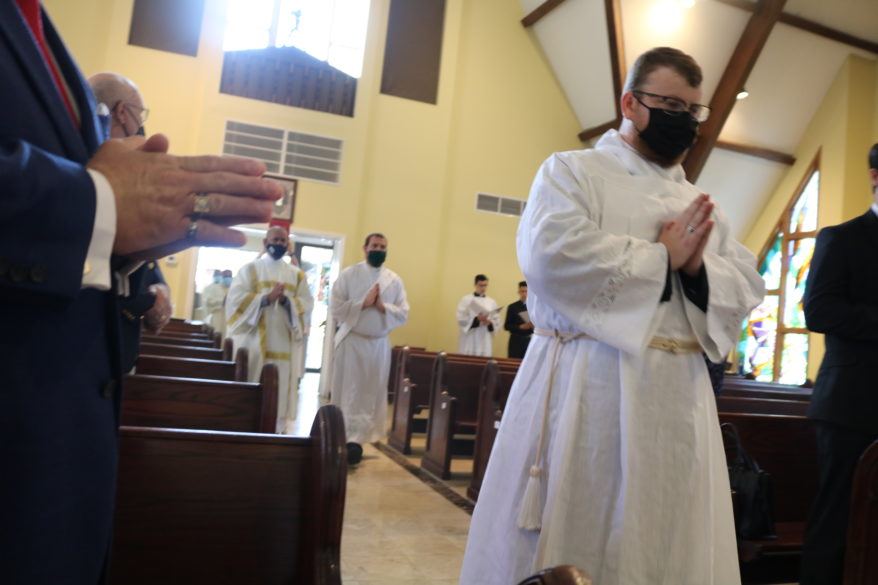
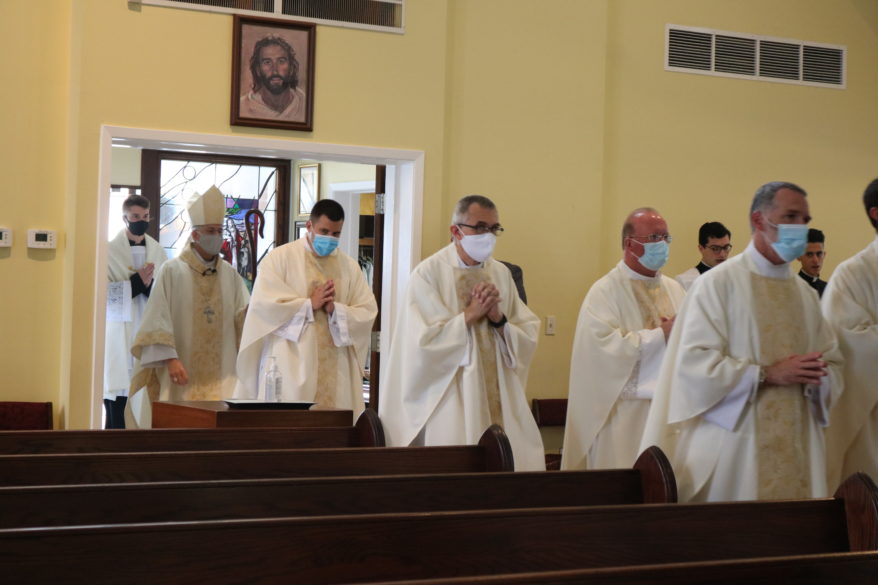
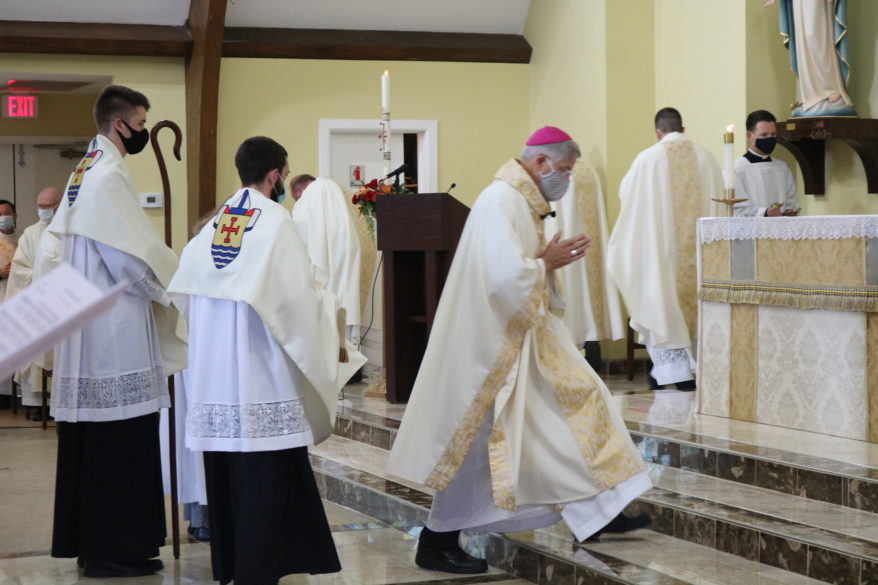
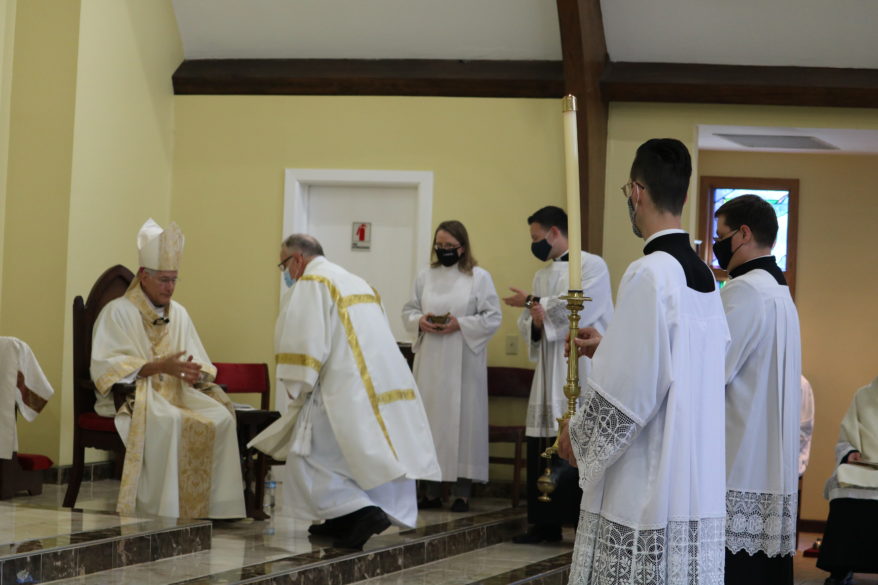
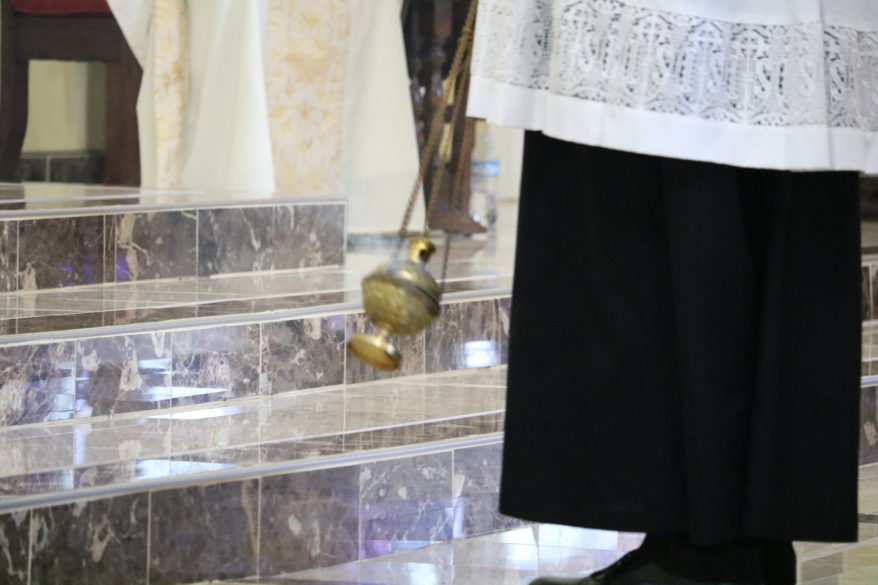
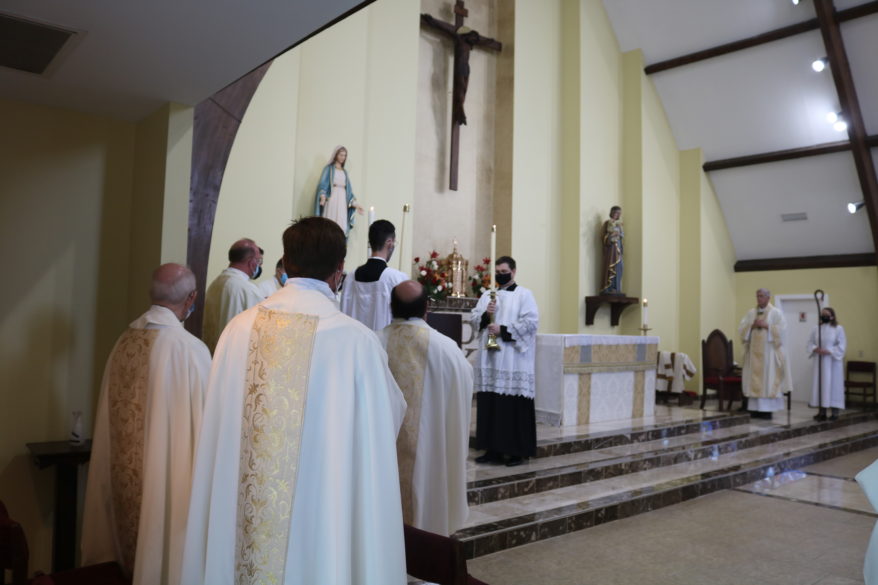
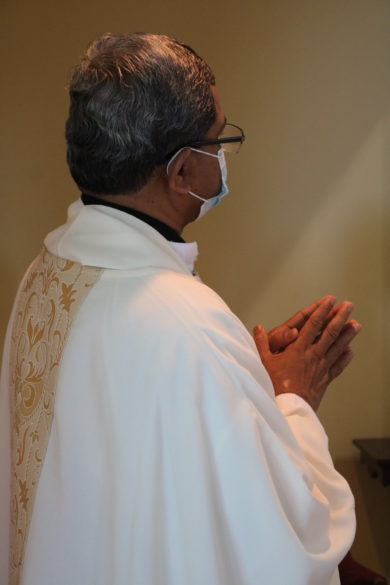
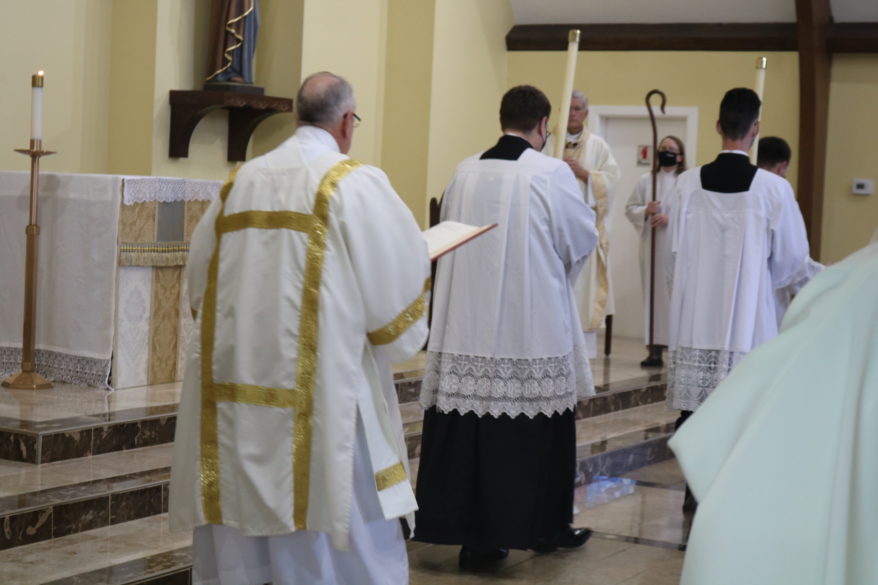
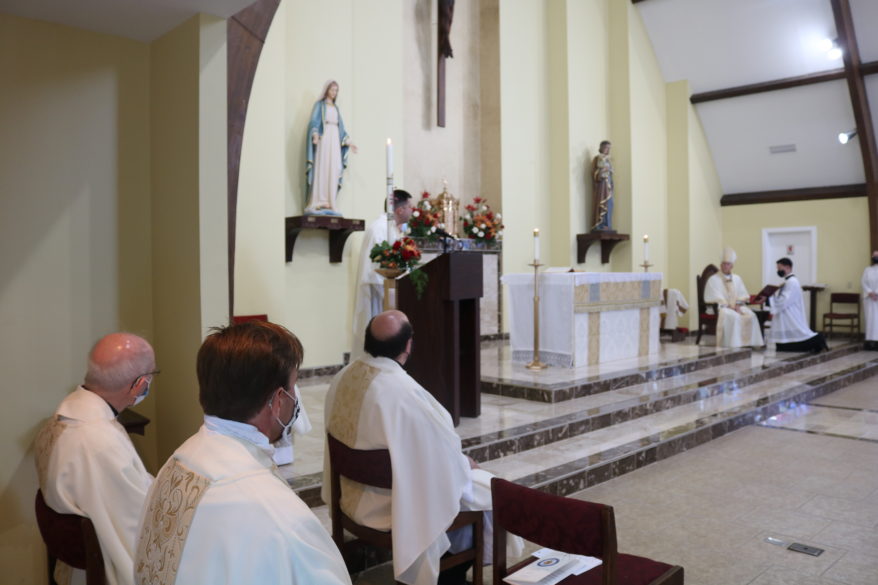


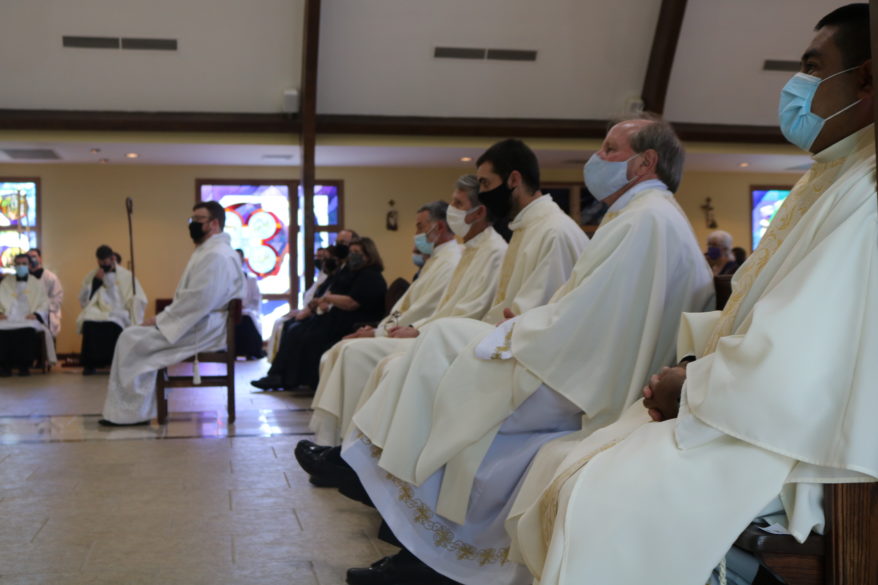
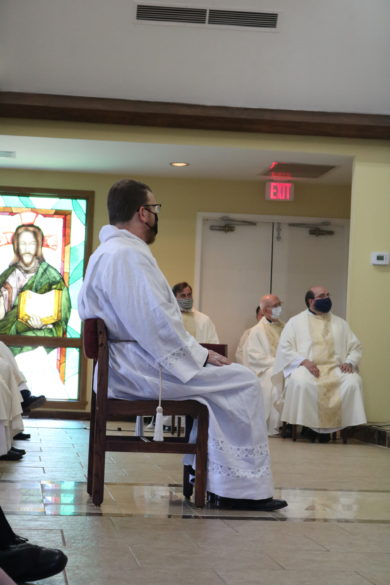
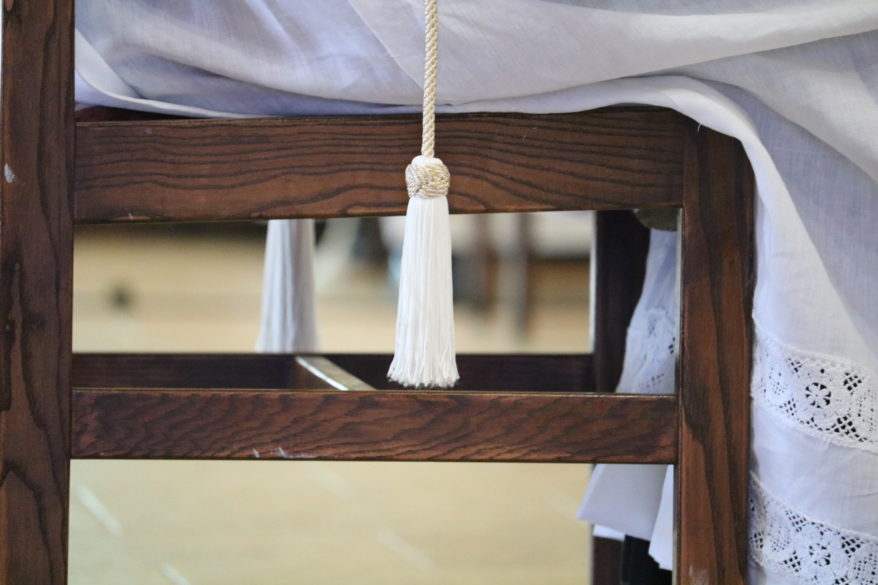
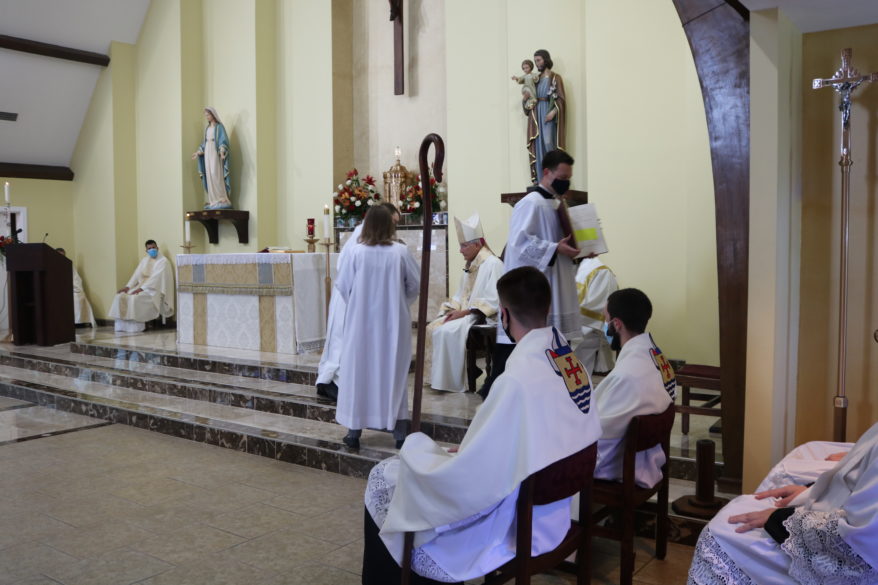
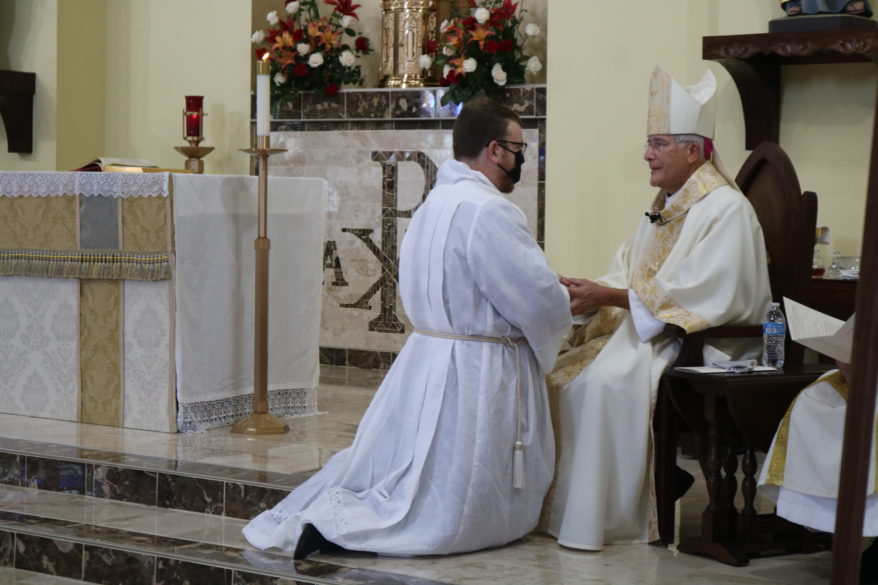
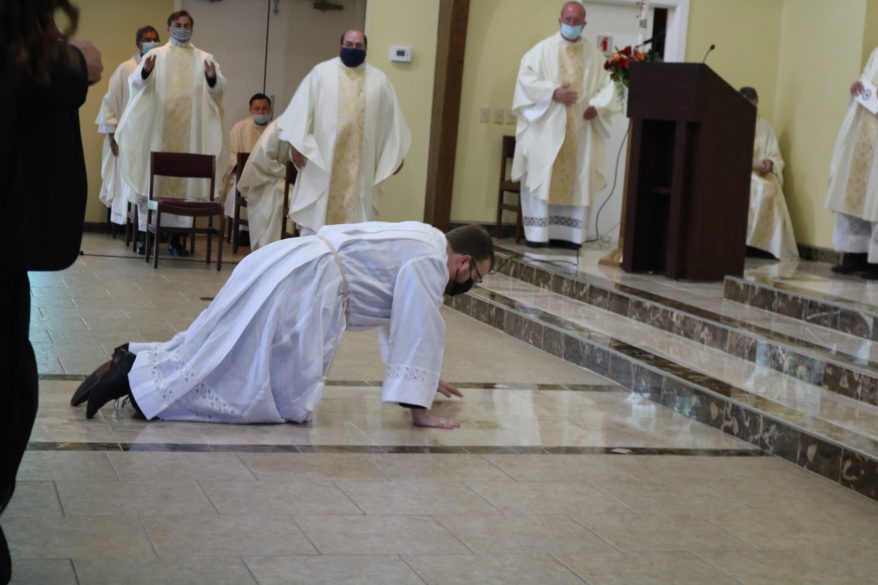
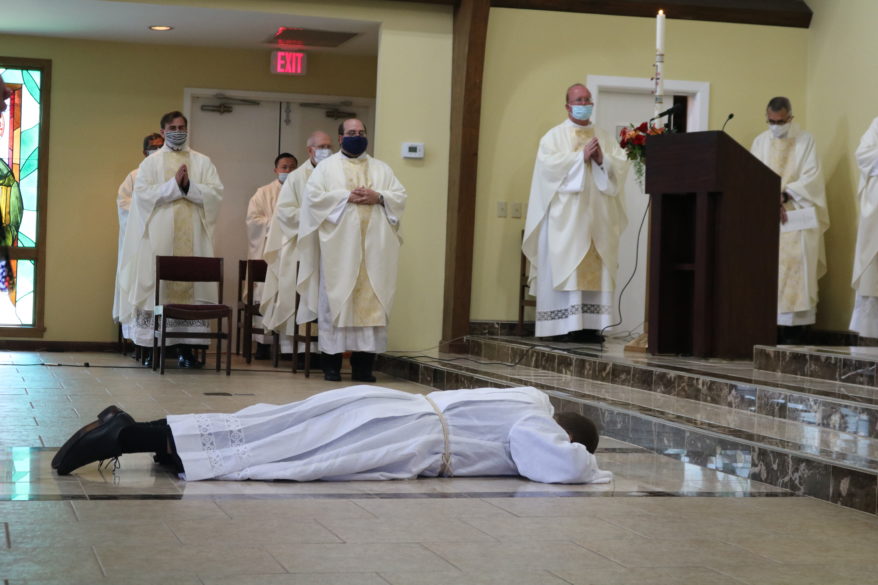
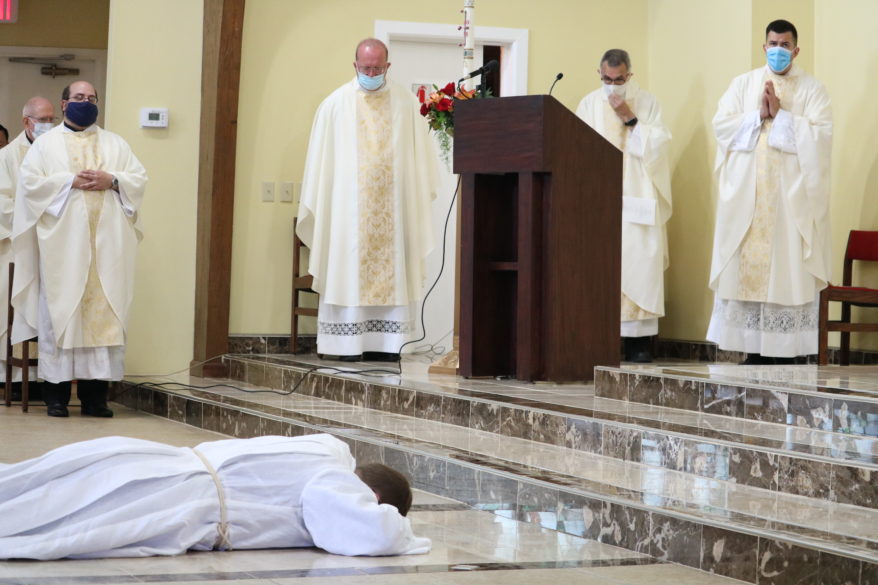
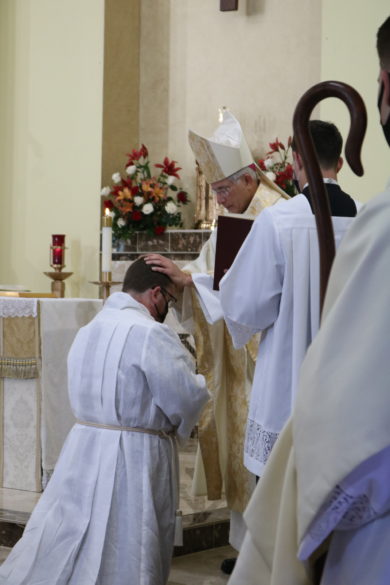
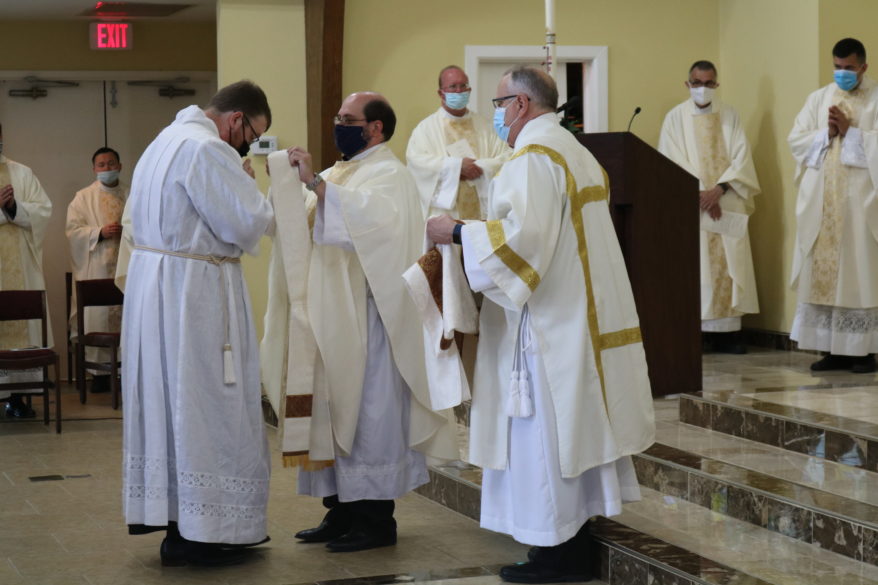
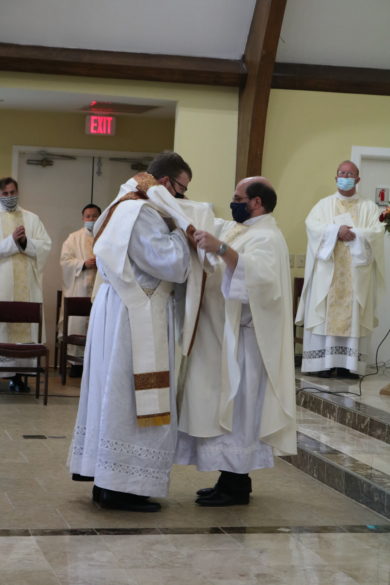
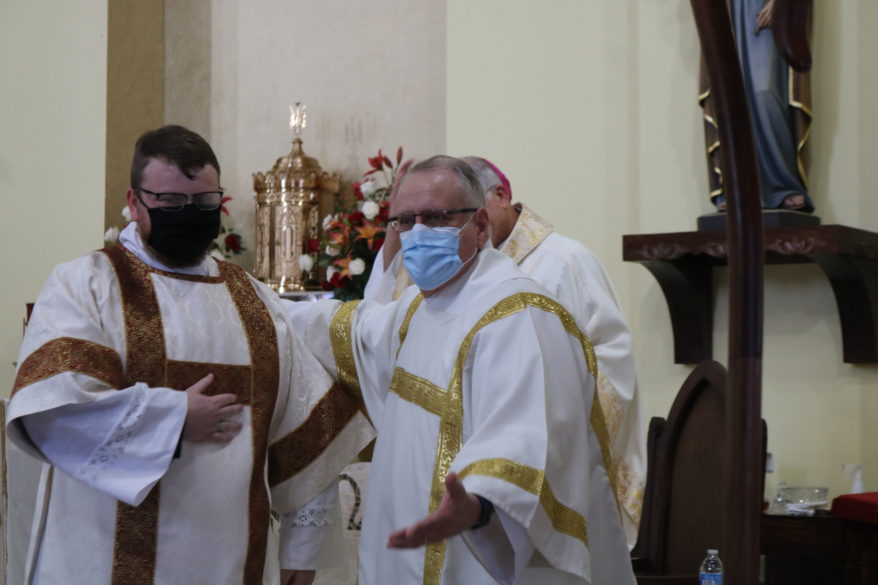
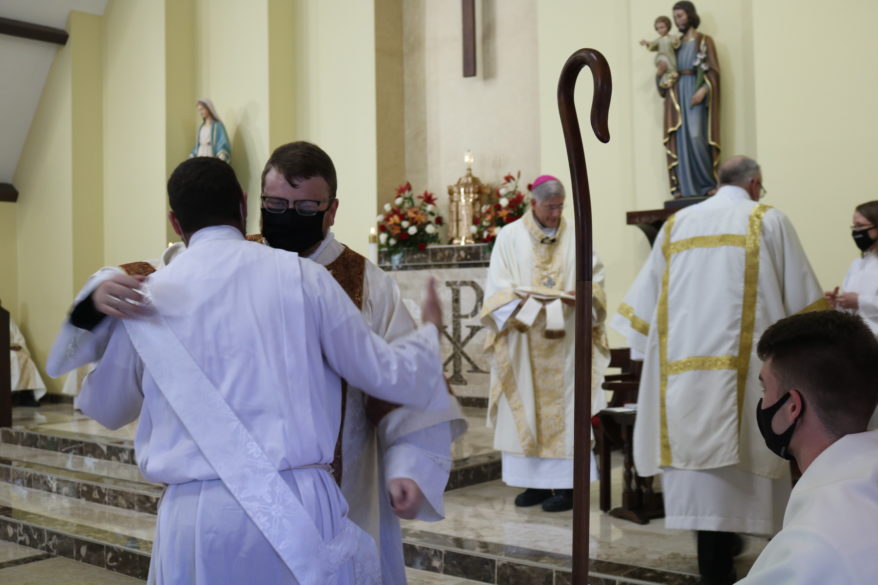
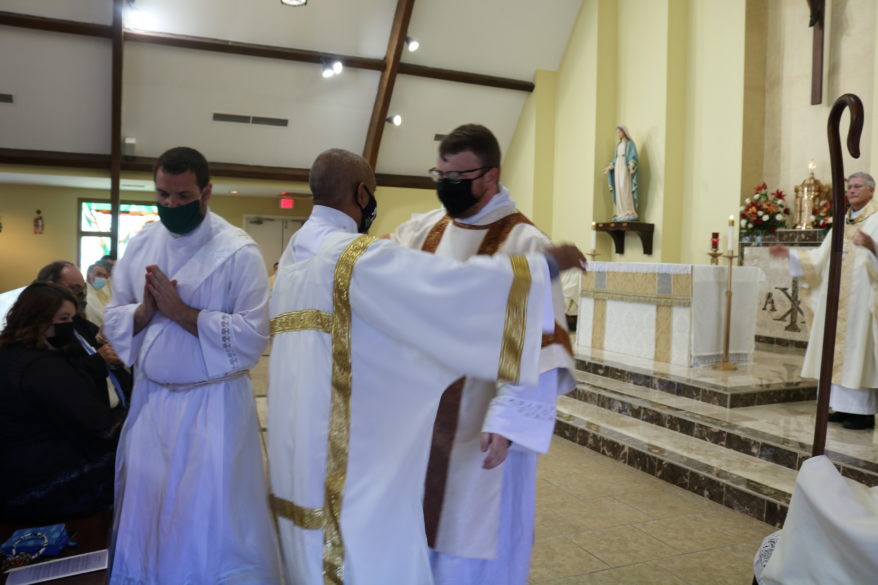
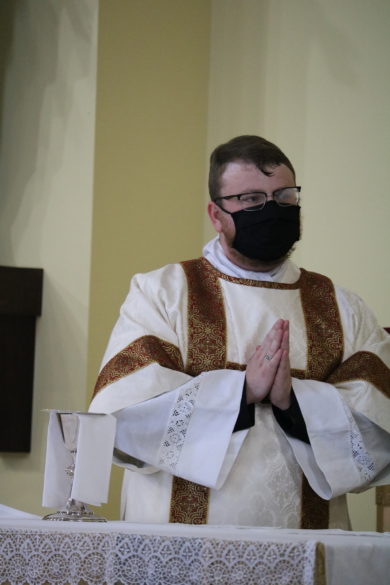
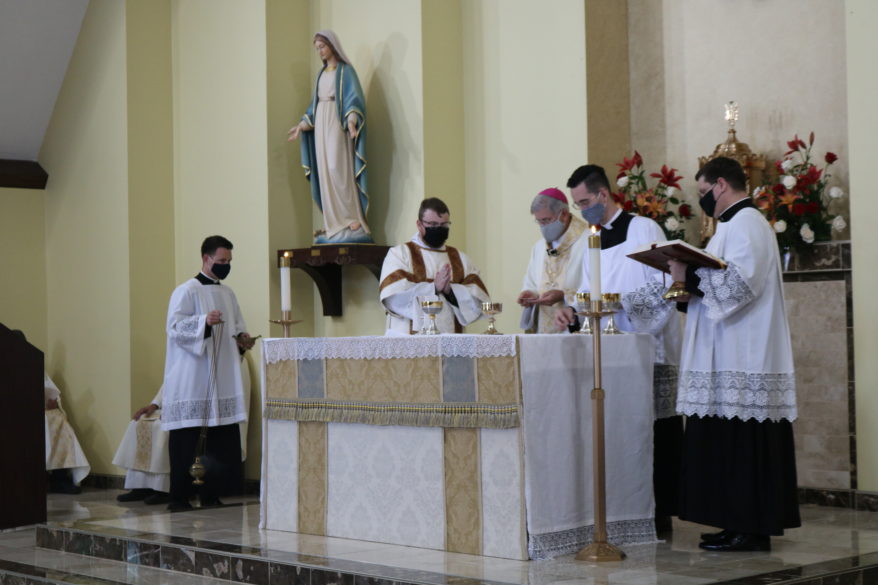
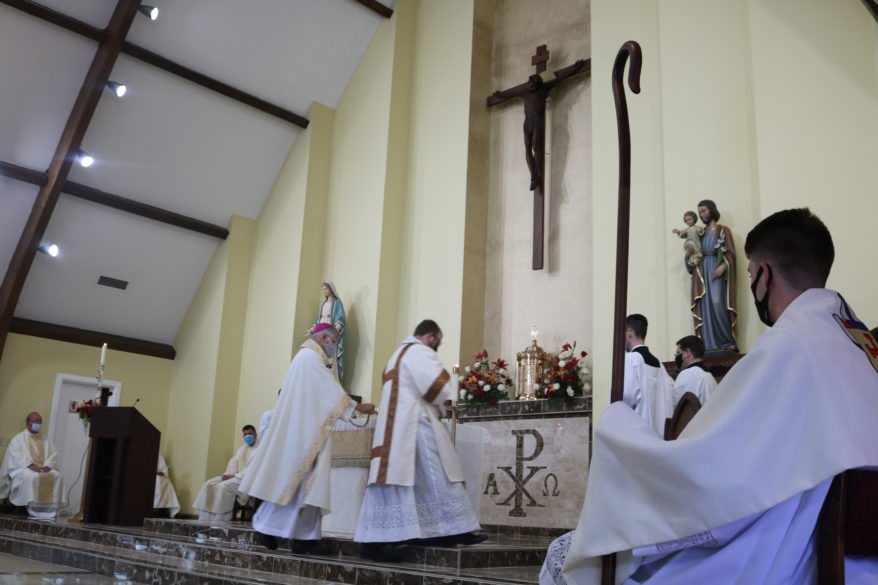
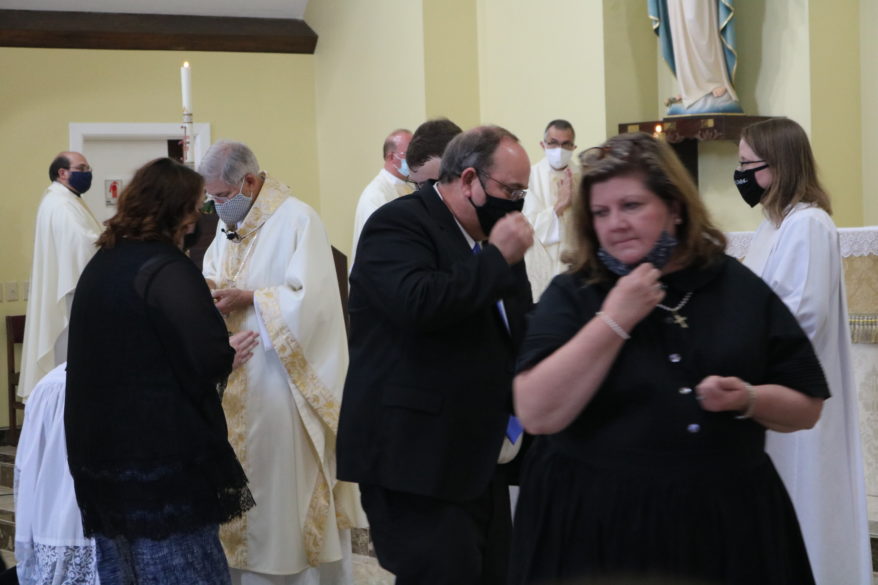
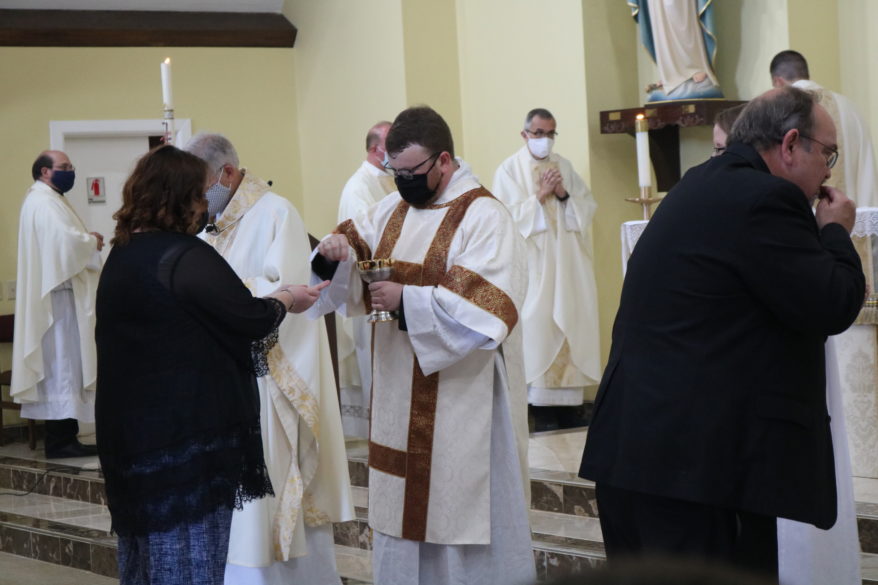

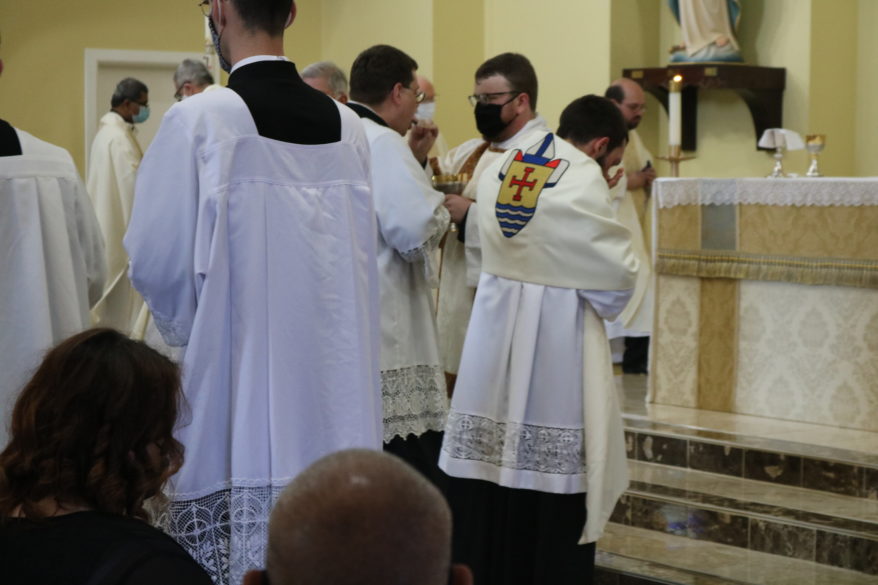
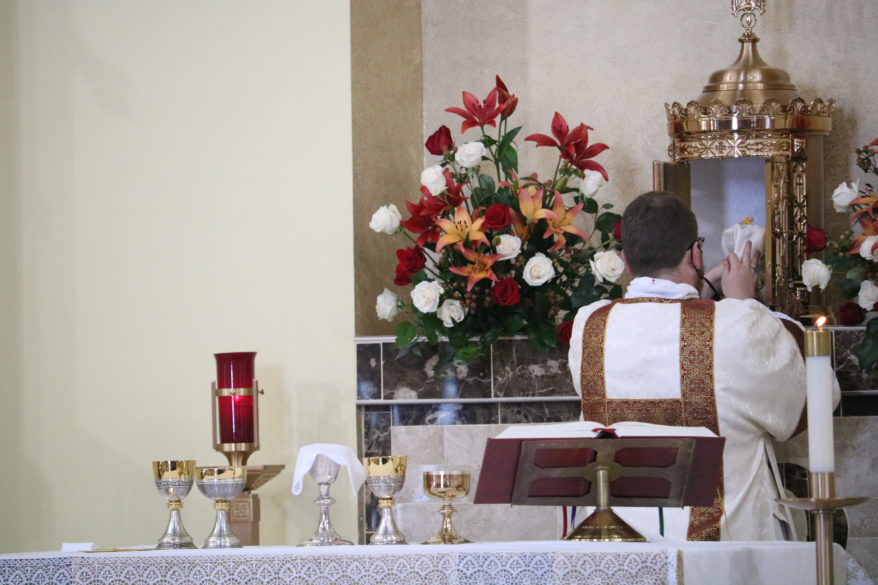
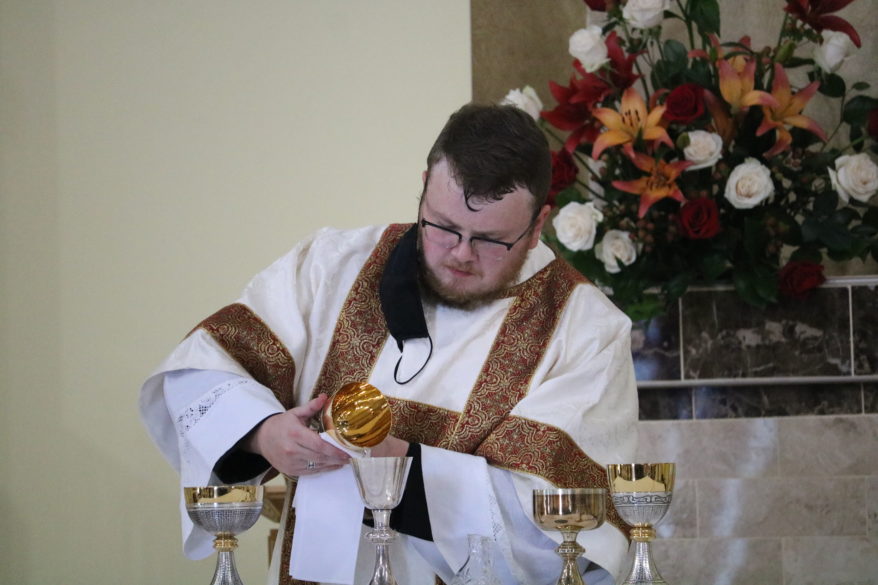
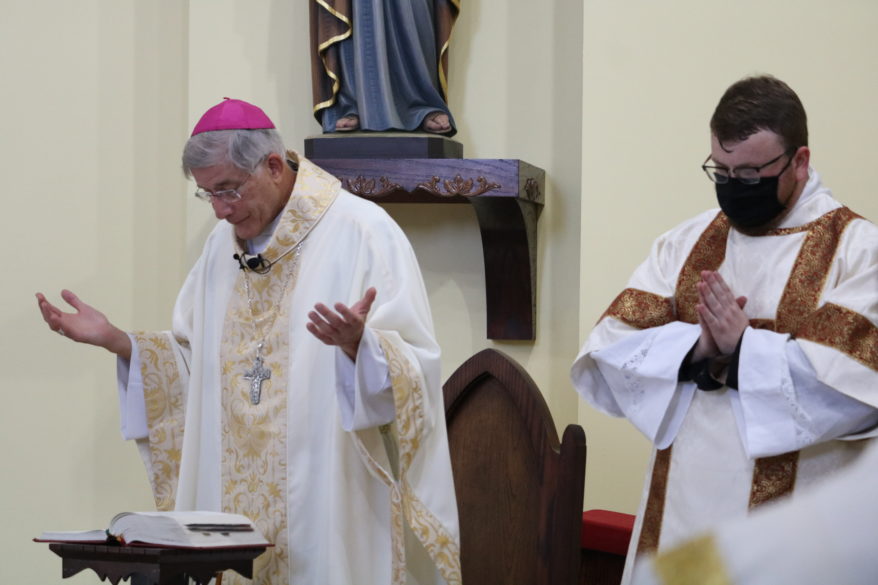
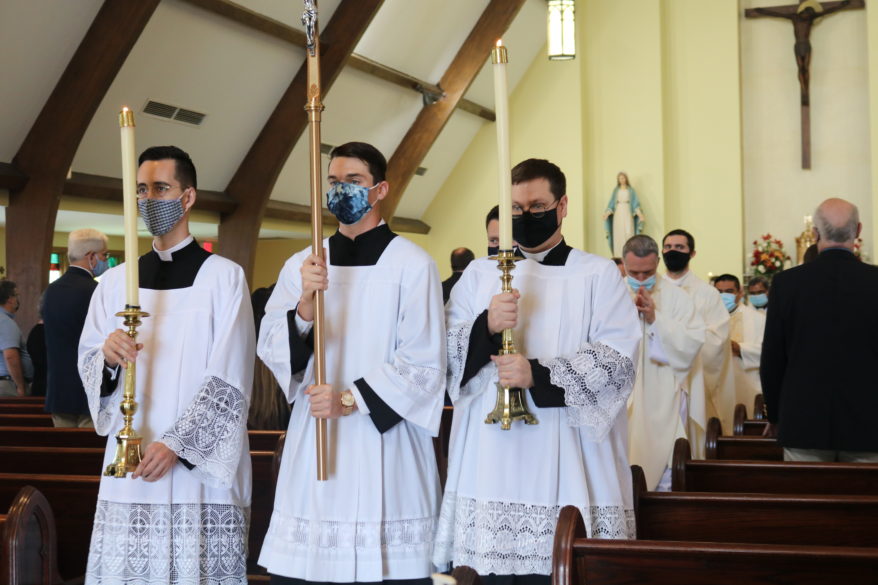
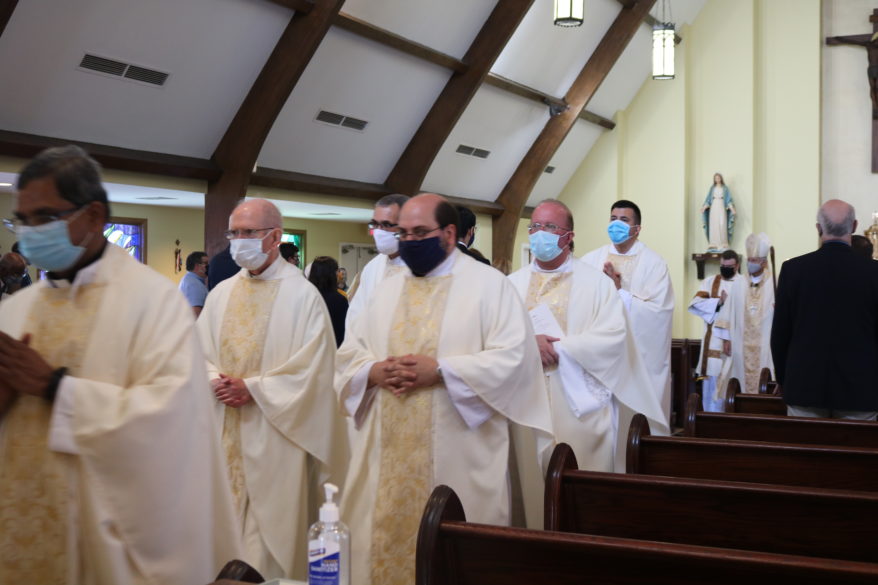
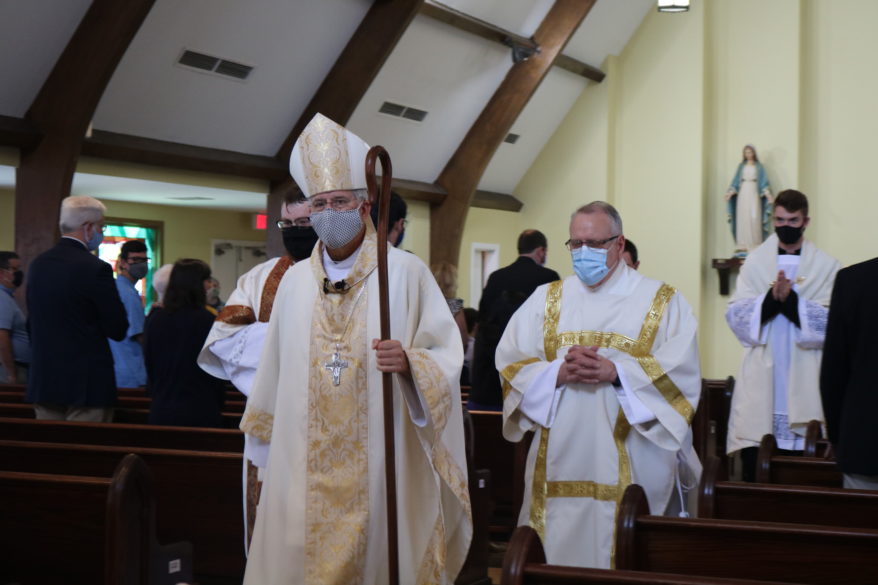
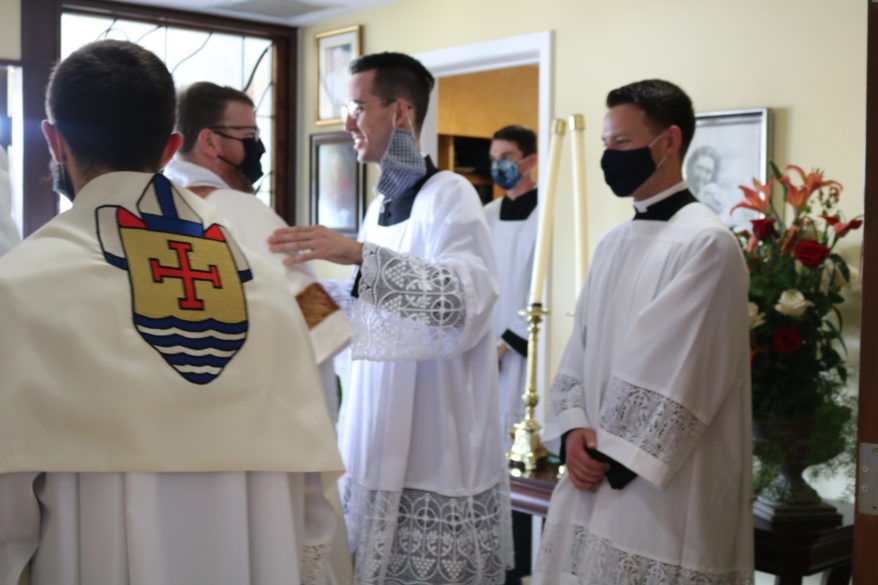

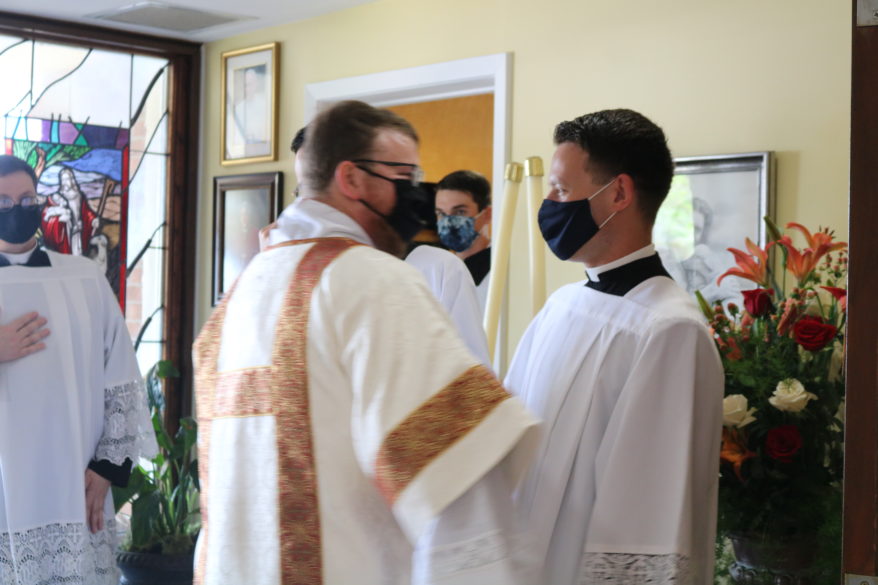
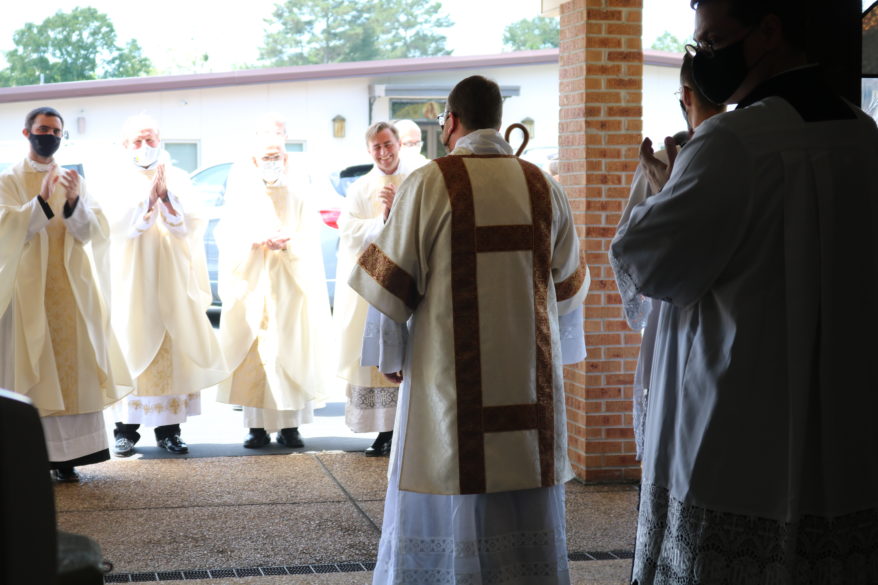
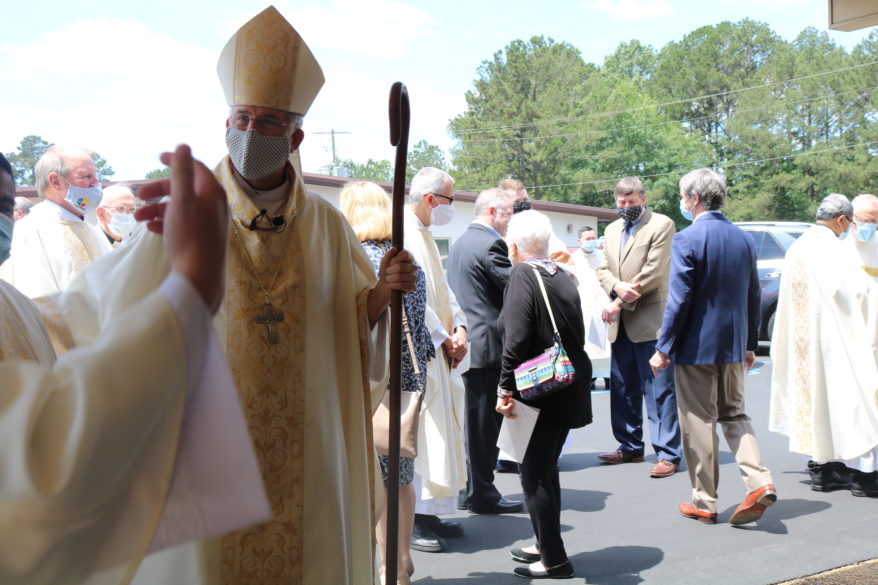
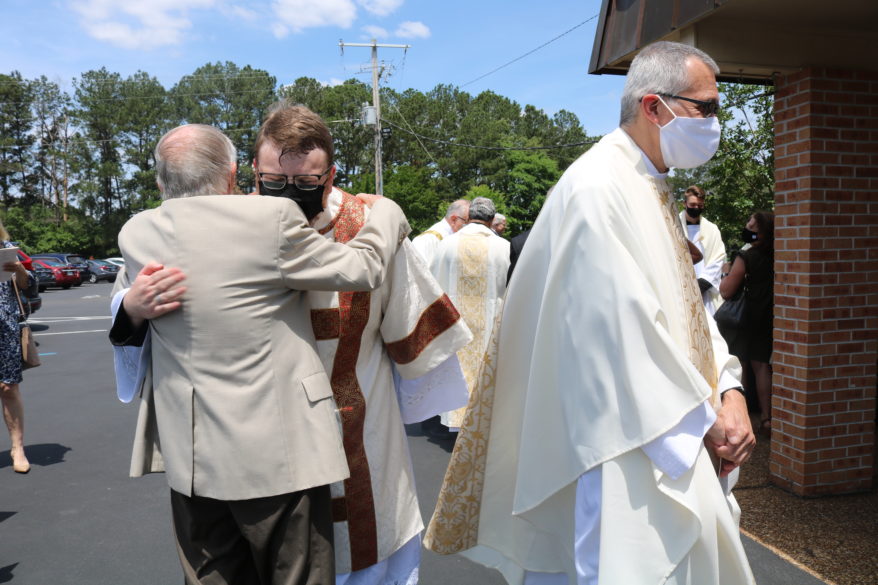
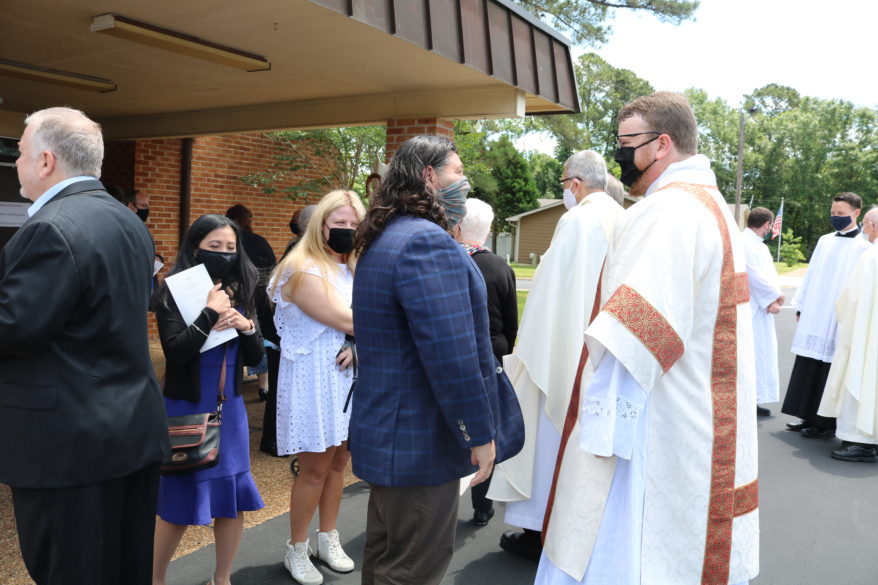
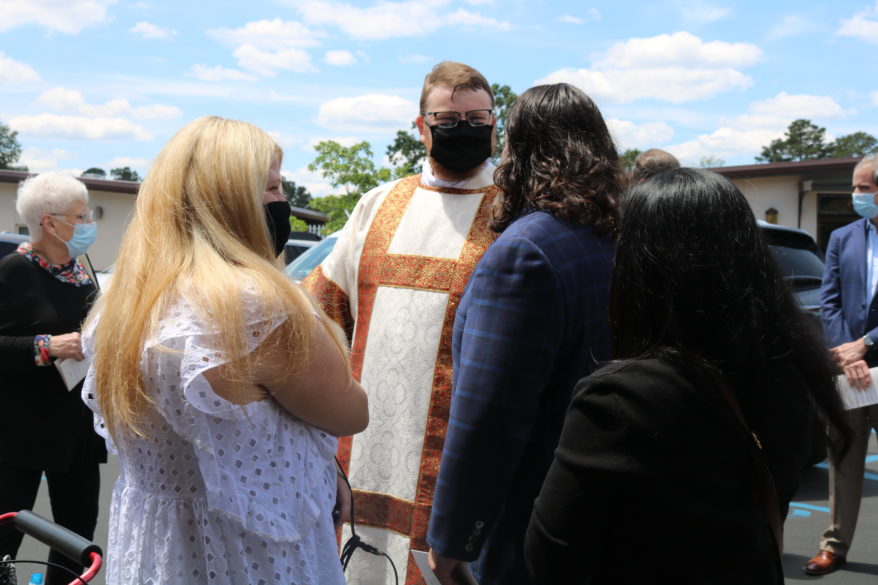
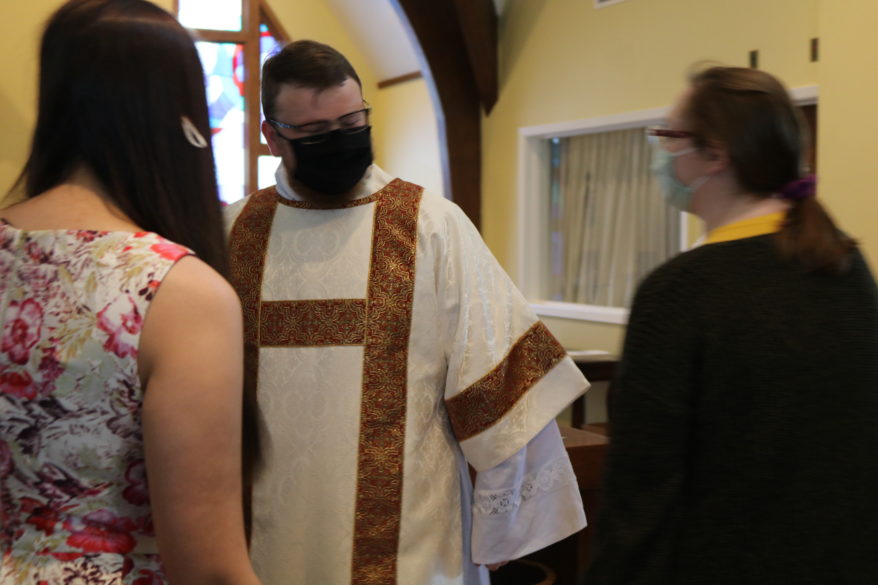
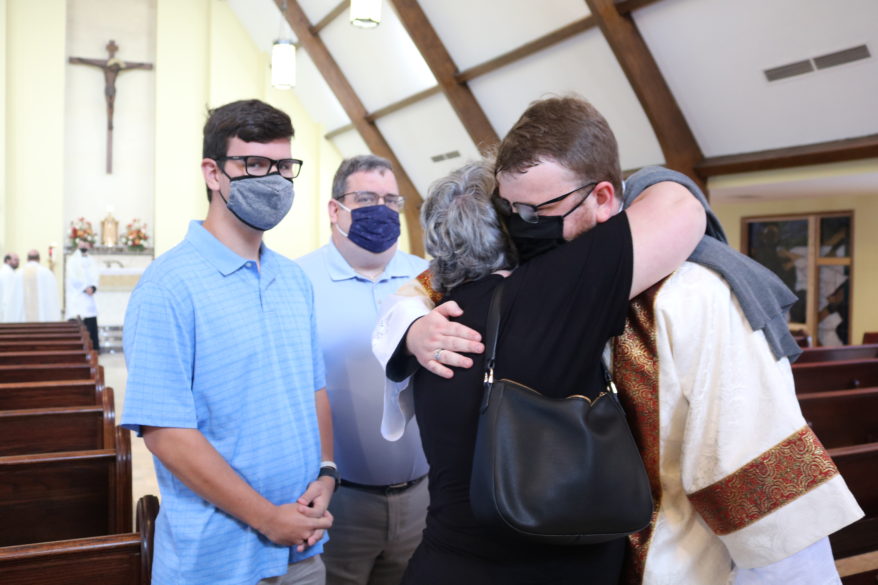
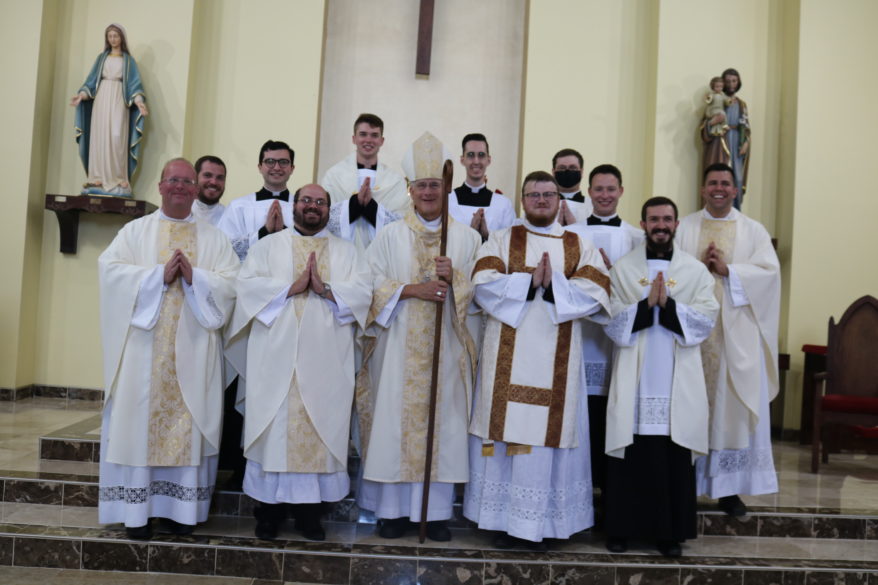
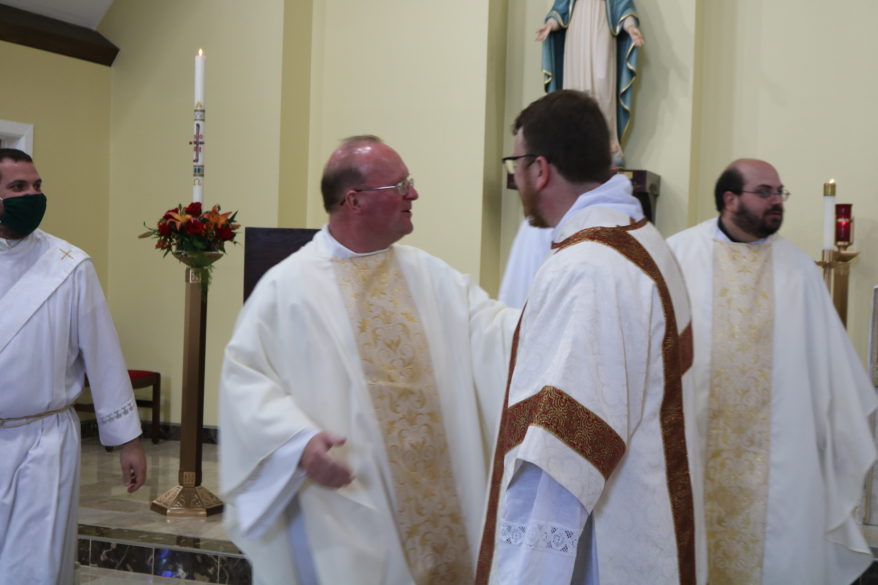
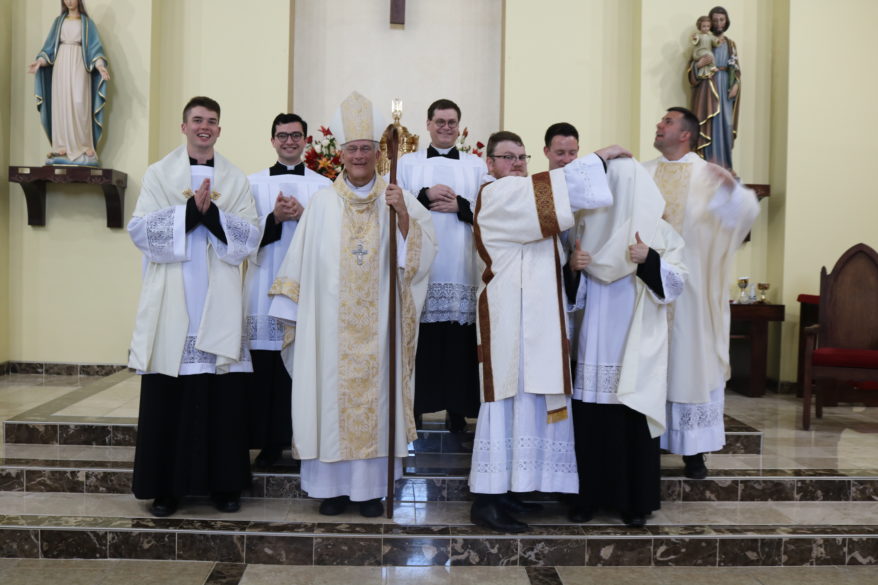
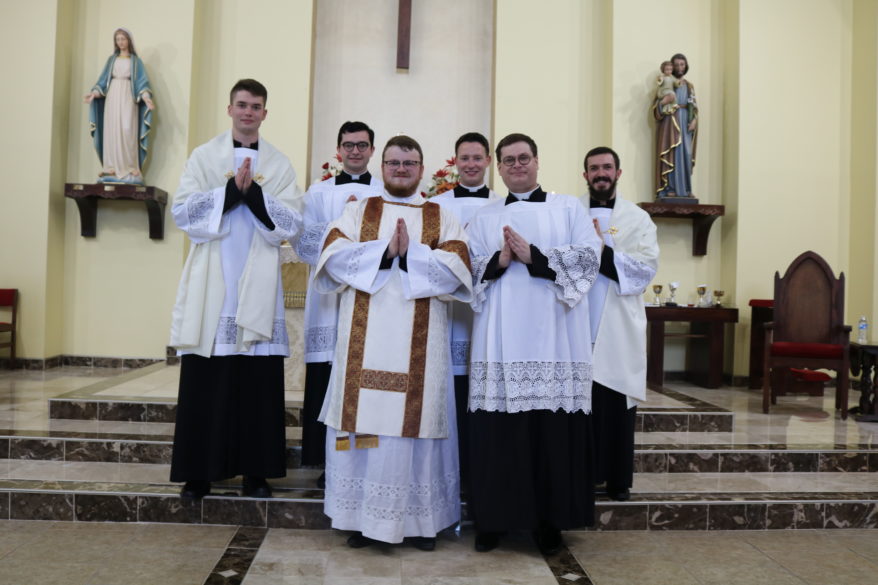

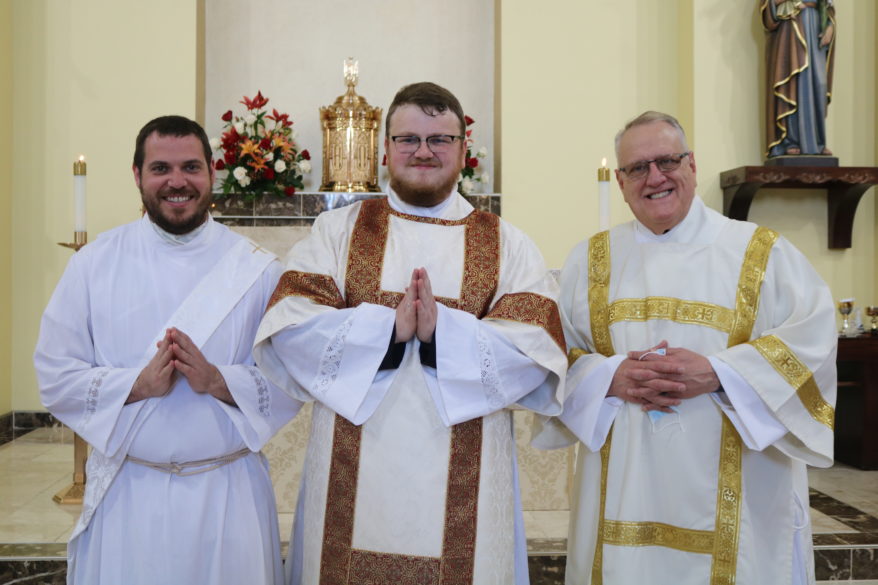
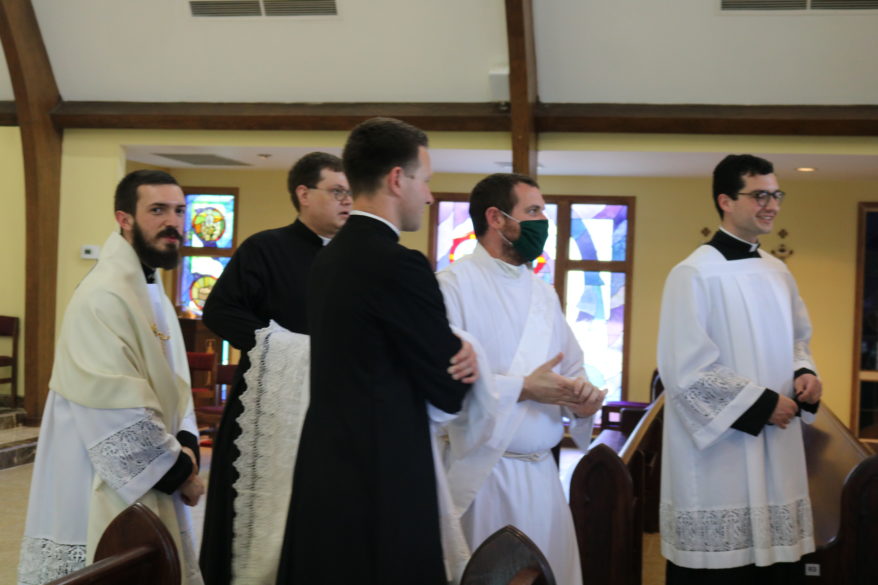
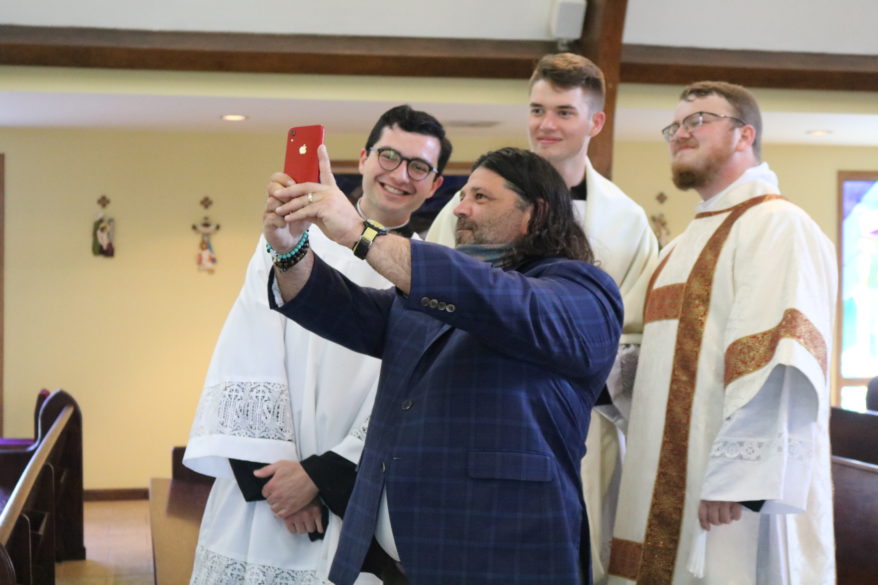
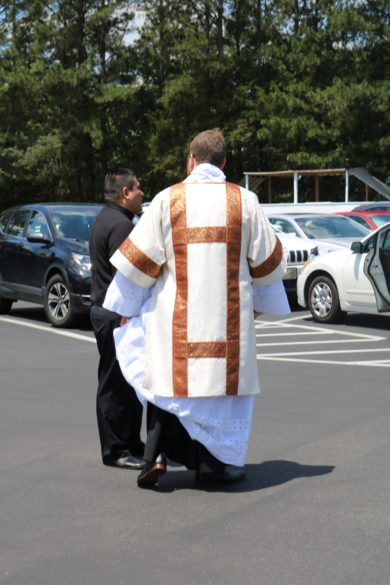
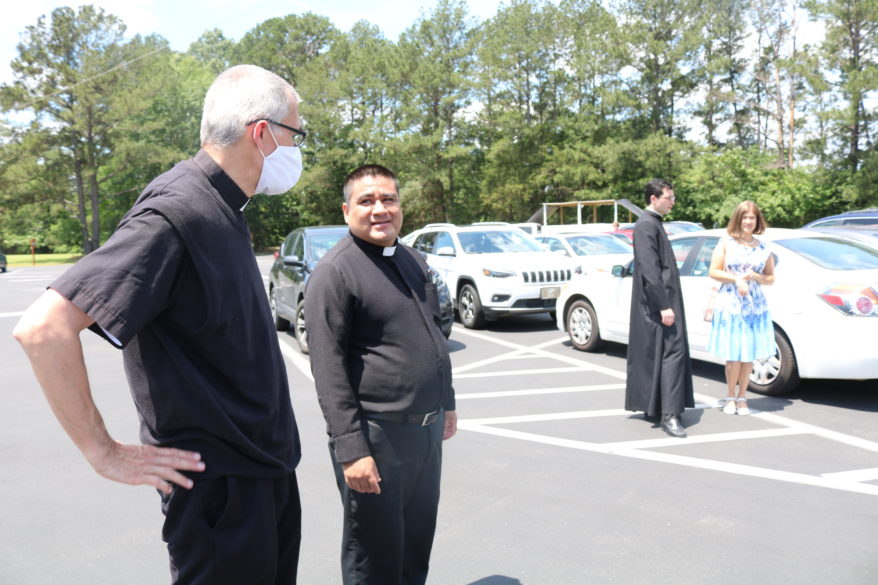
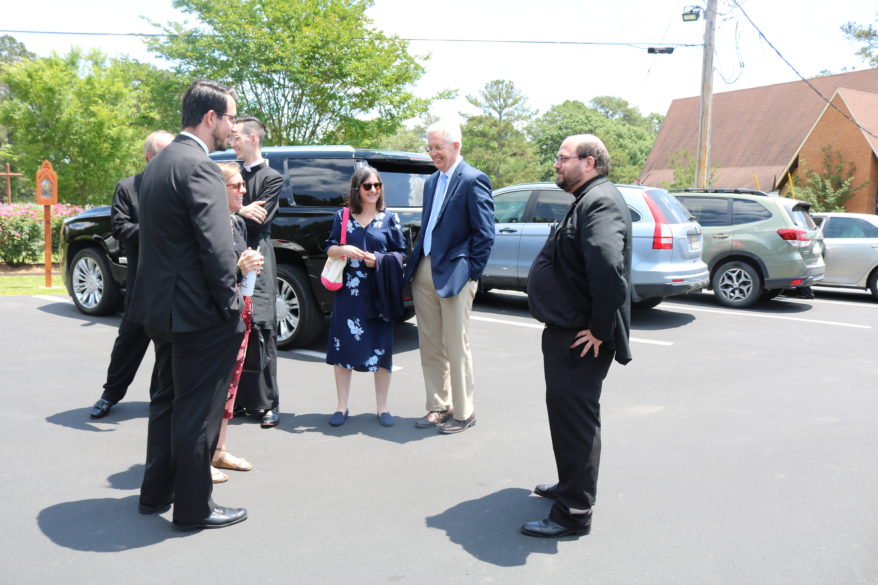
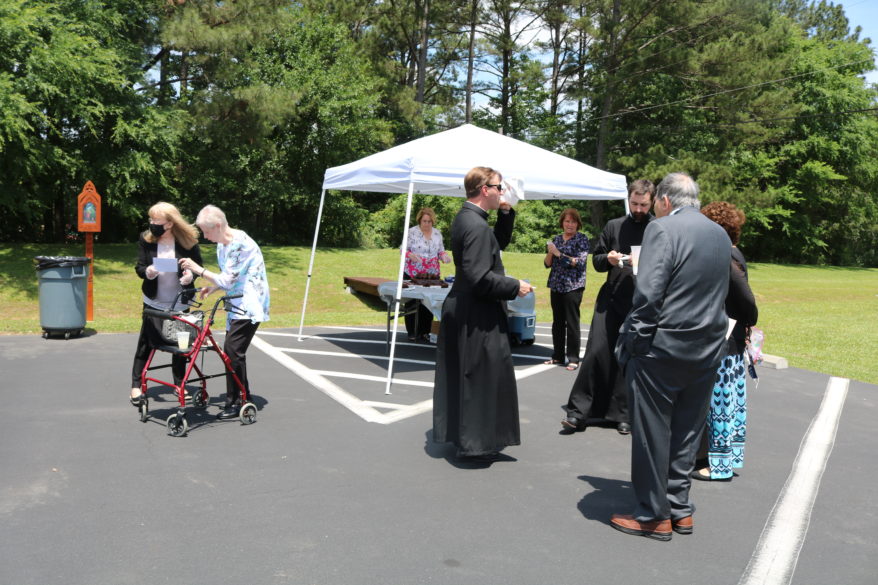

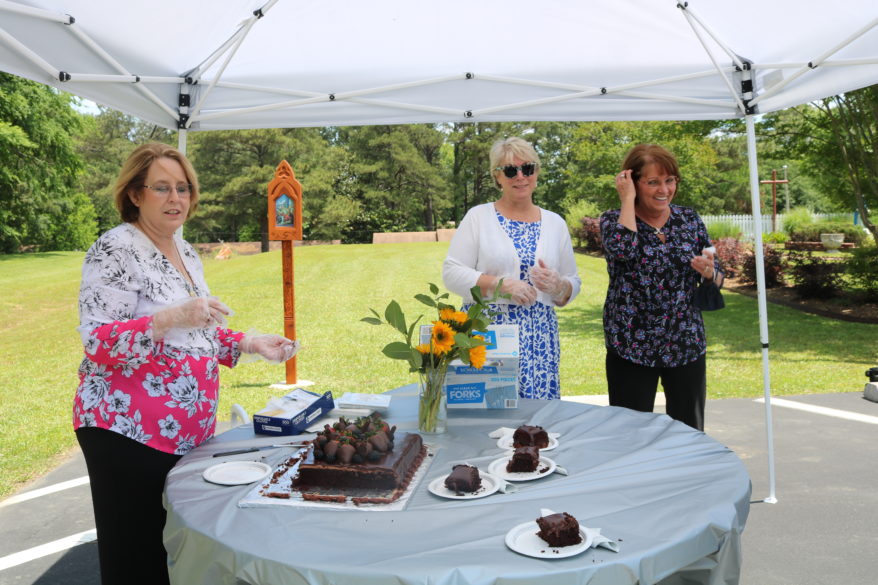
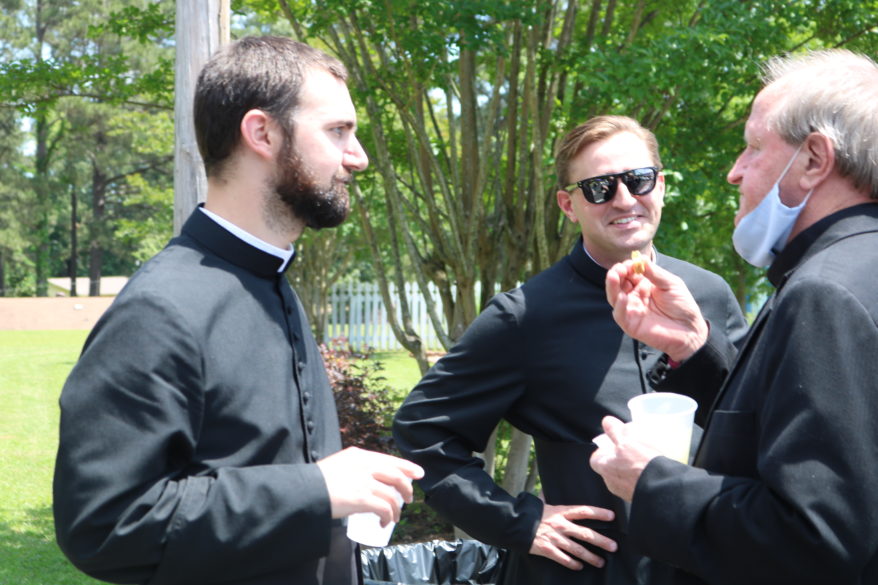
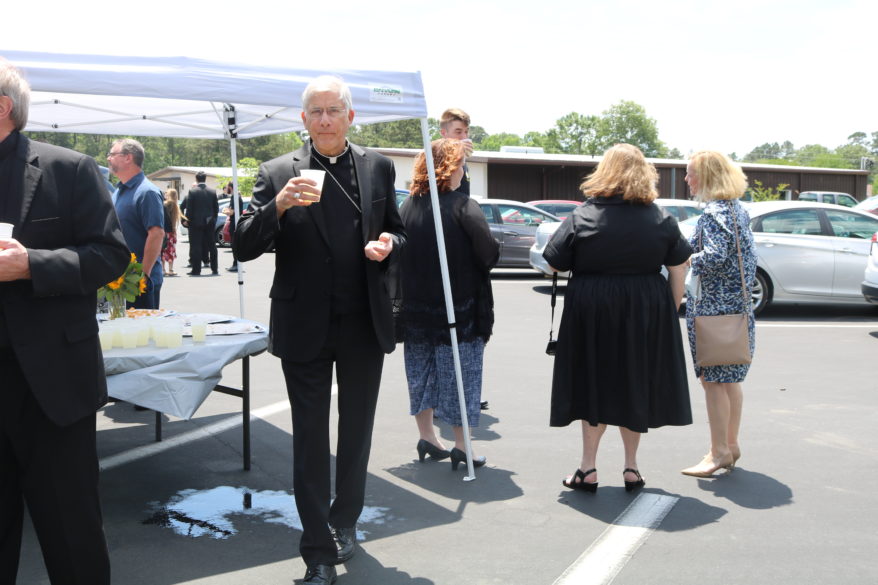
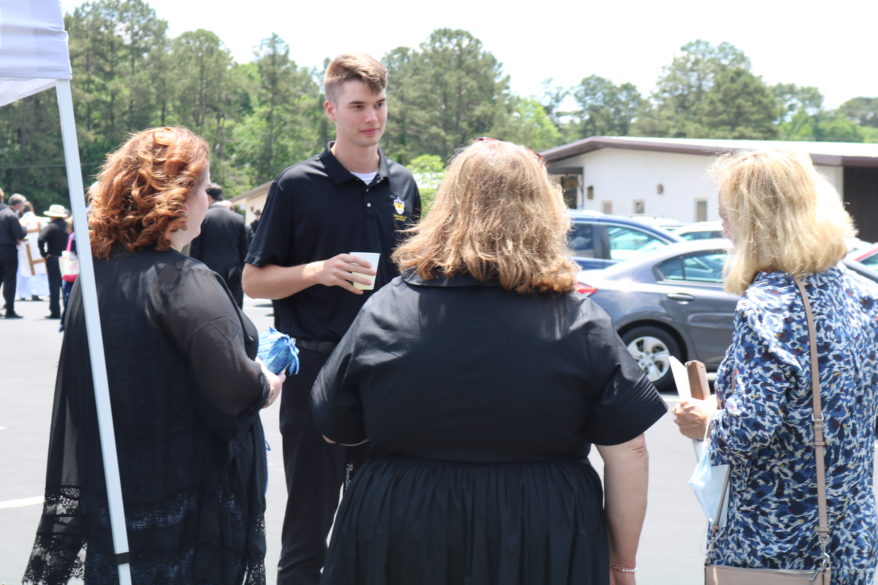
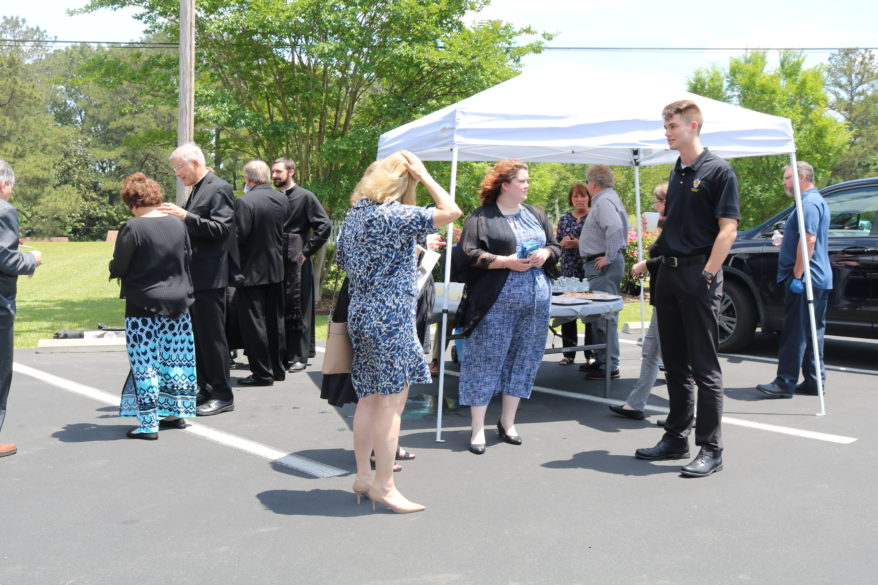
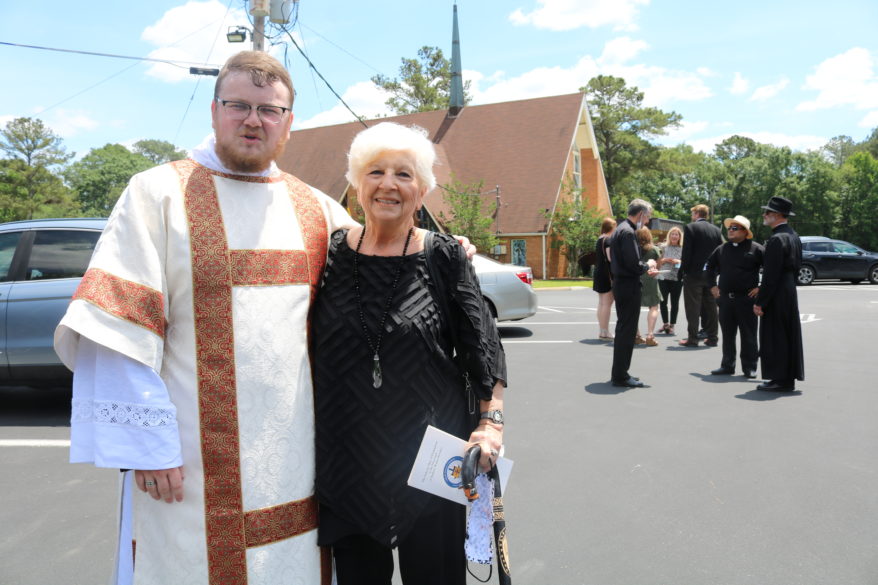
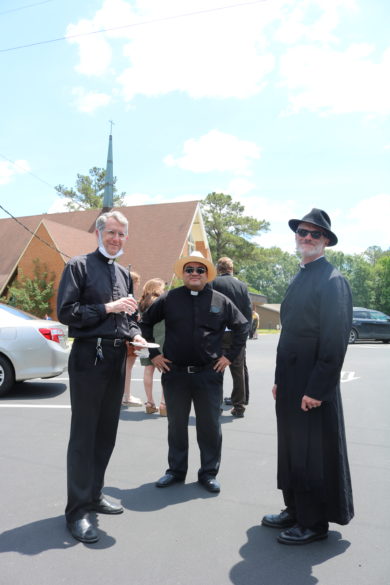

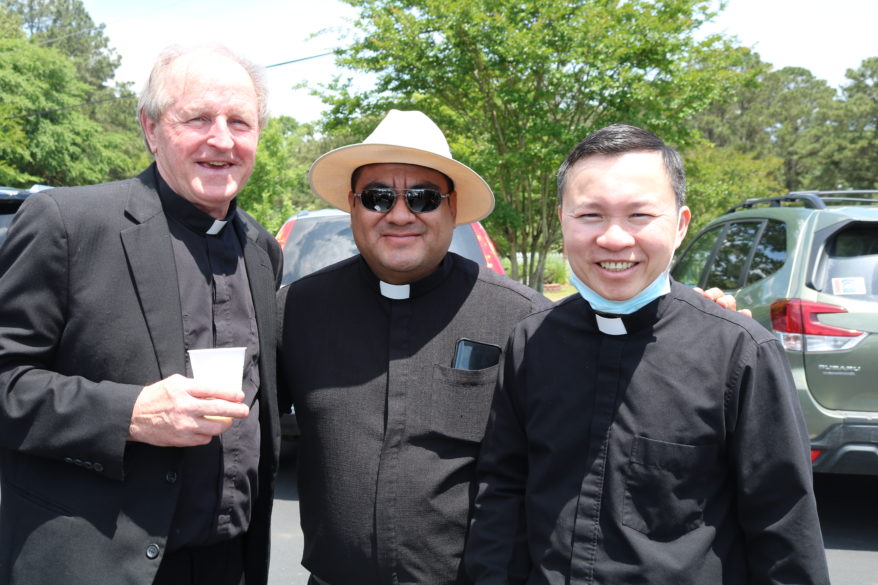
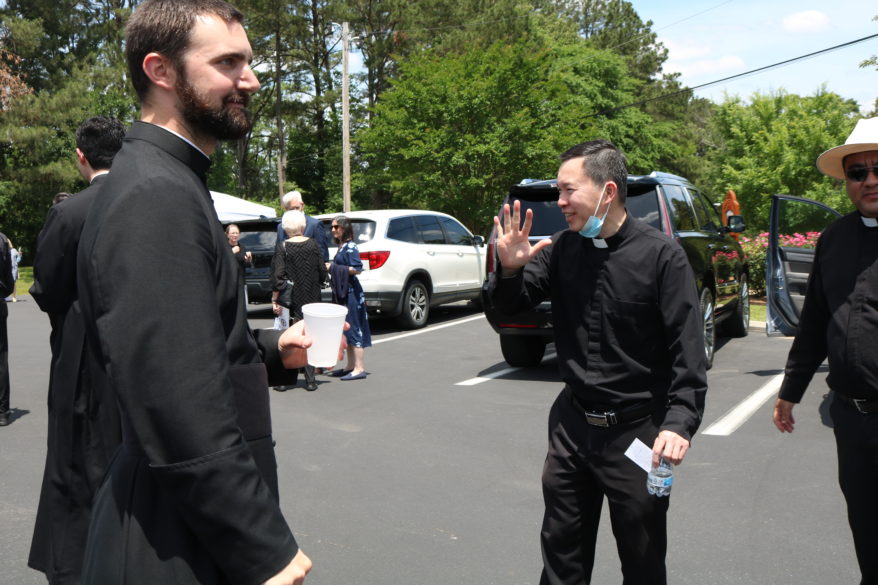

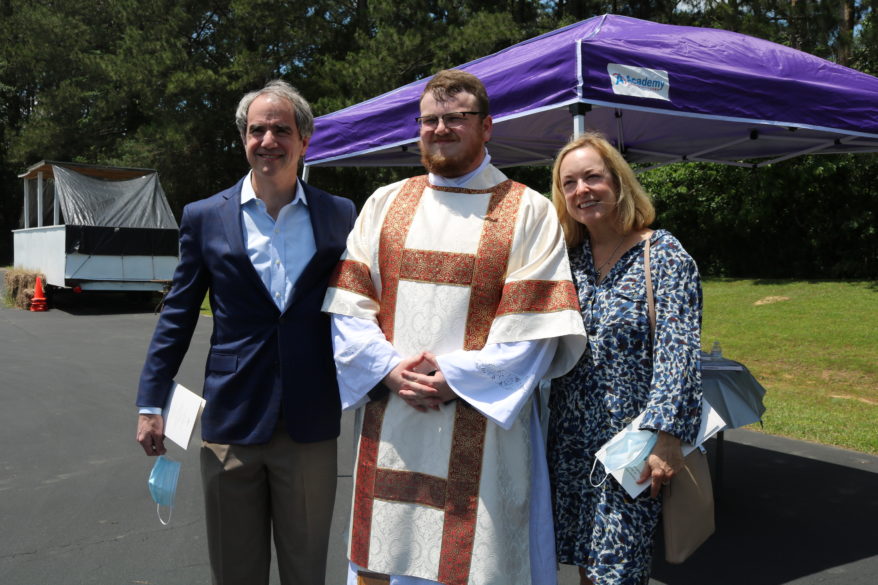
Early learning center dedicated to ‘spirit of service’
By Mary Margaret Halford Edney
VICKSBURG – In 1860, the Sisters of Mercy made their way to Vicksburg, a place with no access to formal education at that time. Within a week, the sisters had opened the town’s very first school. On May 14, more than 160 years later, the legacy of those charitable women was honored at a building dedication for the town’s newest educational facility — the Sisters of Mercy Early Learning Center at Vicksburg Catholic School (VCS).
“By dedicating this building today, we’re opening the door to share that spirit of service, beginning at the very earliest ages,” said Riley Nelson, former VCS advisory council president. “We pray that each child who enrolls here will grow up equipped with the values that were so important to the Sisters of Mercy — spirituality, community and putting others above yourself.”
The ceremony began with an opening from the center’s director, Katie Emfinger, followed by an invocation from Bishop Joseph Kopacz. St. Aloysius High School student body president Natalie Burke welcomed the crowd, and advisory council president Marion Roberson introduced city leadership in attendance.
“We cannot grow, and we will not grow without thinking toward the future,” City of Vicksburg Mayor George Flaggs told the crowd gathered in front of the new building. “This Early Learning Center is fulfilling a need in our community for more quality childcare options. To those who donated to make this possible, you couldn’t have made a better investment than you did in this facility.”
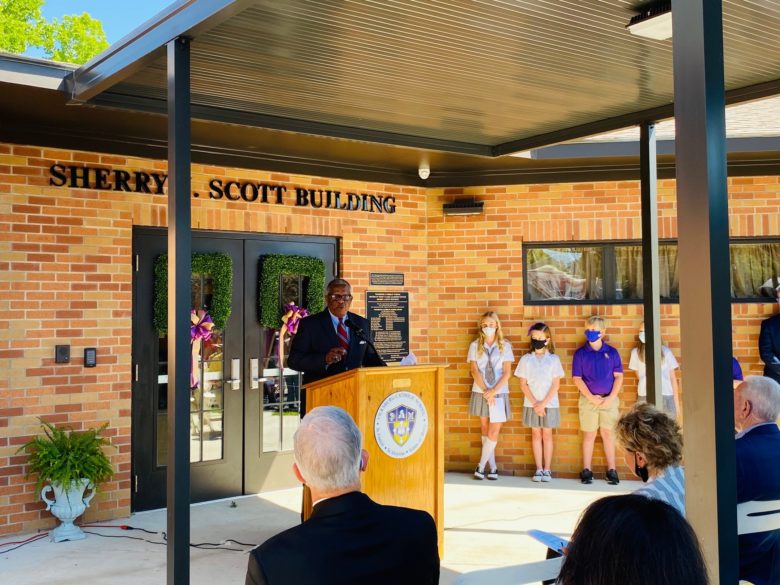
Mary Margaret Edney, a VCS advisory council member and chair of the school’s catholic identity committee, spoke about the Sisters of Mercy legacy, which will be honored and carried on through the Early Learning Center.
“When we talk about catholic identity at Vicksburg Catholic School, what we’re talking about is an environment where respect and kindness are just as important as reading and writing, where community service is taught alongside chemistry and geometry,” Edney said. “And as it turns out, those ideals have been a part of our story since the very beginning, when the Sisters of Mercy first got to Vicksburg more than 160 years ago.”
And for Sherry Scott, the sisters’ lesson of charity was one that lasted a lifetime. Because of the impact they made on her while she was a student at St. Francis Xavier Academy, she felt compelled to make a generous donation to the project.
“The Sisters of Mercy made a huge impression on me,” said Scott, the namesake of the center’s Sherry J. Scott Building. “When the opportunity came to do something in their name, my husband, Sam, graciously let me do it. They’ve been a wonderful inspiration to a lot of people, but especially to my family and me.”
“Early on, we decided to call this capital campaign ‘Continuing the Legacy,’” explained Kristi Smith, VCS development director and chair of the capital campaign to construct the new facility. “But continuing the legacy is so much more than just a name, it’s an honor and a duty. It is our responsibility to honor the Sisters of Mercy and the Brothers of the Sacred Heart with our words and actions each day. It is our duty to make sure that we instill the same values they bestowed upon us in the generations that follow.”
The 8,300-square-foot facility, which features 10 classrooms, will open June 1 for infants to three-year-olds.
St. Dominic Behavioral Health celebrates 50 years with celebration, live art
By Joanna Puddister King
JACKSON – To celebrate five decades, doctors, staff and program partners gathered to celebrate St. Dominic Behavioral Health on their campus on Friday, May 14. The present facility located on St. Dominic’s north campus was built in 2013 and currently has three patient care units with a total of 77 bed adults, senior and in-patient and outpatient programs, including outreach efforts for the community.
At the event, Sister Dorothea Sondgeroth, current foundation associate executive director, shared remarks about the past, explaining that the program had its beginnings in 1971 with a psychiatric unit on the sixth floor of the main hospital on the south campus. In 1992, the psychiatric unit was moved to the north campus when St. Dominic acquired the land.
Also on hand at the event, was Dr. Kathy Crocket, executive director of Hinds Behavioral Health Services, who talked about the organizations shared history with St. Dominic Behavioral Health. Hinds Behavioral began in 1971 as the Jackson Mental Health Center and was attached to St. Dominic’s until 2004 when the name changed to Hinds Behavioral explained, Crocket. “I am proud to say that we continue to have a great partnership with St. Dominic’s Hospital,” said Crocket. “We look forward to continuing that partnership for many years to come.”
Mental health hits home for Dr. Jared Taylor, a staff psychiatrist at the center. He explained that millions of people have been helped through mental health services. “When I think about 50 years of Behavioral Health Services, I think about the millions of people who have been positively impacted by mental health. And when I say millions of people, I am not only talking about patients, but I am also talking about family members and friends.”
Taylor grew up in Jackson with a father, who suffered from schizophrenia. “Unfortunately, he did not get the help that he needed and so part of my goal as a psychiatrist is to help as many people as possible, so the same type of instance doesn’t occur again,” said Taylor.

He also talked about the increased rates of depression and anxiety that the COVID-19 pandemic has brought on across the world; and that mental health is needed now more than ever.
Senior director, Bonnie Moore talked about some of the “wins” in her tenure at Behavioral Health, that included working with the FBI to help a lost and confused woman find her family. “We have a great team that is always thinking outside the box,” said Moore.
“Not everyday brings us uplifting experiences but here at St. Dominic’s Behavioral Health, everyday does offer a chance to show kindness to someone,” said Moore.
The celebration also included a commissioned live artistry by Kerry Jackson. While panelists spoke, Jackson completed a painting that will hang in the Behavioral Health lobby. Jackson travels the world communicating the Gospel using visual arts and traveled to his hometown of Jackson from Marietta, Georgia to be a part of the celebration.
Beginning with name tags with mental health disorders and symptoms, Jackson began painting various colorful shapes. It took a while, but the picture began to come together, and the crowd realized Jesus was there for comfort and support.
In his blessing for the celebration, Bishop Joseph Kopacz gave thanks to God. “Loving God, we give thanks for this joyful celebration of the 50th anniversary of the St. Dominic’s Behavioral Health Center, that has been a haven of safety, healing and hope for many who have passed through these doors. We thank you for generations of dedicated staff, who have accompanied those in the need of the services of mental, spiritual and physical wellbeing.”
(St. Dominic’s Behavioral Health Services strives to provide quality and compassionate treatment to individuals and their families suffering from mental illness. Their goal is to help each individual and their family achieve the best possible outcome. Assessment and referral specialists are available 24 hours/7 days a week at 1-800-632-5907.)


